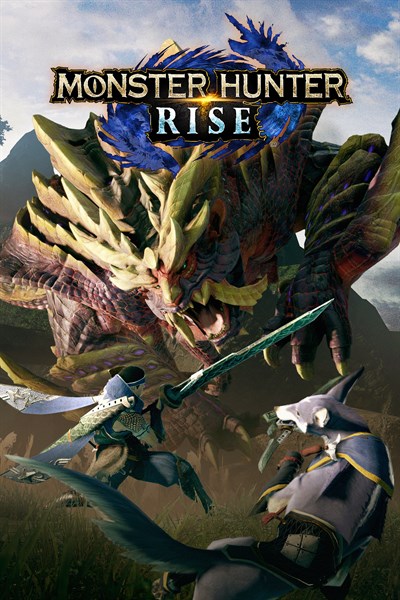Read more of this story at Slashdot.
Ronald.phillips
Shared posts
Streaming Free: 'Three-Body Problem' Sci-Fi Novel Adaptation by Tencent Video
The 15 Best Adam Driver Movies, Ranked
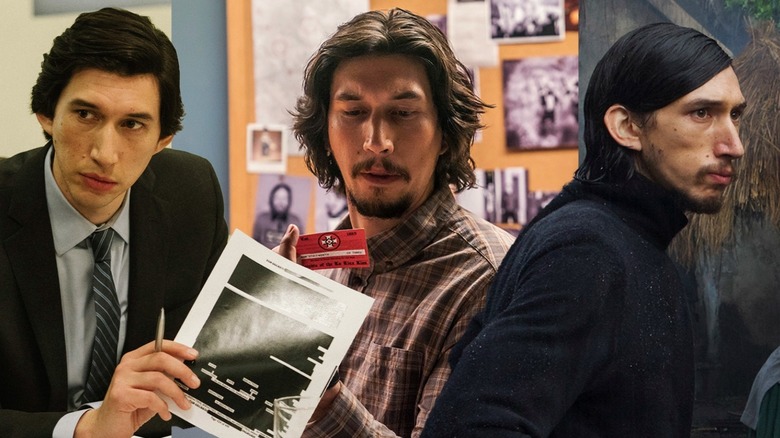
Some performers just seem to have that indescribable "it factor" -- and when it comes to Adam Driver, boy, does he have it. After gaining prominence in a lead role in the HBO hit series "Girls," Driver has catapulted to superstardom. Driver established himself as an actor who likes to take risks and work with all kinds of unique creators, and that's something that's remained key to his success.
The breadth of Driver's work is undeniably impressive. He's done everything from taut political thrillers to voice work to massive blockbusters, never once compromising on his talent. There are a lot of impressive movies in Driver's filmography (not to mention multiple Oscar nominations and several other accolades), and he has built up a career that most could only dream of. But what are his very best films? Well, that's what we're here for. Let's dive into the 15 best Adam Driver movies, ranked.
The Dead Don't Die
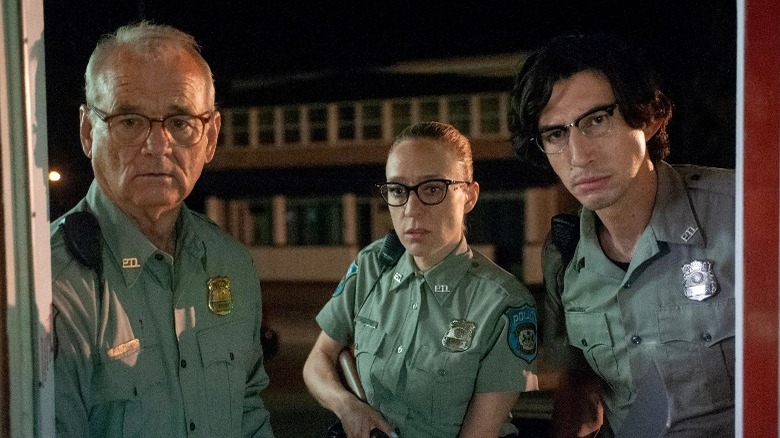
Adam Driver has never been an actor to back down from movies that like to get weird -- in fact, judging by his filmography, he seems to relish them. Speaking of weird, it doesn't get much stranger than Jim Jarmusch's "The Dead Don't Die." The film opened the 2019 Cannes Film Festival, but it's not your typical festival fare. The zombie film has an outstanding cast including Bill Murray, Tilda Swinton, Chloe Sevigny, Selena Gomez, Tom Waits, Steve Buscemi, Danny Glover ... and of course, Adam Driver.
Driver stars as police officer Ronnie Peterson, and what was supposed to be a normal day gets weird fast. Or rather, not so fast, as what sets "The Dead Don't Die" apart from other zombie movies is its irreverent, lackadaisical attitude towards just about everything. Its tone is unlike anything you've seen in a film like this before, and while there certainly is panic over people literally rising from the dead, the officers are awfully chill about the whole thing. The film is a lovely oddity (there's a zombie that chants for chardonnay instead of brains), and while it's sometimes a little too off-kilter for its own good, Driver is spectacularly deadpan.
Inside Llewyn Davis
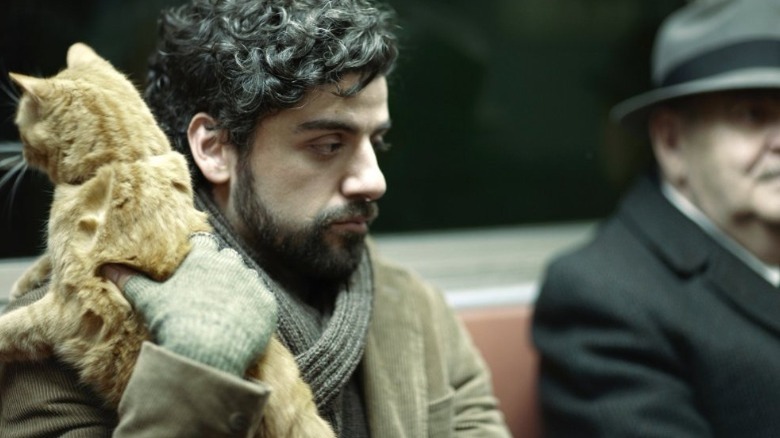
It's easy for filmmakers to fall into a certain level of familiarity, but when it comes to the Coen Brothers, you really never know what you're gonna get. Case in point: After directing the western remake "True Grit," they helmed "Inside Llewyn Davis," a film about struggling folk musician Llewyn (Oscar Isaac) in New York City in the early '60s.
"Inside Llewyn Davis" is a wonderful film that rewards audiences more with each subsequent viewing. While Driver is certainly memorable, it's one of his smallest roles, only appearing in the film for a couple of minutes. But man, does Driver know how to make the most of his time. His portrayal of Al Cody is an absolute delight, stealing the show in a performance of "Please Mr. Kennedy." Every line reading is gold, and "Inside Llewyn Davis" is our first glimpse into Driver's surprising and impressive musicality. I could listen to him sing "uh-oh" and "outer space" all day long.
Star Wars: The Force Awakens
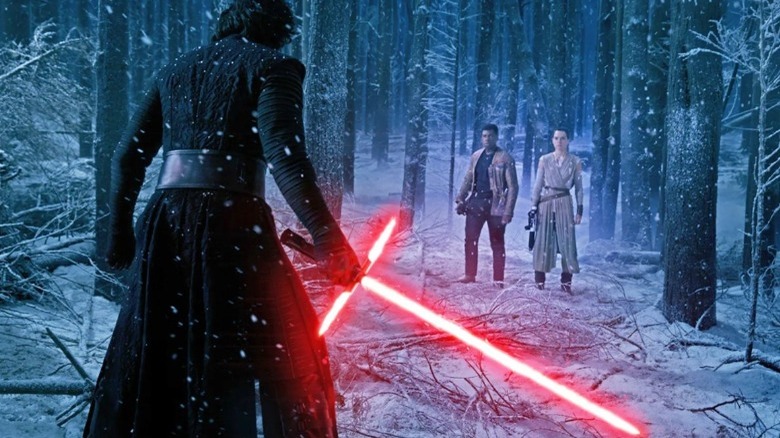
The excitement was palpable when (yet another) "Star Wars" trilogy was announced. After watching the stirring trailer, how could it not be? An entirely new story with the original legends returning had fans (and myself) salivating for more stories in the "Star Wars" universe. While it wasn't likely to match the glory of the original trilogy, surely it couldn't be worse than the prequels. That prognostication turned out to be dead-on, as J.J. Abrams' "Star Wars: The Force Awakens" proved to be a hugely successful crowdpleaser, even if it felt overly familiar -- when it comes down to it, it's basically "A New Hope" with a fresh coat of paint. But hey, that's some pretty great paint.
The film also provided a massive opportunity for Adam Driver, who had been in quite a few indie productions and the odd minor role in bigger films. This time around, Driver was playing the main villain in a "Star Wars" movie. His Kylo Ren is moody and vicious, and he's responsible for one of the most heartbreaking moments in the storied franchise. It's an exciting performance for Driver, and while we don't get a whole lot of his character in "The Force Awakens," it's clear there's plenty to come for the baddie.
The Report
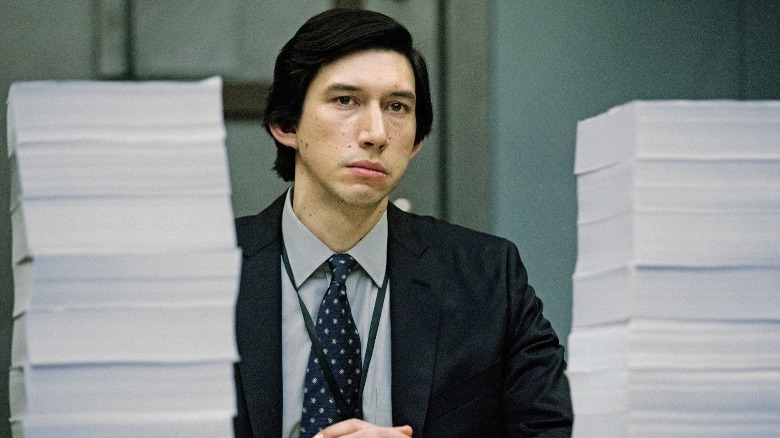
A regular collaborator with Steven Soderbergh, Scott Z. Burns (who wrote "Contagion," "Side Effects," and "The Informant!") made his directorial debut in 2019 with "The Report." The film is a terse and tense political thriller that follows political staffer Daniel Jones (Adam Driver). Jones finds himself in a prickly situation with quite the task: He must investigate the CIA's Detention and Interrogation program, which shifted in a post-9/11 world.
What could have been a routine assignment in someone else's hands becomes a mammoth challenge for Jones, who becomes deeply frustrated by how inaccessible his job has suddenly become. Practically everything Jones comes across is heavily redacted, which spurs him to push for the answers, risking his career and his personal safety in the process. "The Report" almost feels like a horror movie at some points, as if some sort of monster will burst through the walls of the dimly lit, office in which Jones does his work. The film occasionally feels a bit too clinical in its approach to ... well, clerical work, but the intensity rarely wavers, and Driver is impressive as a man desperate to uncover the truth.
Logan Lucky
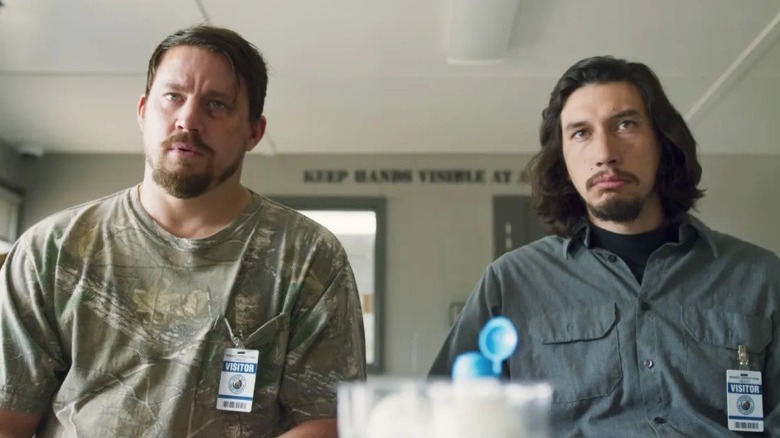
To paraphrase "Forrest Gump," you never know what you're gonna get with Steven Soderbergh. The filmmaker has made just about every kind of film you can imagine, and he also releases films at a truly impressive rate. At one point, Soderbergh was actually on a self-imposed hiatus, but it was a high-octane racing heist movie that brought him out of the woodwork to where he belongs: directing great movies.
Changing things up with a surprising burst of color, 2017's "Logan Lucky" follows two brothers -- Jimmy (Channing Tatum) and Clyde Logan (Adam Driver) -- fed up with the state of things, determined to take life into their own hands. They devise a plan to do the unthinkable, planning an epic heist during a NASCAR event. It's not exactly what you'd expect from a construction worker and a bartender, but both use their considerable real-world expertise -- including Clyde's time in the military -- to try and make the impossible possible. Soderbergh is no stranger to the heist movie; in fact, it's typically where he's operating at the highest level. "Logan Lucky" is a funny and exciting movie that's grounded with surprising earnestness and great performances from Tatum, Driver, Daniel Craig, and Riley Keough. A worthy addition to Soderbergh's heist movies, which include "Ocean's Eleven," "Out of Sight," and "No Sudden Move."
Frances Ha
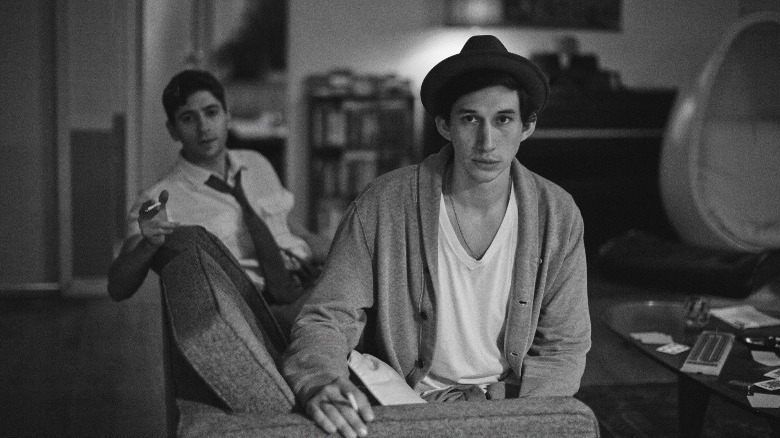
One of Driver's earliest film roles, and his first of many collaborations with Noah Baumbach, was 2012's "Frances Ha." The film follows Frances (a magnetic Greta Gerwig, who also co-wrote the script), a dreamer trying to find a sense of purpose. She crashes with Benji (Michael Zagen) and Lev (Adam Driver), struggling to hold down meaningful -- or even lucrative -- work as a dancer.
"Frances Ha" is absolutely brilliant, and if this was just a list of the best films Driver appeared in, it would almost certainly be at the top. But it's not really much of a Driver film, per se, as he only appears in a few scenes -- though he is downright charming as Frances' roommate and friend Lev. It's a fun, but not especially impactful part, and there aren't really any special moments that make you remember Driver after the credits roll. Still, "Frances Ha" is a sensational exploration of millennial life and that difficult-to-explore feeling that you're not where you should be in life.
White Noise
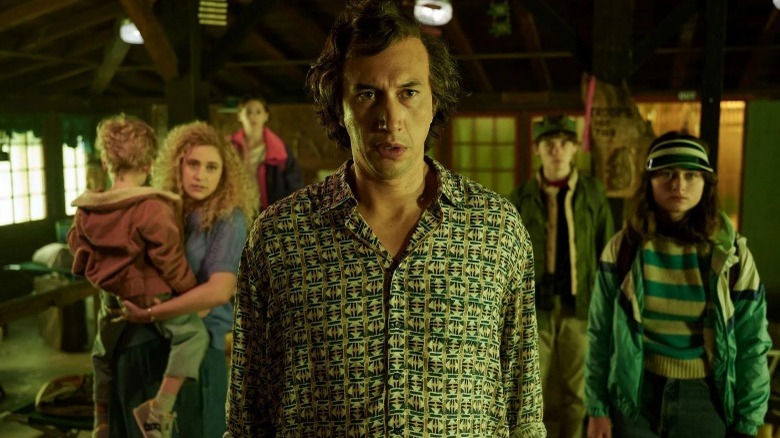
If exploring Adam Driver's career reveals one thing, it's that Driver is an actor who loves taking risks. Challenging narratives and avant-garde experimentation are never off the table, and "White Noise" may be the strangest film in Driver's entire oeuvre. The film, written and directed by frequent collaborator Noah Baumbach, is based on the novel of the same name by Don DeLillo, a book so labyrinthine and all over the place that it seems utterly unfilmable.
When watching "White Noise," it's pretty clear that Baumbach is working with some complicated material that's downright wacky. The highly satirical film finds Driver playing professor Jack Gladney, who teaches Hitler studies (yes, really). He's with his fourth wife, Babette (Greta Gerwig), and appears to have the dream suburban family life. But when a bizarre happening occurs, known as "The Airborne Toxic Event," it sends the Gladney family in a tailspin, as they evacuate their home to try and stay alive. "White Noise," to its credit, is impossible to predict, and there's a lot of fun to be had as the plot careens in every imaginable (and unimaginable) direction.
The Last Duel
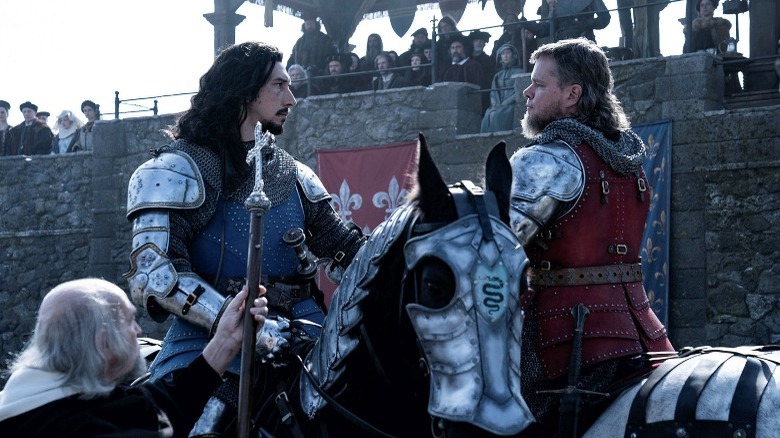
While a lot of film lovers know Adam Driver for his villainous turns in the "Star Wars" movies, he's largely known for playing quirky, charming, complicated men. Even Kylo Ren has more to him than just being evil. But Driver took a risk, signing onto Ridley Scott's historical epic "The Last Duel." He plays Jacques Le Gris, and there's no sugarcoating it: this man is seriously evil. There's not one redeeming quality in Le Gris's personality, and it's no easy task to play a man of such relentless nastiness.
"The Last Duel" isn't an easy watch. The film follows an accusation made by Marguerite de Carrouges (Jodie Comer) that she was raped by Le Gris. Marguerite's husband, Jean (Matt Damon) is furious, and stands by his wife, leading to a gritty, violent duel to the death. What makes the film special is the way the narrative unfolds, echoing Kurosawa's "Rashomon," as we see the story from the perspectives of Jacques, Marguerite, and Jean. It's a shame "The Last Duel" didn't get more attention, crashing at the box office before winding up on streaming. This is the kind of sophisticated, adult film that doesn't get made much these days, and that's unfortunate.
Star Wars: The Last Jedi
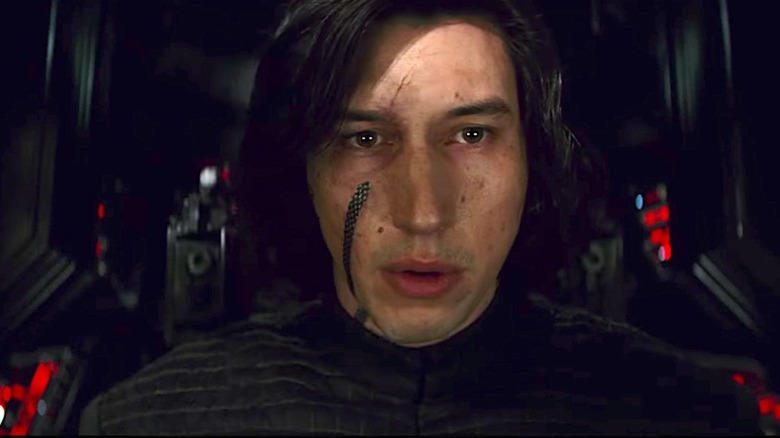
Look, making a "Star Wars" film isn't easy. The fanbase is quite possibly the most rabid of all fanbases -- and in the days of social media, that's really saying something. That said, I'm always surprised when I think of "Star Wars: The Last Jedi" and remember that a lot of fans have so much vitriol towards it, especially when it's such an excellent movie. That didn't stop it from making a ton of money, of course, grossing over $1.3 billion at the worldwide box office. King of the murder mystery Rian Johnson took the helm for the eighth installment, which featured an expanded role for new big bad Kylo Ren (Adam Driver).
I doubt I need to tell you anything about the film -- you've either seen it loads of times or are inexplicably averse to "Star Wars" entirely. But what you need to know is that it's a really stellar showcase for Driver, who gets to be downright evil, but with an emotional vulnerability that's become a trademark of his best work. Thankfully, Driver also gets to be a bonafide badass, culminating in an epic showdown against Luke Skywalker (Mark Hamill).
BlacKkKlansman
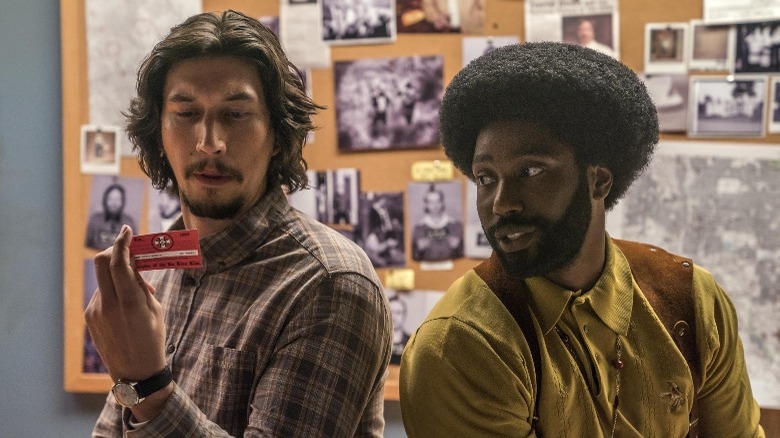
Spike Lee reminded everyone that he's one of the greatest living directors with his enthralling and essential crime drama "BlackKkKlansman." The film tells the improbable, but true story of an African American detective and his Jewish co-worker teaming up to infiltrate and attempt to take down the Ku Klux Klan in Colorado Springs. Driver plays Philip "Flip" Zimmerman, who's tasked with going undercover into an organization that wants his very existence wiped out.
It's a tough and meaty role that Driver knocks out of the park. His performance showcases the two sides of Flip's world: him in his real life and his undercover existence. His undercover personality is a far cry from his true self -- vicious, rage-filled, and hateful. His sudden bursts of ferocity are tough to stomach, but they must be even harder to Flip, who has to convincingly be antisemitic when he himself is Jewish, let alone saying aggressively racist things that his Black partner has to hear. It's a brutal job, but somebody's got to do it, and Driver finds impressive humanity in a man torn between his commitments and his true feelings. The Academy was impressed too, bestowing upon Driver a nomination for best supporting actor.
Silence
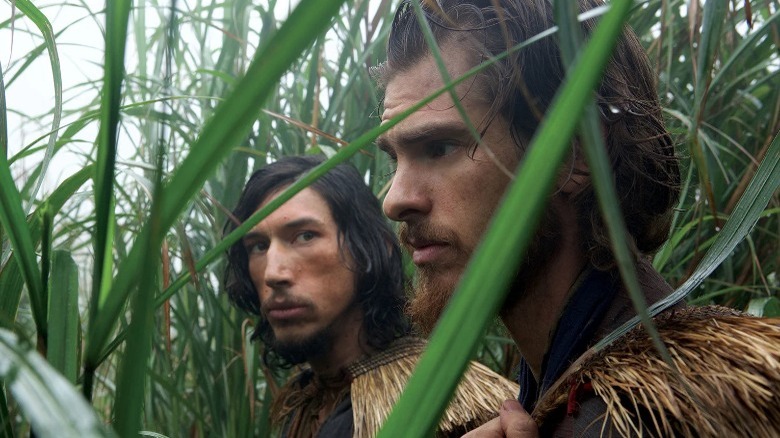
Martin Scorsese is revered as one of the great filmmakers for a reason. His films tackle every imaginable genre, though Scorsese's most personal films often tackle weighty themes, like faith. His faith-focused film, "Silence," is one of his most unflinching works. It's also one of his best. Released in 2016, "Silence" follows two Catholic missionaries, Garupe (Adam Driver) and Rodrigues (Andrew Garfield), as they make their way to Japan to attempt to find their mentor, Ferreira (Liam Neeson), who's vanished ever since going to Japan himself. Set in the 17th century, the missionaries face tremendous difficulty in their quest, as Catholicism is deeply suppressed in the nation, and punishments for practicing it are severe.
Scorsese's "Silence" doesn't pull any punches -- it's an incredibly challenging film, and those who carry religious trauma with them may be best avoiding it. But for those up for this epic, there's a tremendous amount of reward. Both Driver and Garfield give searing performances as men utterly bound by their faith. Scorsese's work is full of powerful moments that remind you of what incredible screen presence Driver has, and that Scorsese as a filmmaker only seems to get better with age. "Silence" is a towering achievement that needs to be seen, and Driver is a huge reason why.
Marriage Story
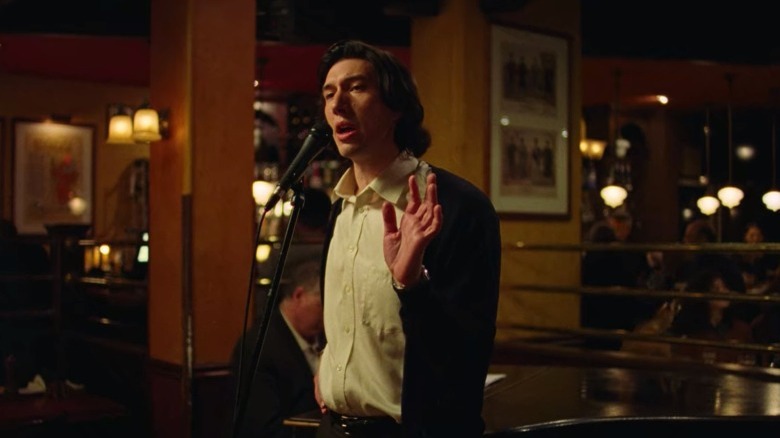
As you can see from this list, Adam Driver has worked with a very impressive array of filmmakers. His most frequent collaborator is Noah Baumbach, who he teamed up with for the intimate, challenging, and beautiful character study, "Marriage Story." It's exactly what you'd expect from the title: an exploration of a relationship between Nicole (Scarlett Johannson) and Charlie (Adam Driver). While marriage is certainly central to Baumbach's film, "Marriage Story" is actually an exploration of the dissolution of marriage; specifically the process of divorce. It's unwavering in its examination of how complicated, costly, and difficult the process can be.
While it's not my favorite Baumbach movie on this list (that would be "Frances Ha"), "Marriage Story" provides an incredible platform for Driver to process every possible emotion and remind everyone what a formidable talent he is. It's one of the biggest roles in his career, and he shows extraordinary vulnerability and passion that proves he's one of Hollywood's best leading men. Just watching his rendition of Stephen Sondheim's "Being Alive" is enough to break you.
What If?
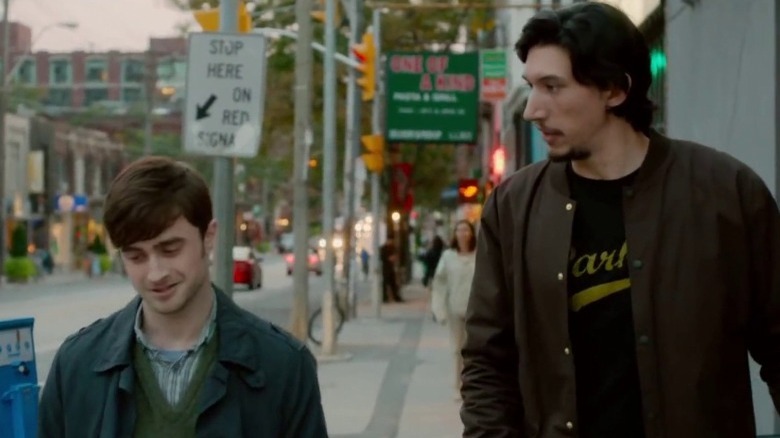
What's that? You've never heard of the Canadian romantic comedy "What If?" Well, my friend, you are in for one heck of a treat. Michael Dowse's film takes place in Toronto, where Wallace (Daniel Radcliffe) meets Chantry (Zoe Kazan), falling head over heels for her. Only problem: she has a boyfriend. So, the pair begin a friendship and are there for each other every step of the way. The film makes great use of its Toronto setting, which is so often disguised as various American locations, but "What If?" makes the case that the Canadian city is a perfect fit for the rom-com genre.
Driver delivers a performance that showcases what makes him such a gifted actor as Allan, Wallace's best friend. He's loud, hilarious, a bit annoying, and honestly, everything you could ever want in a friend. He offers Wallace valuable (and not-so-valuable) advice. Driver's role is the very definition of a scene stealer -- the movie is refreshing and extremely sweet, but every time Driver is on screen, you can't see anyone else. He also delivers a truly spectacular line reading about nachos which will live in your mind long after the film's over. And it'll also make you make nachos. Totally worth it.
Paterson
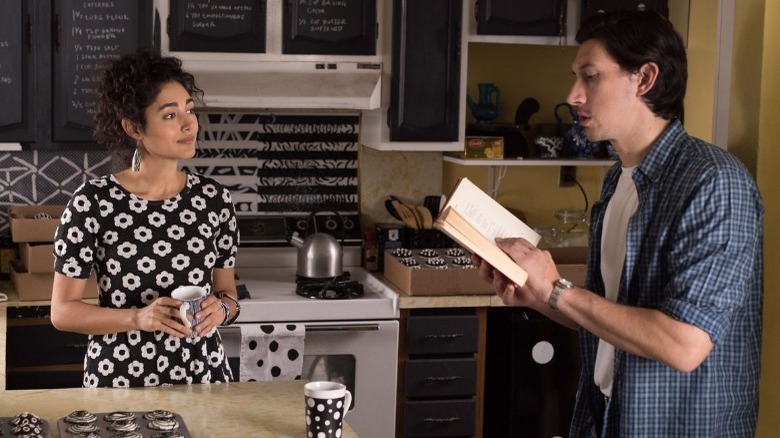
Jim Jarmusch's first collaboration with Adam Driver was so small you'd be forgiven for skipping it. But "Paterson" is an absolutely essential film that effectively explores what makes Driver such a tremendous actor. He plays Paterson, a bus driver in Paterson, New Jersey who loves writing poetry whenever he can. Paterson's poems are insightful and charming, and his words appear on the screen as he writes, creating an intoxicating effect, immersing us in Paterson's quiet world. His wife Laura (Golshifteh Farahani) loves his work and believes bigger things are destined for Paterson than his bus driver job, and urges him to try and get his work published.
Jarmusch has always been adept at exploring intimate human detail, and Driver provides the perfect muse. "Paterson" thrums with heart and purpose, as it examines inner beauty in unexpected places. It's a sweet, savory experience that makes you feel so much better about the mundanity of life. What more could you want from a film?
Annette
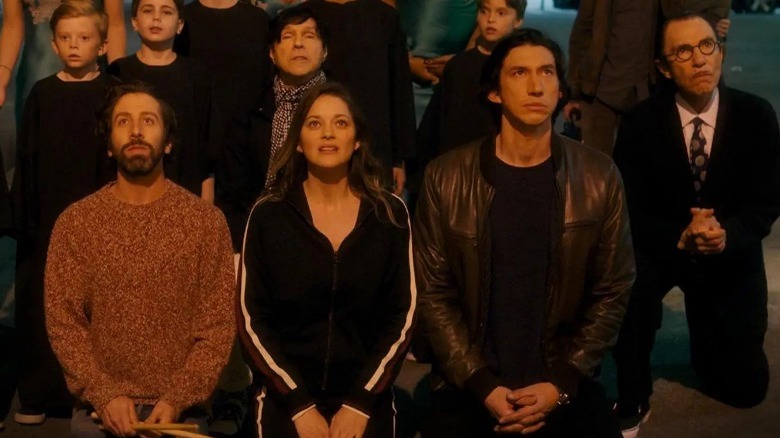
Leos Carax is arguably one of the most exciting filmmakers alive. You truly never know what to expect from the director, but you can prepare for risks that few others would dare to make. From "Holy Motors" to "The Lovers on the Bridge," Carax has reveled in astonishing audiences. Case in point: "Annette," Carax's first English-language film, a musical written by The Sparks Brothers.
The film revolves around Henry McHenry (Adam Driver), a successful stand-up comedian whose routines feature a healthy dose of incendiary humor, and his tumultuous relationship with his far-more-successful wife Ann Desfranoux (Marion Cotillard), a hugely acclaimed opera singer. They have a child together named Annette, whom they discover has a remarkably beautiful singing voice. The birth of their child threatens to change their lives, and those around them, forever. Annette soon becomes a star at a young age, which makes things incredibly complicated. Oh, and Annette is a puppet. Believe me, it all somehow makes sense when you see it.
"Annette" is bold and unique, absurd yet grounded. Driver is magnificent in the lead role, playing an oftentimes detestable man you want to root for. It's the perfect film that emphasizes what makes Driver so exciting. He loves working with visionaries and creatives that are unafraid to push boundaries, just like Driver does with his work.
Read this next: Every Martin Scorsese Feature Ranked From Worst To Best
The post The 15 Best Adam Driver Movies, Ranked appeared first on /Film.
Attack The Block Director Joe Cornish Wants To Make A Bigfoot Movie (And We Want To Watch It) [Exclusive]
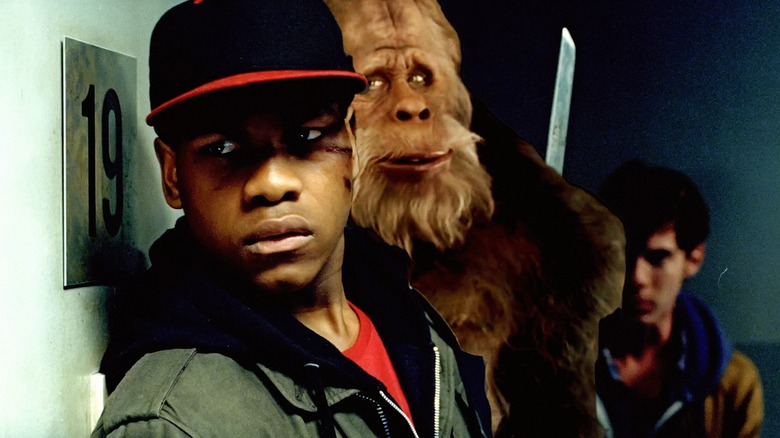
Joe Cornish, the writer-director of "Attack the Block" and showrunner behind the upcoming Netflix series "Lockwood & Co.," has a hankering to make a Bigfoot movie. It turns out that Cornish, a self-described "Bigfoot obsessive," is itching to do right by a genre that may not even be fully formed in everyone's eyes. Think about it: can you name five great Bigfoot movies ... or even one? How about 47 of them, ranked?
It's a sad state of affairs when the most well-known Sasquatch onscreen may be Harry from "Harry and the Hendersons." Not that there's anything wrong with Harry, who went on to star in his own sitcom and whose makeup design won Rick Baker an Oscar in the interim. But here's a fun fact about Harry: he was played by Kevin Peter Hall the same year Hall played the original "Predator."
It feels like we're owed a movie where Bigfoot, too, is a predator, preying on humans, not unlike the alien invaders in "Attack the Block." That's one idea, anyway. Ahead of the release of "Lockwood & Co.," /Film's Jack Giroux recently spoke with Cornish, who mentioned that he has his own "idea for a Bigfoot movie percolating." The filmmaker said:
"Sometimes I think about genres that nobody's done well, and the thing about Bigfoot is there are a couple of really good movies, like 'The Man Who Killed Hitler and Then the Bigfoot.' I love that movie. There's a lot of really good stuff in 'Legend of Boggy Creek,' and there are a lot of really good '70s ones, but nobody's done the really f****** great movie in the way that, do you know what I mean? It's a genre that feels like it's waiting for the prestige, sophisticated, super f****** great movie to come along."
The World Needs Bigfoot
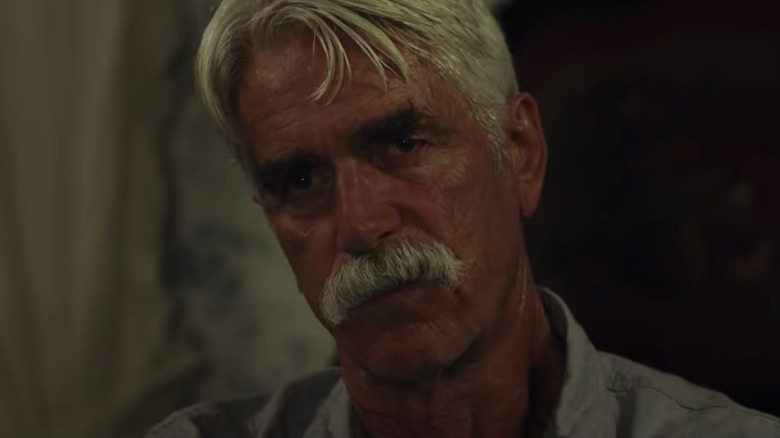
The two films Cornish mentions, "The Legend of Boggy Creek" and "The Man Who Killed Hitler and Then the Bigfoot," premiered in 1972 and 2018, respectively. They're equidistant from the turn of the millennium, and that's entirely too long between movies.
I just got done listening to the audiobook of "Devolution: A Firsthand Account of the Rainier Sasquatch Massacre" by Max Brooks, the author of "World War Z." The voice cast includes actors like Judy Greer, Jeff Daniels, Nathan Fillion, Kate Mulgrew, and Steven Weber. All I'm saying is, what's it take to get a Bigfoot movie with that kind of talent made?
"The Man Who Killed Hitler and Then the Bigfoot" did land Sam Elliot, and as recently as 2021, we've seen true-crime docuseries like "Sasquatch" tackle Bigfoot-related subject matter. But Cornish may be onto something with his talk of the need for a "prestige, sophisticated, super f****** great" Bigfoot movie (the existence of which is as elusive as Bigfoot itself). He concluded by revealing his personal connection to a place tangential to the famous Patterson–Gimlin film, which allegedly showed a real-life Bigfoot in the wild:
"[Bigfoot is] such a pervasive myth, and when I watch those things, the good ones really send a shiver up my spine in a way that no other contemporary mythology does. Weirdly, when I was a kid, I went on holiday to California and I stayed with my uncle who worked in a saw mill in Yakima, Washington. It turned out it was the same sawmill that guy Bob Heironimus worked at, who was one of the guys that people say was in the suit in the Roger Patterson film. Anyway, listen, man, you don't want to get me started on this s***. We'll be here all night."
Read this next: Horror Movies You Don't Want To Miss In 2023
The post Attack the Block Director Joe Cornish Wants to Make a Bigfoot Movie (And We Want to Watch It) [Exclusive] appeared first on /Film.
Wolfenstein 3D runs on a 1979 processor now – yes, seriously
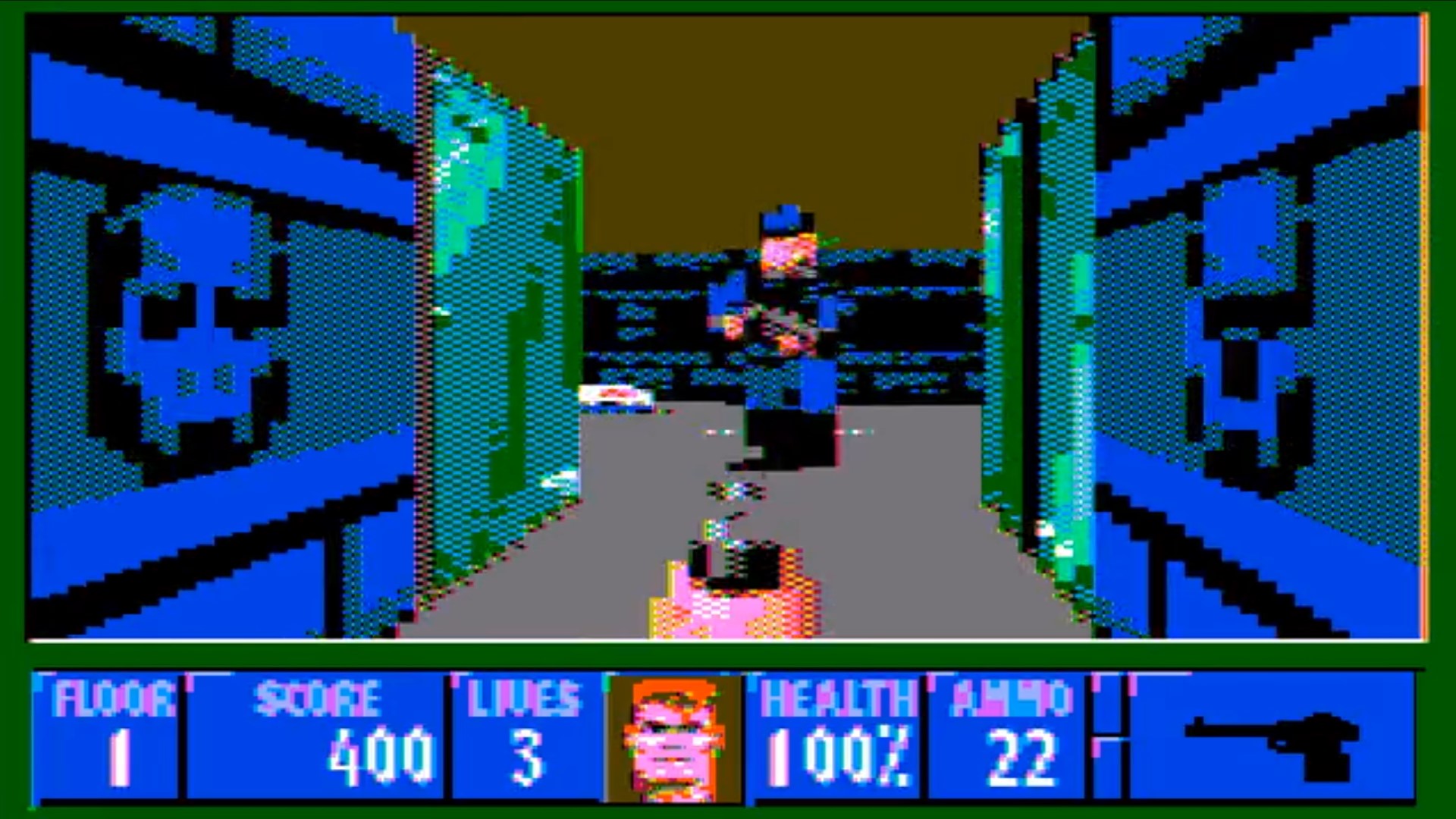
There's now a version of the groundbreaking FPS game Wolfenstein 3D that runs on a computer processor first produced in 1979. A game developer has created a version of Wolfenstein 3D that works with IBM's first colour graphics card, and all the processing power it needs is an Intel 8088 chip.
US Airline Accidentally Exposes 'No Fly List' On Unsecured Server
Read more of this story at Slashdot.
Rupert Grint Was Terrified To Work With Ron Perlman On Moonwalkers
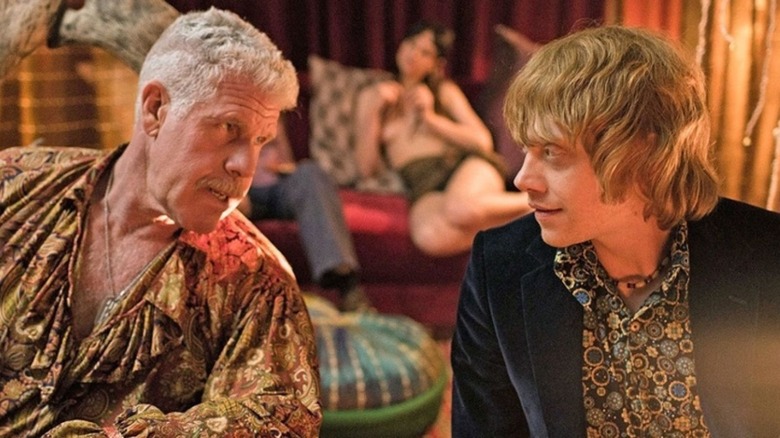
Rupert Grint may be a pop culture staple for his work as a child, but the "Harry Potter" star is low-profile on social media, selective about the projects he works on, and typically stays out of the limelight unless absolutely necessary. Until his 2015 film "Moonwalkers," Grint hadn't starred in a film in six years. Now, he's made quite the career on television, like in the shows "Snatch" and "Sick Note."
The actor seems pretty happy with the way things have been since his "Harry Potter" days — Grint has worked with award-winning filmmakers such as M. Night Shyamalan in "The Servant" and Guillermo del Toro in "Cabinet of Curiosities." And despite working with massive, influential Hollywood figures throughout his career, the actor sometimes does get a little bit star-struck. When he worked with Ron Perlman (aka Hellboy) in "Moonwalkers," Grint admitted he was intimidated by the veteran actor. He didn't associate Perlman with comedy — and his experience working with him turned out to be a surprise in many ways.
Rupert Grint Felt Intimidated By His Co-Star

Rupert Grint detailed his time working with Ron Perlman in Antoine Bardou-Jacquet's "Moonwalkers," a British crime film that explores the idea of a time when the moon landing didn't happen, in a 2015 interview with PopSugar. Grint was familiar with the actor's work but was very nervous about meeting Perlman. Luckily, he was relieved when they connected. Here's Grint's full quote from the interview:
"It was terrifying. I was so intimidated and nervous to meet him — he's Hellboy! But he was so sweet, so much fun, and so funny. You don't equate him with comedy, but he's hilarious. The scene of our characters tripping on acid took us hours to get through. We couldn't hold it together."
The actor later told IGN that Perlman came across as "an imposing guy" when they first met, and he was "quite scared." When Grint was finally acquainted with his co-star, it was easier for him to be more comfortable around him. The two shared plenty of laughs together, which made it impossible for them to film certain scenes in one take.
"He's really sweet and hilarious and has so many stories. He's hilarious and fascinating to be around and he's really funny as well. You don't really associate him with comedy but he was cracking us up, especially in that scene where he's tripping acid. I remember it took us a few takes to get that right."
Perlman anchored "Moonwalkers" with the physicality of his performance, while Grint had an opportunity to bring out his comedic side. It's a comedy of errors with enough material to give viewers full-on belly laughs, and as always, it's nice to see Grint taking on different roles.
Read this next: The Best Movies Of 2022
The post Rupert Grint Was Terrified To Work With Ron Perlman On Moonwalkers appeared first on /Film.
Lockwood & Co. Showrunner Joe Cornish Brings Killer Ghosts To Netflix [Exclusive Interview]
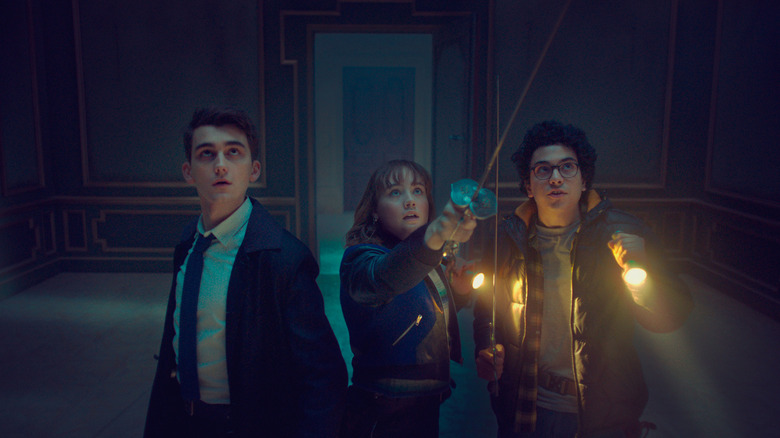
Joe Cornish is back with another story about kids fighting for our future. The director of "Attack the Block" and "The Kid Who Would Be King" is the showrunner behind Netflix's "Lockwood & Co." The adaptation of Jonathan Stroud's book series pits young folks against deadly ghosts. In season 1, Anthony Lockwood (Cameron Chapman), George Karim (Ali Hadji-Heshmati), and Lucy Carlyle (Ruby Stokes) join forces as a scrappy team of paranormal investigators in a world haunted by the dead.
The show is another project from Cornish that pays tribute to '80s movies. It's not nostalgia; the past is a key part of the story, not just an aesthetic or an excuse to have a rocking soundtrack. This world is a bit stuck in the '80s, thanks to the array of deadly ghosts. Cornish, who directed the first and last episodes of the season, recently took us behind the scenes of his new series in an exclusive interview.
Note: This interview has been lightly edited for clarity and brevity.
'A Ghost Epidemic Started Just Over 50 Years Ago'
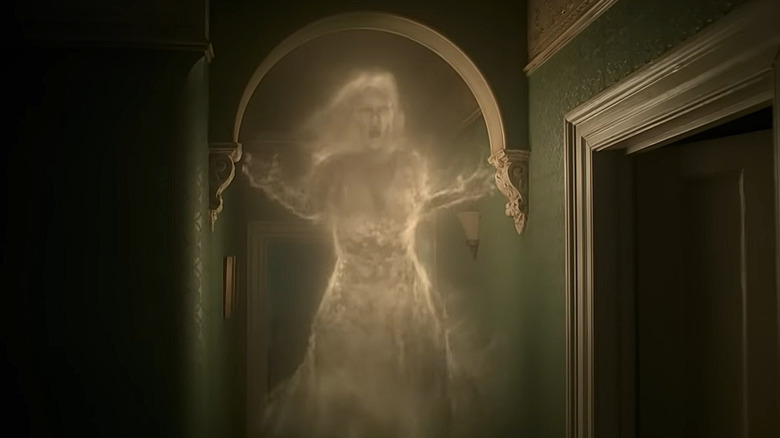
How long have you been working on the show now?
Well, about three years. We post-produced all last year. We shot the year before and we were writing and developing the year before that. We post-produced '22. We shot '21. We developed in '20.
That's a pretty good production schedule, not at all rushed.
No. Nira Park, who produces my movies and produces all of Edgar [Wright]'s movies, that's one of her things. She is a polisher. She will make things as good as they possibly can be. That's one of her real things -- not that Edgar and I are fighting that -- but that's one of the things that's extraordinary about her as a producer: the production values and the time.
She will push the shoot. She will extend the post-production. She will push a release because she wants to make the best possible end product. The "Attack The Block" release was delayed, I think, because we all wanted to make it as good as possible. Yeah, nothing's coming out of the oven before the timer goes "ping."
In the case of "Lockwood & Co.," what really benefited from that extra time to polish the show?
Well, there's a ghost shot that literally we dropped in after delivery because we didn't think it was good enough. We kept a skeleton staff of VFX people on way beyond when they should have been kept on to try and get that shot right. The sound, it's so exciting to be able to mix in Atmos and 7.1. We're really proud of the music in the show. A lot of it's played on real instruments and real guitars and real drums, getting all that right. There's a moment at the end of episode 5, I think, where somebody dies in the hallway of Portland Row and Lucy hears -- you basically hear him speaking, but then you hear him speaking after he dies in Lucy's head. To get the sonics of that right, it took a long time to do that. Yeah, we really tried to go the extra mile to make it work.
With the music supervisor and composer, how did you want to help define the show with the music?
The world of "Lockwood & Co." is contemporary, but it's a different now. This problem of a ghost epidemic started just over 50 years ago and it's changed the whole way the world evolved. The digital revolution never happened and suddenly all these sorts of industrial materials, like iron and salt, become vital to repelling ghosts. There are no computers, no cell phones, no digital media, no cars designed on computers. Houses are drafty and creaky. There are magazines. There are telephone boxes. There are all these things that the real world left behind in the '80s are still hanging around in this version of the present day.
We wanted that to inform the soundtrack as well. We went back to a lot of post-punk, slightly goth inflected rock music like Siouxsie and the Banshees and The Cure and Bauhaus that have this kind of romantic, doom-laden spookiness to them, and they feel very analog. You can hear the fingers on the guitar strings in a Bauhaus track. You can hear the croak in the voice. They feel alive, they feel haunted, and they have a terrific, beautiful melancholy to them. We had a playlist very early on of those tracks of Bauhaus and Siouxsie and The Cure. A lot of the bands are referenced in posters in Lucy's room or in bits and bobs around the show.
Then, the composers who are called The Flight, who did the music for [the video games] "Horizon Zero Dawn" and "Alien: Isolation," they are two very brilliant young men, and Christoph Bauschinger, who was my music editor on "The Kid Who Would Be King," who's just an amazing guy, built a bridge between composing and inserting it, making it fit the action. They basically picked up a bunch of instruments and played, so you can hear their fingers on the strings. We imagined that there was a kind of "Lockwood & Co." garage band in some smoky basement, in a nightclub off in Soho in London in the mid-'80s who were playing along to the action. Yeah, we're pleased with it. We hope it gives it quite a unique sound and feel.
'I Don't Want The Opening Of This Show To Feel Like A Geography Exam Or A History Exam'
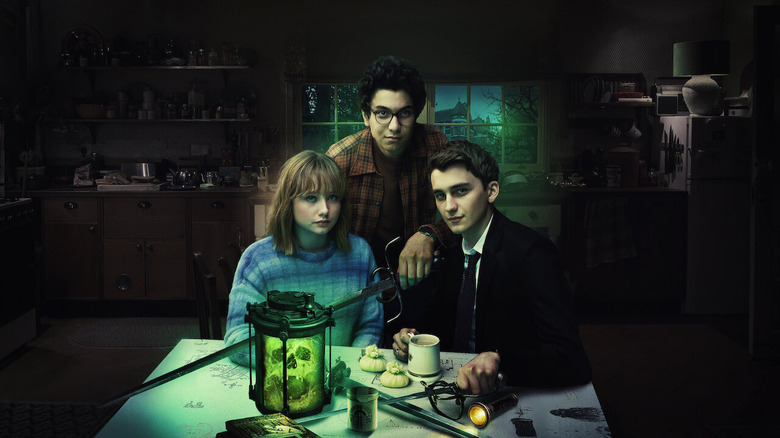
The first episode isn't loaded with exposition, and the world and rules are gradually explained over the eight episodes. How much did you debate what to say and what not to say in the beginning?
Well, that was a big thing, and when I wrote it, I decided to myself, "Okay, I'm not going to do any exposition," because sometimes these big streaming series can be a nervous guest at a drinks party who comes up to you and just tells you their whole life story in two minutes and you are like, "Okay, thanks, bye." I want it to be the person at the drinks party who tells you something interesting that intrigues you and you want to know more. I don't want the opening of this show to feel like a geography exam or a history exam, like you have to know who's an orc and who's an elf, and which political party so-and-so comes from or whatever.
We drop you into the middle of a ghost investigation with these two young people. You don't know who they are and you pick up the rules of the world by watching them behave, listening to them talk, and following their methodology. That was the aim, and every time somebody said to me, "Joe, you really should explain," I said, "No, I'm not going to do it." I want to respect the intelligence of the audience. I want them to be intrigued. Then, I just stood my ground until the very end and then we said, "Okay, well, let's put everything in the opening titles."
All the factual, world-building stuff is in the opening titles. In the first episode of a Netflix show, you can't skip the opening titles. You can on the subsequent episode. You can skip it if you want, even though I think the opening music is really cool and the titles are really cool. Then, we don't have to bother with that in the body of the show. The show can just be about procedure and character and action.
How much do you really think you need to explain the world and the rules to an audience?
Well, in this business, you test, or you have opportunities to do that. People are constantly watching your edit. The editor's watching. It's not like you're watching in isolation. If there's something that's really tripping people up, you start hearing it and you keep hearing it and then you do something about it. You just have to find an organic way to do it.
I always cite the beginning of "Reservoir Dogs" as one of my favorite movie openings where you're just watching a bunch of people. I think you're even looking at their backs, talking about tipping, something entirely inconsequential. I remember seeing that movie for the first time and leaning over to my friend and going, "This is great," because I felt like I was there and this was a real world with real people. The storytelling didn't know I was there. That's so much more interesting than a movie or TV show that is anxious about you being interested, you know what I mean?
Yeah. Your party guest metaphor was good. You gotta know when you've said enough and leave.
Yeah. "The Rings of Power" party guest is definitely coming up to you with a chalice of champagne and telling you an hour of f***ing elf history. I don't know about you, but I'm going outside for a cigarette at that point and I don't even smoke.
'We Hope This Is As Close To The Books As Possible'
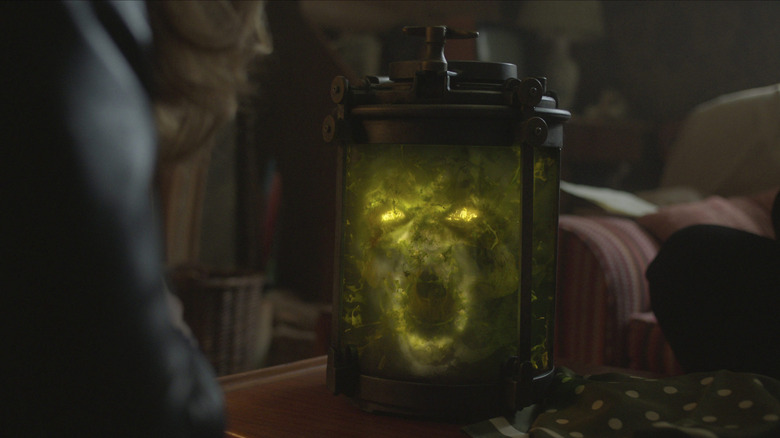
What did you find translated very naturally from the books to the show, and what from the first two books was a bit trickier to adapt?
Well, there's some stuff about Lucy's backstory that is skirted over and kind of elliptical in the books. In the first episode, when we flashback to her early years when she first joined an agency, that stuff we had to invent ourselves. Really, I used to read novels as a kid and then see adaptations of them, I would always be like, "Why did they change that? Why did they need to change that? Just film this." I remember when I read Stephen King books, I'd be like, "Man, this is a screenplay. Just film all of this." We tried to do that, but obviously, you can't. It would be a 50-hour show if you filmed everything, so you have to figure out ways to compress. By and large, we just tried to put everything in that we could.
There were places where we had to condense things. There were some things that didn't make total sense when you really analyzed them that we had to streamline. There were some things we didn't necessarily want to spend money on. There were set pieces in the books that didn't necessarily advance the story. We thought, "Okay, let's not shoot that. We'll just have to reference that in dialogue."
We tried to stay as close to the books as we possibly could at all points. When we made changes, we just thought, "Oh, this could be even better." Jonathan Stroud, the author of the books, was very involved and he okayed everything and collaborated with us. We hope this is as close to the books as possible, but the books don't have special effects or music or actors, so we have to do all that stuff, bring it to life.
The visual effects are not hidden by darkness. How important was that for you, your cinematographer, and the visual effects team? And what were some of your rules for the ghosts?
Well, we can't hide our ghosts because one of the brilliant ideas central to "Lockwood & Co." is that ghosts can kill you by touching you. I don't know that anybody has ever thought of that before Jonathan Stroud. It just changes the dynamics. It means you're in an action-adventure combat situation where previously you were in a "Scare me, throw a chair at me, possess my daughter, suck me into the TV" situation. Suddenly you are in an actual fight where this thing is coming for you, and if it touches you, it kills you. We had to think about our ghosts as physical assailants in a space. We had to figure out a way to have something on set that the actors could react to so that eye lines were right, so they could be in combat with them, not dissimilar to "Attack the Block" and "The Kid Who Would Be King."
Our ghosts are made up of a kind of dummy with lights on it that was on a stick on the set. Then, we had a performer on wires to do the physical reference. Then, we had another actress or actor do the facial performance. Then, we had another actor to do the voice. The ghosts are this compendium of one, two, three, four, five different elements, but then there are different types of ghosts in the [show]. The books have a strict set of rules about what a ghost can and can't do, and this very brilliant taxonomy, different species of ghosts and different capabilities.
We had a whole set of rules that our ghosts should follow. They're all made of ectoplasm, so all our ghosts are made of smoke. They can be different densities, different levels of turbulence, different colors, and then our ghosts can only look like what they look like now in the ground or what they look like at the moment of death, anywhere on that slider. Then, they have different strengths and weaknesses. We made a set of rules, we stuck by them, but we made sure they had enough room inside them to get a good variety of different types of ghosts. That feels like a very long answer.
'I Just Love Swords'
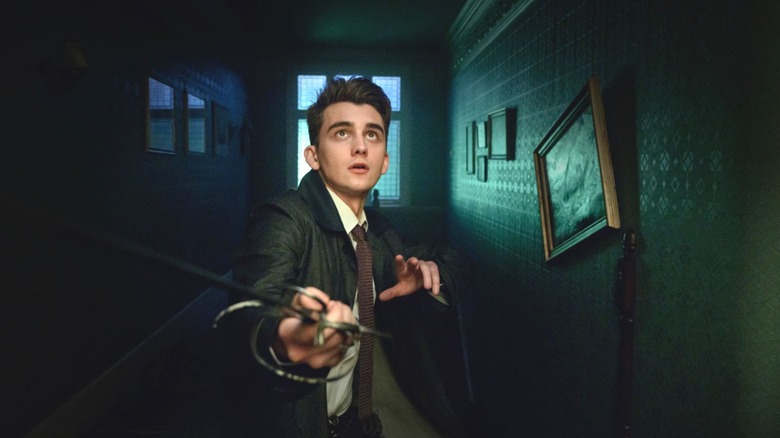
There's a sword fight in the finale that's excellent.
The one that goes round all the columns?
Yeah. There's a nice rhythm there with longer and shorter takes. How did you pull that off?
Well, there are a bunch of hidden cuts, and that was devised very closely with our fight coordinators. There are a bunch of hidden cuts where you go around the columns. To be honest, the fight coordinators were so good, and at that point, Cameron [Chapman] was so agile. All the people they're fighting are all trained stunt actors. I just had to shoot it. We shot it very quickly because they were so well-rehearsed and it had been blocked in a precise replication of that space. That was one of those things where they did it, we shot it, cut together, and it kind of worked, but that's not a lot to do with me. It's to do with how much preparation everybody puts into it.
There were s***loads of preparation on this show. There was about six months of rehearsal, fight training, wire training, getting everybody fit, dramatic rehearsal, getting the three lead actors to know each other and know their characters inside out. There was a huge amount of preparation. By the time we got to shoot this stuff in a TV schedule at the quality we wanted to do, we had to be absolutely ready to go and fully prepared every day with what was ahead of us, and that was thanks to the crew and all the work they put in ahead of time.
We're so used to watching people fight with guns. What appeals to you about your heroes fighting with swords?
I don't know. It is true, and people keep remarking on this, that all three of my movies have involved young people fighting these fantasy creatures with swords. In "Attack the Block," because one of the characters, Dennis, happens to have some cheap imitation of a samurai's sword on his bedroom wall that he grabs. In "The Kid Who Would Be King," it's an Arthurian story. They find Excalibur and then replicate it. In this book, it happens to be one of the methods that Jonathan Stroud invented for fighting ghosts.
I trained in fencing when I was at school. That was my sport, fencing. I wasn't very good at it. The teacher used to call me lazy. He was a retired Russian Olympic coach who used to teach us fencing. He would say, "Joe, you have such long legs, you could be so good, but you are lazy, so lazy."
I just love swords. I think they're kind of lethal, but there's also something romantic and stylish about them. You need skill to use them in a way you don't when you just point a gun and shoot somebody. Plus, I'm from London, we don't have that many guns. Luckily, we don't have that many swords either, but it feels like an elegant way to do combat. It feels okay to put a sword in the hand of a kid in a way that it feels a little bit weird to put a gun in the hand of a kid.
It makes for more intimate action scenes, too.
Yeah, yeah. I do put a gun in the hand of a kid in "Attack the Block," but it turns out to be a starter pistol. That doesn't count.
'It Was Mark Wahlberg's Space Suit From Planet Of The Apes'
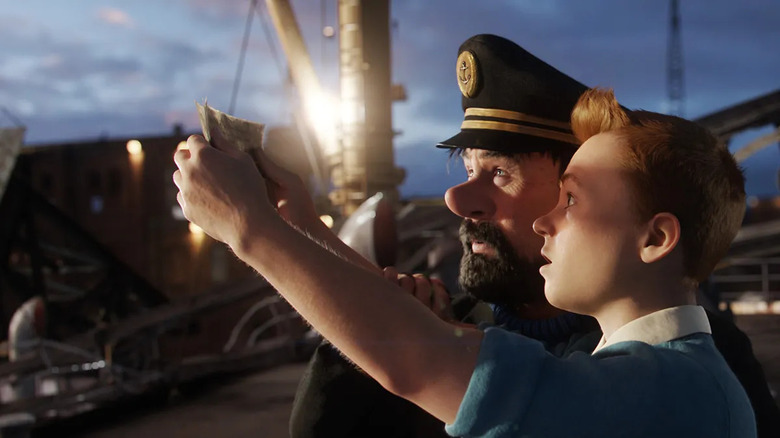
I love "The Adventures of Tintin." Did you ever work on a script for a sequel?
Yeah, yeah. I did. Peter Jackson and I worked on the second film for a couple of months. Was it after the first one was released? Maybe it was just immediately after the first one finished shooting, and it had elements of "Red Rackham's Treasure" and "Prisoners of the Sun," I believe.
I have two memories of that. Me and Peter Jackson were working in a bungalow at the Beverly Hills Hotel. There was a knock on the door, and somebody came in carrying a space suit, and it was Mark Wahlberg's space suit from "Planet of the Apes." It was a gift from him to Peter Jackson, because Peter's obsessed with apes and monkey movies, as you might know. I'm a bit of a Bigfoot obsessive, right?
Oh, really?
Yeah. I love Bigfoot. I love Bigfoot. I love Bigfoot videos, and I love all that stuff. I said to Peter, "Oh, you love monkey stuff. Do you believe in Bigfoot? Do you like Bigfoot?" He looked at me like I was mad, and I felt quite embarrassed, but then unfortunately, I went off to do "Attack the Block" and the sequel never materialized. Did we ever finish the treatment? I'm not sure that we did. Other stuff happened, but I love that movie. I think some of the staging and blocking and action in that movie is extraordinary.
Why haven't you made a Bigfoot movie yet?
You know what? I have an idea for a Bigfoot movie percolating in my head. Sometimes I think about genres that nobody's done well, and the thing about Bigfoot is there are a couple of really good movies, like "The Man Who Killed Hitler and Then the Bigfoot." I love that movie. There's a lot of really good stuff in "Legend of Boggy Creek," and there are a lot of really good '70s ones, but nobody's done the really f***ing great movie in the way that, do you know what I mean? It's a genre that feels like it's waiting for the prestige, sophisticated, super f***ing great movie to come along.
It's such a pervasive myth, and when I watch those things, the good ones really send a shiver up my spine in a way that no other contemporary mythology does. Weirdly, when I was a kid, I went on holiday to California and I stayed with my uncle who worked in a saw mill in Yakima, Washington. It turned out it was the same sawmill that guy Bob Heironimus worked at, who was one of the guys that people say was in the suit in the Roger Patterson film. Anyway, listen, man, you don't want to get me started on this s***. We'll be here all night.
[Laughs] I was really enjoying it, Joe.
Anyway, listen, the short version of this is I love Bigfoot, and I do want to make a Bigfoot movie one day, and I do have one percolating in the back of my head.
"Lockwood & Co." is now streaming on Netflix.
Read this next: The 25 Best Kids' Movies Of All Time
The post Lockwood & Co. Showrunner Joe Cornish Brings Killer Ghosts to Netflix [Exclusive Interview] appeared first on /Film.
Welcome to the Hunt! An Intro to Monster Hunter Rise on Xbox and PC
Summary
- Monster Hunter Rise is available now on Xbox Series X|S, Xbox One, Windows 10/11, and with Game Pass (including Cloud Gaming).
- Why should you play Monster Hunter Rise? Here’s an introduction to the world, monsters, gear, and gameplay, plus a few helpful tips.
- We also got Capcom producer Hiroyuki Minamitani to tell us what’s different about the Xbox and Windows PC versions.
The day has finally come! Monster Hunter Rise is out now for Xbox Series X|S, Xbox One, Windows 10/11, and with Xbox Game Pass – with Xbox Cloud Gaming offered with a Game Pass subscription. Whether you’re an experienced hunter with hundreds of hours logged in the New World, or are checking out what the fuss is all about, welcome!
With Game Pass, Monster Hunter Rise has become accessible to even more players than before. We’ve been thrilled to see the excitement from everyone online, especially those who have never played a Monster Hunter game before. With that said, allow us over at Capcom to share a few things you should know!
How does Monster Hunter Rise differ on Xbox, Windows PC and Cloud Gaming?
As Monster Hunter Rise makes its debut on Xbox and Windows PC, it’s been tweaked and improved for those new platforms. Speaking to Xbox Wire Japan, Capcom Producer Hiroyuki Minamitani said, “the team didn’t really struggle with porting the game itself. The Xbox Series X offered great performance levels, and we only needed to harness it. Overall, the porting process was very smooth.”
Those ported Xbox and PC versions bring a ton of performance improvements to the game, including 4K resolution, high frame rates, spatial audio, and super-fast loading times, which makes Monster Hunter Rise look and feel even greater than before. Minamitani said that: “Loading into the field map after accepting a quest has never been faster, and took a mere few seconds when doing so, and that felt amazing.”
“With Xbox running the game at 4K resolution, you will be able to observe the game through a high-fidelity lens,” Minamitani added. “Weapon designs, background objects, and as well as the monster’s scales will look so much more in detail.”
Thanks to Xbox’s console, PC, and cloud ecosystem, you’ll also be able to play the same game on multiple devices, no matter where you are. “Monster Hunter Rise will be available on Xbox and Windows PCs, with crossplay and cross platform progression,” Minamitani explained. “This means you will get to join the hunt with many others using a variety of platforms from the get-go. The Xbox platform also offers flexible gameplay where you can play on your console at home and jump right back into the hunt on your laptop even when outside.”
The battles can even continue on mobile with the use of Cloud Gaming through an Xbox Game Pass subscription – and Capcom has accounted for how the game will look on a mobile screen: “We also have custom UIs prepared for gameplay on smartphones,” said Minamitani. “That means you will get to play Monster Hunter Rise with a new set of controls, as well as with optimization for gameplay on smartphones.”

Why Play Monster Hunter?
Fighting big monsters is fun.
We could leave it at that, but there’s a lot to the Monster Hunter experience that has helped it endure as a unique series for nearly 20 years.
At the heart of Monster Hunter is the feeling of overcoming a challenge with the skills you develop as a hunter. While Monster Hunter Rise isn’t a punishing game, the experience of learning your weapon, understanding a monster’s quirks and move set, and finally taking it down is core to the hunting journey.
While that feeling of personal progression is key, the progression that happens with your gear and hunting rank is a huge part of that. Each time you slay or capture a monster, you’ll earn new materials that allow you to craft stronger armor and weapons. You may also find yourself going back to hunt the same monster in a new locale or with different circumstances around the quest. Mastering a particular fight and getting better at it each time is a satisfying feeling!
As you keep improving your gear and improving your rank, new monsters will continually be introduced as well. At the start you’ll be battling threatening, but smaller monsters like the Great Izuchi. But over time you’ll progress to powerful threats like the familiar flying wyvern Rathalos, and the game’s flagship monster Magnamalo.
Hunting? Isn’t that a little mean?
In the Monster Hunter series, hunters aren’t simply hunting monsters for sport. The story of Monster Hunter Rise involves a calamity called The Rampage that took place fifty years ago. During this calamity, a huge pack of frenzied monsters attacked Kamura Village – the town the player and their friends call home – and nearly wiped it out. Hunting is a matter of survival for the people of Kamura!
Throughout the story of Monster Hunter Rise, you’ll take down monsters that threaten the peaceful village and encounter some powerful beasts that threaten the very balance of nature itself.

Choose Your Weapon!
At the start of your journey as a hunter you have immediate access to all 14 weapon types in the game – no need to unlock them over time. While this can feel a bit overwhelming, keep in mind that there’s no right or wrong way to choose one. Think of it like choosing a character in a fighting game. Each weapon has its own unique move set with unique mechanics, strength and weaknesses, and playstyle.
Want to bonk monsters on the head with a giant hammer? How about vaulting through the air and attacking foes with the greatest of each with the Insect Glaive? Like in a fighting game, sometimes choosing the one you think looks the coolest is a great place to start. Over time and with more hunts under your belt, you’ll feel yourself getting more and more proficient with your weapon of choice. Growing your skills and getting better as the game introduces tougher challenges is a great feeling and one of the best parts of the Monster Hunter experience.
If you played Monster Hunter World and Iceborne and perhaps didn’t click with a weapon there, give it a try again in Rise! Each weapon has seen adjustments and changes, plus the addition of Switch Skills. These are special moves specific to each weapon and can change up the feel of each weapon significantly.
A Few Words of Advice
If the above breakdown has you onboard, great! Here’s a few more essential tips to make your hunting life a bit smoother.
Don’t forget to eat
Grabbing a meal before every hunt is an essential step in Monster Hunter Rise. Before leaving for a hunt, take a seat and grab some Dango to eat at the canteen. At the start of your journey, you’ll start out with a decent selection of Dango to give you helpful buffs for your quest. Regardless of the buff or if the Dango effect is activated, you’ll get a big boost to your health and stamina. Every little bit counts!

Brew some potions!
Chugging a bunch of potions during a hunt is never something to be ashamed of, and is essential even for the most experienced hunters. Always be sure to stock up on Potions and Mega Potions before a hunt, with the latter being necessary to making sure your health is topped off. Mega Potions can be crafted by combining a standard potion with Honey, so be sure to grab some while traversing the map.
Before every hunt, double check to make sure you’re stocked back up. If you’re in the middle of a hunt, you can head back to camp to stock back up before heading out once more.
Speaking of camp, at the start of most hunts you’ll see a supply box stocked with a few helpful items, such as First-Aid Meds and EZ Rations. These items are useable only in the quest instance, so don’t be afraid to make good use of them! If you’re playing in multiplayer though, remember that the Supply Box is shared, so make sure to leave some for your fellow hunters.
Spiribirds Spotting
You might notice that at the start of a hunt, your health and stamina will fall short of the maximum. Before heading over to the monster’s location, collect a few of the flying Spiribirds around the locale. These buffs last for the duration of the hunt, with different colors imbuing bonuses to health, stamina, attack, and defense. These are a must for making sure you’re ready to take on the monster ahead!
Stay Sharp!
Keeping your weapon sharp is one of the most important factors in a successful hunt. If your weapon loses sharpness, it might bounce off a monster or deal significantly decreased damage. Use your whetstone to maintain the sharpness of your weapon, but do so from a safe distance or while riding your Palamute.
These are just a few helpful tips to get you started, but there’s plenty to learn while playing. At the end of the day, don’t worry about getting intimidated and focus on having fun and enjoying the journey ahead!
Here’s a Little Something…
For our new hunters out there, we’ve deployed a few helpful bonuses to get you started. The new Guild Cross armor series and Novice Talisman are great beginner equipment to give you a bit of help as you get a grip of the basics. “We’ll be launching a new armor set named the “Guild Cross” series,” explains Minamitani, “and it will give you an advantage during the early stages of the game with its high defense stats. The talisman also complements the Guild Cross series, and will help when gathering materials, as well as give you even more defensive stats.”
Also, thanks to the combined efforts of the global Monster Hunter community, we’re giving all new players on Xbox platforms and Windows 100 free Honey! You can never have enough of it as it’s crucial for crafting healing items like Mega Potions. Visit Senri the Mailman to claim it as part of Kamura Village Welcome Set 1, which includes some other helpful items as well.

On To The Hunt!
That about wraps it up for our quick intro the Monster Hunter Rise! It’s out now on Xbox Series X|S, Xbox One, Windows 10/11, and Xbox Game Pass. We can’t wait to welcome many new hunters to the fold! Remember to have fun and enjoy the ride!
Stay up to date with everything about Monster Hunter Rise with the official Monster Hunter Twitter, Facebook, and Instagram.

Monster Hunter Rise
How Minecraft Legends Twists Classic Minecraft Ideas Into All-New Shapes
Coming to Xbox Game Pass: Hi-Fi Rush, GoldenEye 007, Age of Empires II: Definitive Edition, and More
Xbox & Bethesda Developer_Direct Showcases Games Coming to Xbox, PC and Game Pass
Intel, AMD Just Created a Headache for Datacenters
Read more of this story at Slashdot.
Meta, Twitter, Microsoft and Others Urge Supreme Court Not To Allow Lawsuits Against Tech Algorithms
Read more of this story at Slashdot.
M3GAN Director Gerard Johnstone On A.I., The Future Of The Series, And Making 'A Dent In Culture' [Exclusive Interview]
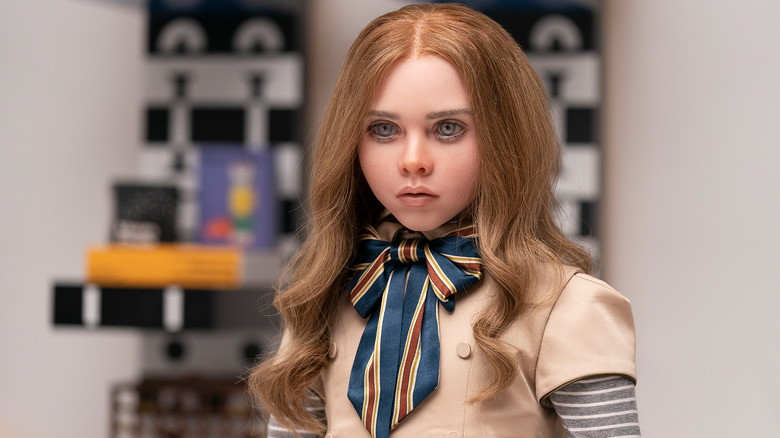
When I first spoke with "M3GAN" director Gerard Johnstone, the pint-size A.I. bestie from hell had yet to be unleashed on the masses. There was a nervous energy in the room, one rooted in my excitement having seen the film early and absolutely loving it, and Johnstone's clear hope that the film was going to perform as well as the social media response to the trailer indicated it would. In the weeks that followed, "M3GAN" absolutely slayed at the box office and fans cannot get enough of this mouthy, fierce, and fearsome new addition to the killer doll canon. I knew I wanted to talk to Johnstone once again, and learn how he was feeling having gone from "guy who directed beloved, underrated indie horror comedy" to "guy who directed the first new film of 2023 to make over $100 million."
In the middle of our second interview, something incredible happened ... Blumhouse announced that "M3GAN 2.0" was officially in the works. What's fascinating, however, is that Johnstone was not a part of the return announcement. Based on our conversation, I'm hoping the reason is because he's in negotiations for a massive pay bump for the sequel, because he's clearly already been thinking about the future of "M3GAN" and how to keep her story fresh, terrifying, and tons of fun.
This interview has been edited for length and clarity.
The Dance Is Its Own Perfect Little Moment
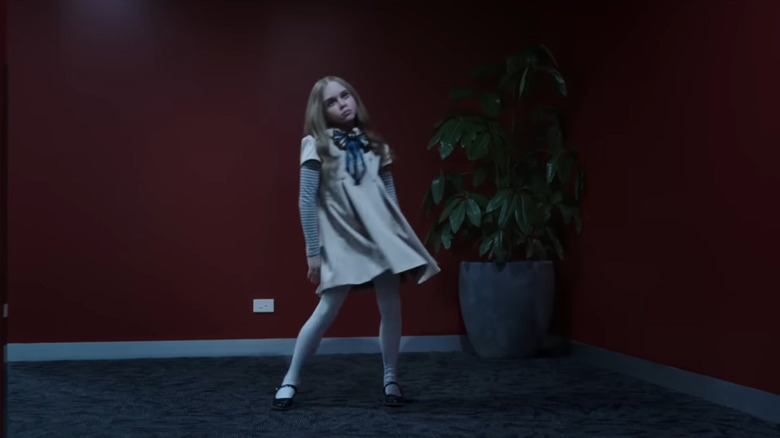
The last time that we talked, you said M3GAN's dance was the natural evolution of the character, but it has become a worldwide phenomenon. What is it like to see a moment that was not in the original script become a phenomenon?
I mean, surreal is such an overused term, but really, that's all I can think of. I mean, when I saw all those girls walk out at that NFL game, it was just unbelievable. It was such a silly idea — all I wanted to do was make the movie more fun.
And it was a really stressful day shooting that scene. Every day on the movie was stressful. And so none of us were thinking, "Hey, this is going to make a dent in the culture." It was just like, "Oh my God, did we even get it? I think we got it." And then you just move on so quickly. And we were trying to use the best takes and do justice to Amie [Donald, M3GAN's body] and the choreographer that had come up with a dance.
And I think I said at the time, there were other dances that she did, and there were some other moves that I wish we had been able to include that were just as equally kind of creepy. And it's funny because we got to come back and do some pickups, and for a while, I was kind of campaigning to add a few more shots to that dance sequence. But by then the trailer had come out and it did what it did, and I realized, "Oh, I don't think I need to do any more. I think it's good." And the more I see it, the more I realize how it's just become its own perfect little moment.
M3GAN's Dance Was First Envisioned As Soul Train
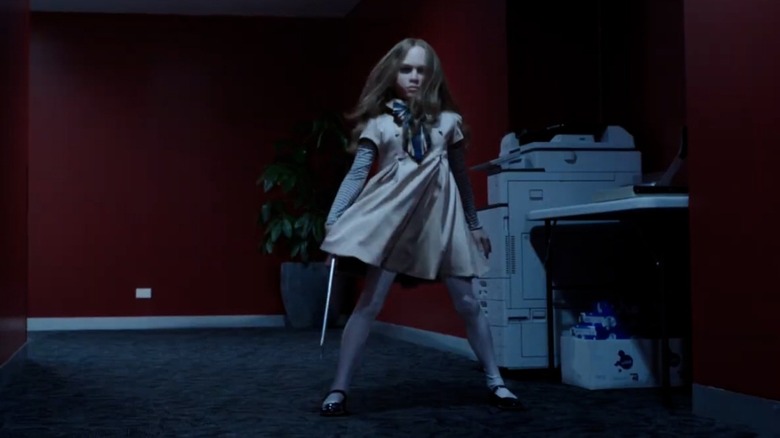
Definitely. And there are so many different styles of dance that exist, and obviously M3GAN, she's got an aerial flip in there. Did you contribute to that or did you let the choreographer run with it?
I gave her a brief because the whole point of that scene was to distract David (Ronny Chieng), to close the distance between her and the guillotine blade without him realizing what she was doing. The brief was also in conjunction with the song. I knew the song that I wanted to use, which was nice because otherwise if we had replaced the song, it would've been a different beat and it would've looked clunky. So she knew where she had to get to at a certain point and that it would end on a certain moment.
I was thinking of a kind of "Soul Train" disco shuffle kind of thing, like the Bus Stop or something, but with a little bit of Shirley Temple thrown in [...] And they came up with, I think, about six different dances and we kind of cherry-picked the best moments from each. I was worried that the flip would be too much. I'm so glad I didn't follow that instinct.
But yeah, it's incredible, the little touches of pressing against the wall and the leg going up and the wavy hand. I don't know where that came from ... I thought it was weird, but when she did it I thought, "That's interesting. I've never seen that before." It was so different from what I had, but I was so intrigued by it that I never pushed back. I thought, "This is very interesting and strange."
She Is 'Titanium'
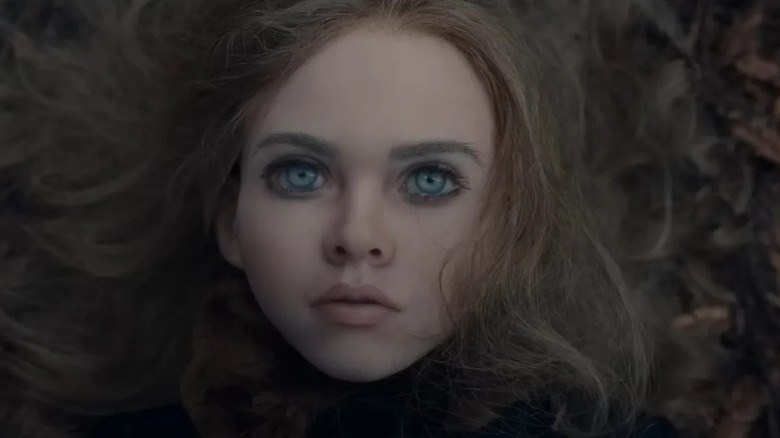
What ended up being an interesting thing, at least from a cultural sense, is the dance looks very much like something like Maddie Ziegler from "Dance Moms" and the Sia music videos did for her.
Right, right.
So then you get the one two punch of "Titanium" also in there. Was there a different song before you settled on "Titanium?"
No, it was always "Titanium." I think what had happened was I think I knew that I wanted to have M3GAN sing Gemma a song on piano, and so I got curious. So I started listening to people do renditions of songs on toy pianos, and there's a guy on YouTube that does this incredible version of "Titanium" on a toy piano. And as I was listening to that, I thought, "Hang on a second, that sounds like M3GAN's anthem." So that's why I thought it would be good to put that in.
But yeah, I had written the dance into the script even before I knew we were casting Amie, but it just made the brief of finding our M3GAN performer that much more difficult. It was like she was going to have to be able to act and she was going to have to do martial arts, and she was going to have to be a contortionist. And then on top of all this, she was going to have to dance. And it just makes the miracle of Amie that much more special that she can do all of these and then some.
The Future Of M3GAN
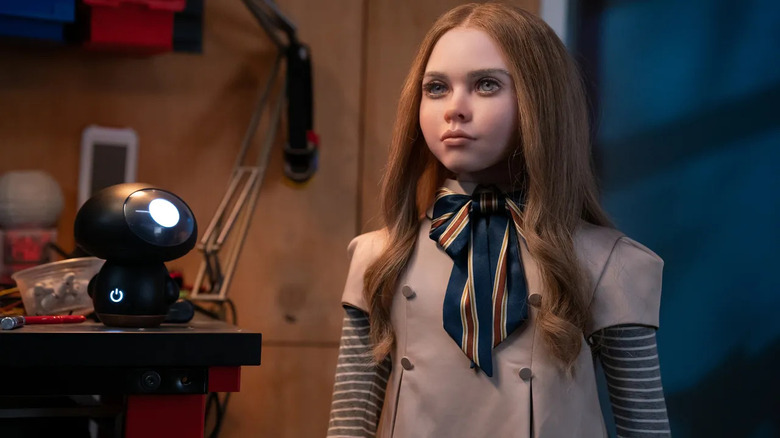
Yeah, she's truly fantastic. The character work she's got going on is unbelievable.
And I think it's also important to say, I never had to tell Amie to keep her eyes locked and on her target. That feels like something you'd have to tell a 10-year-old to do. I remember when she sent me through the thing, she's locked in on the camera the whole time. So Amie, initially, she always just instinctively knew to do this dance from the point of view of M3GAN and have her eyes locked on the target the whole time, which is incredibly difficult to do. You're doing all these flips and you're doing these moves, and she's just locked in on David the whole time. It's incredible.
Now that the elements, like the dancing and the singing, have become explosively popular, does that change your approach when thinking about future movies with M3GAN? Do you feel that you need to incorporate these in some way or make them bigger?
I think if you do that, you are kind of setting yourself up to fail, and the audience will smell that a mile away. I think for me, what works about the movie and what I think people are responding to is that it's fun and absurd and full of lots of pleasant surprises.
And so looking at the sequel, those are my sort of paragons that I'm just trying to follow is like, how can we continue to be fun, absurd, surprising, but at the same time make sure that we continue to be part of the cultural conversation, I guess. In addition to the dance, we're not too heavy-handed about it, but there are themes about co-parenting in the age of A.I. and things like that. So it's important to have some substance to hang all of those dance sequences onto.
How A.I. Will Impact M3GAN 2.0
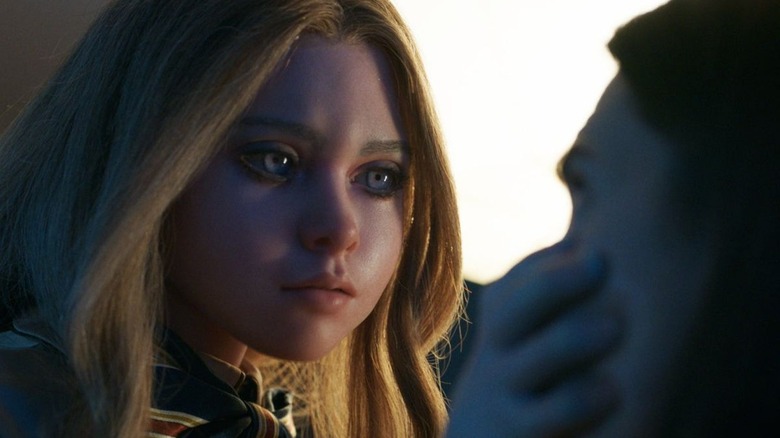
And "M3GAN" kind of came out during the perfect storm, right out of the A.I. art app explosion of discourse of "Everyone's got a cool profile picture! Wait, this is actually really unethical."
Oh, yeah.
Has that influenced the way that you're thinking about the future of "M3GAN" as well?
Absolutely. It's really interesting that ChatGPT was something that one of our consultants, Peter Abell, was actually involved in. And he was talking about these kind of generative algorithms that you could have a conversation with, and that did exactly what we were setting up "M3GAN" to do. We've been very fortunate that the timing of this movie has worked out so well. I mean, technology is just on this massive upward curve right now. It's just advancing so quickly and we're all struggling to keep up with it and figure out a way to not just regulate it, but to even put it in context.
I could do a film treatment using ChatGPT. Because sometimes it's the hardest thing to just put words on a page. And I'm sure you could as a writer as well. It's like you could put in a bunch of ideas you're thinking about for a story and ChatGPT will give you a half decent first draft.
I did a paragraph. I asked ChatGPT, "Why are people afraid of A.I.?" And included it in an article I wrote about "M3GAN" and you would have no idea that I didn't write it.
Oh my God. And what's really interesting about it as well is we experimented putting it, trying to make it come up with a movie plot, and it would say things like, "As the mystery deepens." And so I would write back saying, "Well, how does the mystery deepen?" And it would be like, "Well, like I said, there was the people and the thing, the mystery kind of deepens." And I was just sitting there silently thinking about it. Meanwhile, ChatGPT kept responding, trying harder. I mean, maybe what it could mean is that it was ... It kept trying to please me. It was so strange. It's just unreal.
It's terrifying and great all at the same time.
Yeah. Yeah, it is. And it's absurd, which the movie is. Sometimes I feel like this movie is no more absurd than what's going on in real life.
Read this next: The Best Thrillers Of 2022, Ranked
The post M3GAN Director Gerard Johnstone on A.I., the Future of the Series, and Making 'A Dent in Culture' [Exclusive Interview] appeared first on /Film.
Telecom Giants Head To Court To Kill NY State's Demand They Give Poor People $15 Broadband
Read more of this story at Slashdot.
These Are the Best Cheeses for a Grilled Cheese Sandwich

The bread component of any sandwich is important but, where grilled cheese is concerned, you have to prioritize the namesake ingredient. Most recipes claim to have the best, most perfect combination of fats and dairy for the ultimate grilled cheese, but what if you’re more of a stretchy-cheese girl? Or, maybe a fully…
Here's Why Benoit Blanc Can't Be The Protagonist In The Knives Out Movies
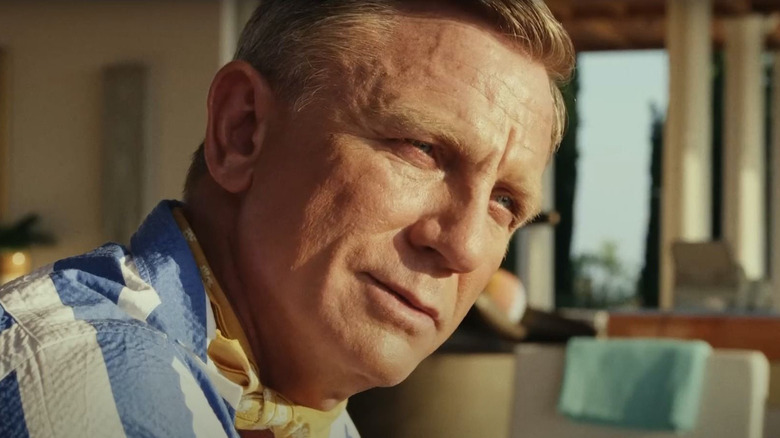
Benoit Blanc is the not-so-secret weapon of the "Knives Out" franchise. There's certainly no hiding him: Daniel Craig's performance is a highlight of both films and there are plenty of reasons why writer/director Rian Johnson would much prefer Blanc's name as the series subtitle. The Kentucky fried detective is a cigar-smoking, righteously angry, wealth-loathing star! But the very quiet truth of these movies is that, as much time as we spend with Blanc, how much do we really know about the man?
Blanc is introduced in "Knives Out" as though he's a caricature of the famed detective archetype we know so well: frequently called "the world's greatest detective," he's got a reputation that precedes him and plenty of famously solved cases under his belt. And what more do we learn from there? Well, the man obviously loves donuts, is filled with contempt for the wealthy elites he's so often surrounded by, has lots of compassion for the outsiders so frequently caught up in his cases, is dating a very concerned Hugh Grant, and apparently, likes extremely long baths. But it's not as though we know his entire life story. We don't need to. And the films might even be better for it: because the truth is, Blanc isn't the actual protagonist of these movies.
Part Whodunit, Part Hitchcockian Thriller
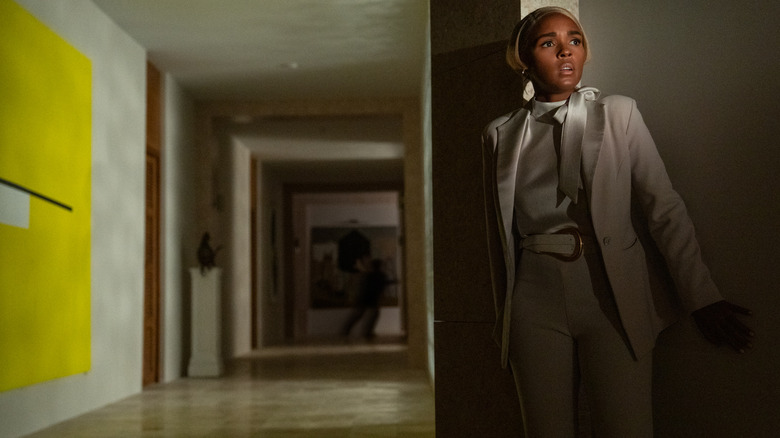
While interviewing Rian Johnson on the most recent episode of The Filmcast, co-host David Chen points out that both movies see Benoit Blanc enabling another protagonist to solve the mystery, rather than taking center stage himself. Marta in the first movie and Andi in the second. "That was really deliberate," Johnson said in the episode, explaining:
"That's one thing that I think will stay constant, is that the detective can't be the protagonist. There needs to be somebody who has skin in the game and somebody who it's gonna be satisfying at the end, basically, when they win."
Each time he takes on a new case, Blanc is immersing himself in a different world. The first time around it was the exhaustingly rich Drysdale family, with their wild dysfunction and internal strife. They straight-up sucked, but that didn't matter, because Marta was our way in. The second time around, the irritating inner circle of tech billionaire Miles Bron is only made bearable by the mysterious presence of Janelle Monáe's Andi Brand. Both movies have a murder and plenty of clues laid out for us to piece the truth together, but the real appeal is that they revel in character drama and there's always a grounded, emotional story being told in the same puzzle-box mystery breath.
Johnson added, "That all goes back, for me, to — as much as I love murder mysteries, as much as I love whodunits, specifically in movie form — wanting to approach these more as Hitchcock thrillers."
The Protagonist Is A Crucial Piece Of The Puzzle
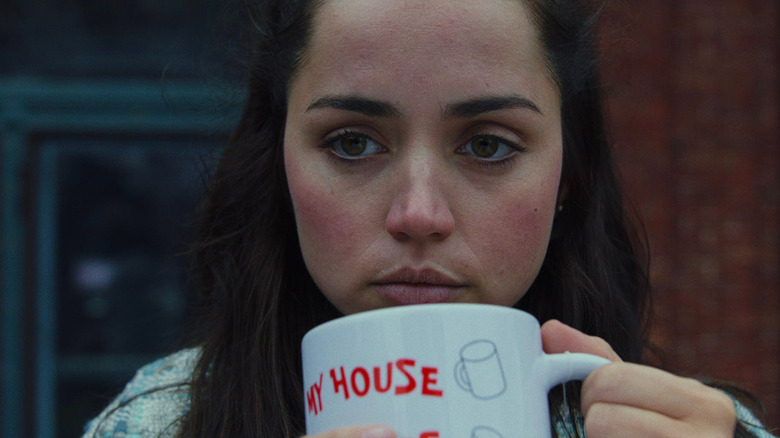
So what does going the Hitchcockian route look like? For one thing, it means there's more to life (i.e. the movie) than solving the mystery. "Even for myself, as a whodunit nut, the process of clue gathering and crime solving can entertain me in a movie for maybe about 20 minutes," Rian Johnson admitted to The Filmcast. "And then I'm gonna sit back and disengage and think, 'Okay I'm never gonna figure it out. I don't know who dun it. I'm gonna just wait until the thing I never could've guessed is revealed at the end.'"
After a while, that does become the reality of murder mysteries. I've got just as much false bravado as anyone else and always enter every murder mystery convinced that I'll find the solution. But when they're written right, they have a way of shocking us no matter how attuned we are to the details — because the detective always has to be the smartest person in the room. So the mystery can't be all there is.
Referring to the whodunit staple of collecting evidence, Johnson said, "Never leaning on that as the source of entertainment for the audience is a huge part of how I approach these things. And that means having a protagonist. And that can't be the detective because you know the detective is gonna be fine at the end of the movie. You need someone who you actually care about and are worried about."
Both Marta and Andi are in precarious situations — surrounded by wealthy people who couldn't care less about their well-being. We spend much of "Knives Out" worried that Marta will be framed for the murder while Andi might very well be in danger of being murdered in "Glass Onion." They have skin in the game, in a way that Blanc can't possibly match.
Glass Onion Came With An Extra Challenge
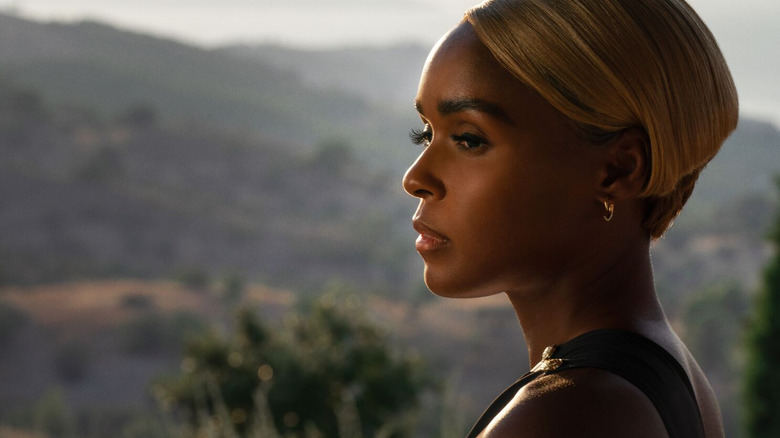
The rest of this post includes spoilers for "Glass Onion."
While crafting "Glass Onion," Johnson found this approach especially tricky, because in this story, it isn't until halfway through the movie that the audience realizes Benoit Blanc is not the protagonist. When we learn the truth about Andi — that she's actually Helen, investigating the death of her twin — the story becomes hers. Or, in Johnson's words, "Blanc is kind of like a fake protagonist in the first half." He added:
"When I started writing it, I thought the scary thing was gonna be 'How do I keep the audience engaged in the second half when we're repeating everything?' What ended up being really scary actually is my answer to that was to introduce that protagonist at the midpoint. Even though you've seen her the whole time, we really introduce the character of Helen and give you somebody you care about halfway through the movie. And I counted on that empathy and that emotional engagement to be the thing that keeps you going through the second half."
In the meantime, Blanc fulfilled his fake protagonist role very well. Our brief glimpse into his domestic life (aka playing Among Us in the bathtub) gave us just enough to invest in Blanc's journey: the man is in desperate need of a good case and knowing he's about to solve another mystery is tantalizing all on its own. Add in some restlessness for the famed detective and we're guaranteed a good time!
But in the end, this is nothing compared to the way we invest in heroines Marta and Helen, who have real emotional stakes in the cases being solved. Though he certainly has empathy for their plights and always nudges them toward a satisfying ending, Blanc isn't the one with a vested, emotional interest. He's just the one solving the puzzle.
Read this next: The 10 Best Comedies Of The Last 10 Years
The post Here's Why Benoit Blanc Can't Be the Protagonist in the Knives Out Movies appeared first on /Film.
Glass Onion Director Says Edward Norton's Character Didn't Know [REDACTED] Was Dead
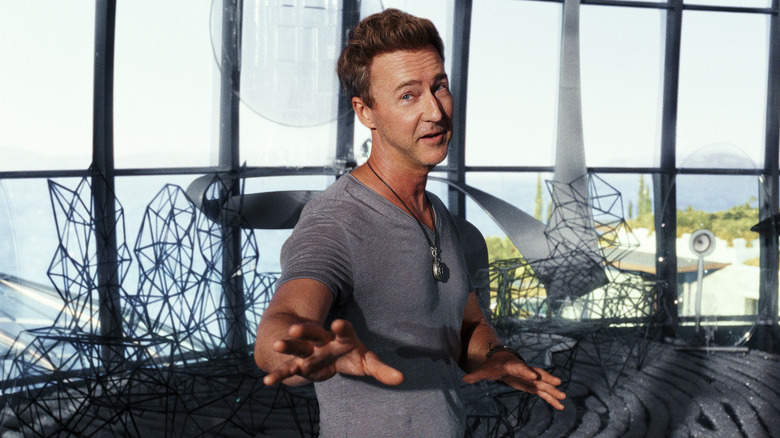
This post contains major spoilers for "Glass Onion: A Knives Out Mystery."
Mystery films change when you watch them a second time. Once you have a complete picture of the puzzle, it's easier to look for the pieces. Part of that is gauging character reactions because it's easier to judge someone knowing who's innocent and who's guilty.
In "Glass Onion," Helen Brand (Janelle Monáe) seeks the help of master sleuth Benoit Blanc (Daniel Craig) in solving the murder of her identical twin, tech entrepreneur Cassandra "Andi" (Monáe again). Helen believes the culprit is one of Andi's five ex-friends, "The Disruptors". Their leader Miles Bron (Edward Norton) is throwing an island getaway and Andi had an invitation, so Blanc and Helen (posing as her sister) use this to infiltrate and investigate the group.
Everyone is surprised to see "Andi" show up — especially Miles because it turns out he killed her. Miles' shock by Blanc's presence is totally upended when he sees "Andi" (as Blanc was banking on). He even backs off from shaking Blanc's hand so he can make sure his eyes aren't deceiving him. Miles' mouth is agape and he's stunned, when he does speak, he gulps and then sputters out "Andi, you're here."
During Rian Johnson's recent appearance on TheFilmCast, he discussed this revealing moment and what he wanted the audience to think:
"That was a delicate moment. I talked a lot with Edward about what was actually happening in Miles' head when he saw her. My hope is the first time through when you see it is the surprise is that, 'Oh she actually showed up.'"
On a second time through, you realize that Miles is shocked because he killed Andi. So, what was going through his head when he sees "Andi" has arrived on his island?
What Was Miles Thinking?
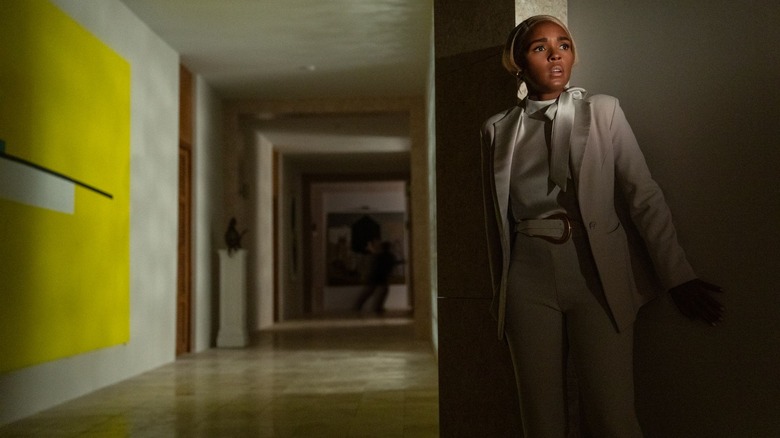
While the Disruptors all seem to know of Helen's existence, they don't catch on to the truth because they have no reason to assume Andi is an imposter. Miles does, though, so did he clue into who his surprise guest really was at any point? Rian Johnson says the answer is no. After all, "Glass Onion" makes Klear that Miles Bron is an idiot. Supporting this, Johnson notes that Miles is just as shocked as the other characters when they realize "Andi" is really Helen. According to him, this is what Miles was thinking:
"If you think about the method which I show in that little flashback thing of him killing her, he drugs her, it's not poison, her drugs her and he puts her in a car with the engine running to make it look like a suicide. What I imagined is that he sees her and thinks, 'Oh s***, she survived. She woke up and turned off the car or something. Oh crap, it didn't work, I have to kill her again.'"
As the flashbacks of "Glass Onion" show, Miles didn't have time to stick around and confirm Andi's death; the other Disruptors were on their way to her house too so once he staged the suicide, he hightailed it out. He even drove by Duke (Dave Bautista) on the road. When the latter gets a Google alert on Andi's death, he tries to blackmail Miles and winds up dead.
At this point, you'd assume Miles would piece together Andi is really Helen, but even after he attempts to murder her a "second" time, he still doesn't. Under pressure, he behaves like a cornered animal; he may be clever enough to survive in the short term, but he's not smart enough to fool Benoit Blanc.
Read this next: The Best Movies Of 2022
The post Glass Onion Director Says Edward Norton's Character Didn't Know [REDACTED] Was Dead appeared first on /Film.
Glass Onion Director Rian Johnson Explains The Significance Of The Big Mona Lisa Scene
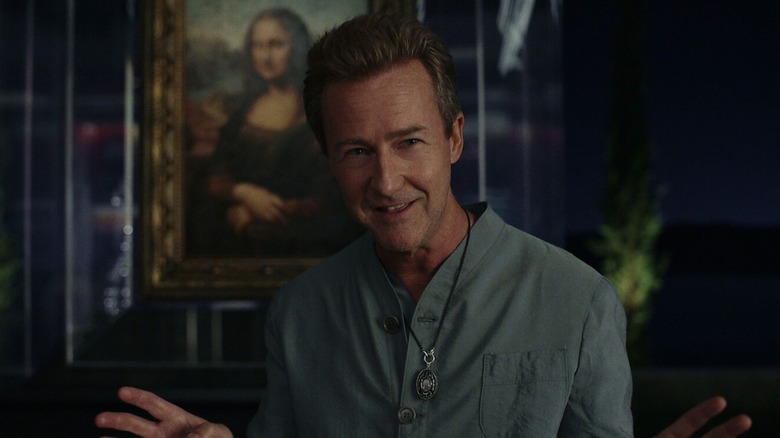
This post contains spoilers for "Glass Onion: A Knives Out Mystery."
If you're a fan of Italian Renaissance paintings, your feathers may have been a little ruffled by the ending of "Glass Onion." When Helen (Janelle Monáe) realizes that she doesn't have enough evidence to get Miles Bron (Edward Norton) convicted for murdering her sister, she decides to get her revenge another way. First she starts breaking his stuff, then she causes a massive explosion that sets his mansion on fire. None of this is a huge deal for multi-billionaire Bron, but then Helen opens up the casing of the real Mona Lisa, and it burns up in the flames.
This is the nail in the coffin for Miles. The Mona Lisa is the most famous painting in the world, and almost certainly one of the most expensive. Not only will Helen's actions set Bron back a ton of money, but the damage to his reputation is insurmountable. If Elon Musk's net-worth declined as much as it did from his Twitter antics, imagine how much Bron's net-worth is going to plummet after the world's most beloved painting has been destroyed under his watch.
It's meant to be a triumphant moment in the story, but is it? For anyone upset over the movie's seemingly positive depiction of destroying priceless, beloved works of art, director/writer Rian Johnson gave a response in a recent interview with The Filmcast. "I don't think it would actually in real life be a heroic action to destroy the Mona Lisa," Johnson said, "but in the context of a movie with this tone..."
A Triumph Only In Fiction

Ultimately, what makes the storytelling decision a good one in Johnson's eyes comes down to Helen's motivations for doing it, and the way it reflects Bron's own speech about disruption earlier in the film. As he put it:
"Miles himself says it with his disruptor speech. It's easy, to start breaking these little glass things ... you start breaking bigger stuff, people get a little apprehensive. The question is 'are you willing to break the thing nobody wants you to break?' ... You can't just break a more expensive chandelier; it needs to be something that creates exactly that effect in you, of 'I don't know how I feel about this.'"
For all Bron talks about wanting to disrupt the system, he and his friends are people who clearly benefit from that system and don't have any wish to see it destroyed. Their acts of supposed rebellion against the status quo are nothing more than them trying to grab more power and make more money. Burning up the Mona Lisa, meanwhile, is an act that actually is bold and impactful, which takes genuine audacity to go through with. (It's also a bit of a tragedy, but that's neither here nor there.)
As Johnson explained:
"The whole thing at the end was putting his words into action and using them against him, and him being actually horrified because he's full of s***; he doesn't want actual disruption, he doesn't want the system to be broken. That meant we actually had to go there."
Refusing To Backslide
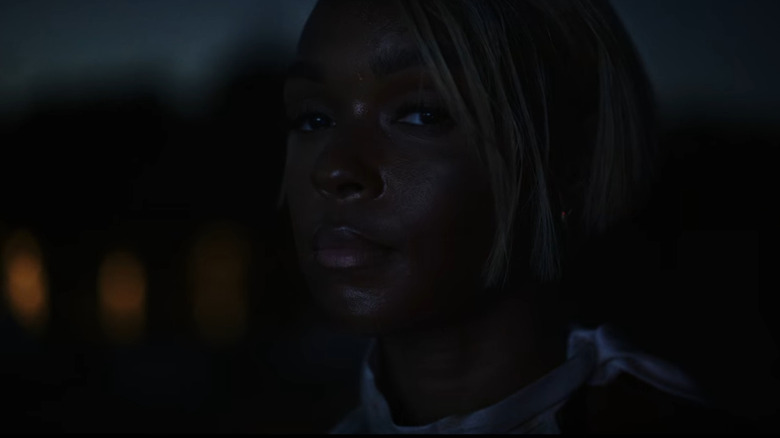
In an early cut of the film, there was a scene at the very end that revealed the painting that got burnt up wasn't the real Mona Lisa. It would've eased the blow for anyone who found its destruction upsetting, but after one watch through the film, Johnson decided to cut it. "Immediately I was like, 'No, this is pulling a punch, bulls***, this is dumb. Take it out,'" he explained. It's probably the right choice: if you're going to do something like this, it's best to go all in or not at all.
With its closing shot, the movie makes a final connection between the story it's telling and the famous painting it destroys. In those last moments, Helen looks at the camera with a similar pose and expression as the Mona Lisa, with that ambiguous face that could be a frown or a smile. It's a moment that seems to underline the movie's idea that destroying the painting is okay; it shows us that the beauty and ambiguity of the painting can still be found in real life, even if it's not quite the same.
Not only that, but this final homage helps remind us of the whole reason she destroyed it in the first place. In that final shot, it almost feels like we're not just looking at Helen but at her identical twin sister Andi, whose death is what kickstarted the plot of this entire story. Destroying a famous painting might be in bad taste, but the murder of an actual living person is clearly the far bigger tragedy. In its closing moments, "Glass Onion" makes it clear where it thinks our priorities should lie.
"Glass Onion" is streaming on Netflix now.
Read this next: The Best Movies Of 2022
The post Glass Onion Director Rian Johnson Explains the Significance of the Big Mona Lisa Scene appeared first on /Film.
Best Rural Internet Providers of 2024
Distribution Release: Legacy OS 2023
A Change in Mindset: From a Threat-based to Risk-based Approach to Security
Bad actors find themselves at a constant advantage. They can determine when, where, and how they will attack an enterprise, using time and patience to pick the moment they want to strike.
Grim Launcher 1.5

This a custom launcher for Grim Fandango that lets you run the game without the CD and in windowed mode
Game design is narrative design: Exploring video games’ ‘automatic stories’
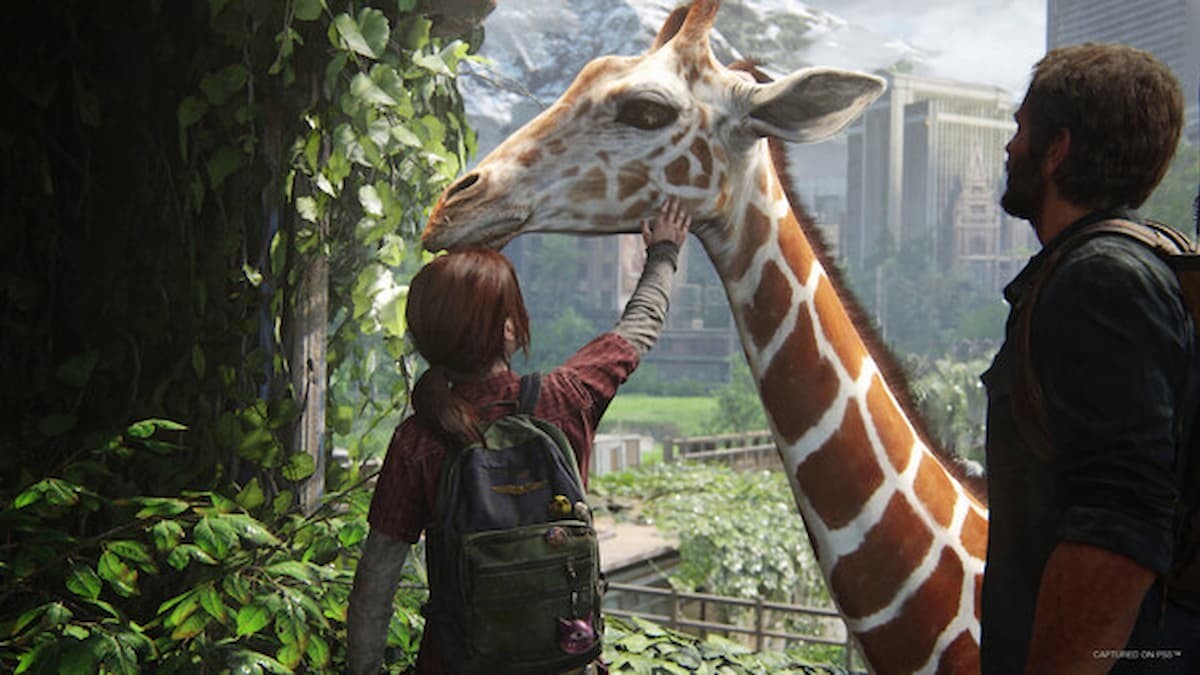
The game is the story
When people talk about the ideal "video game story," they're usually talking about something like Final Fantasy VI or Metal Gear Solid. A "good story" in a video game is usually a coherent narrative with characters and events, ideally one that's augmented or enhanced by gameplay. On occasion, folks will point to something like Dwarf Fortress, a game that uses the foundations of interactivity to generate elaborate narratives.
[caption id="attachment_358665" align="alignnone" width="640"]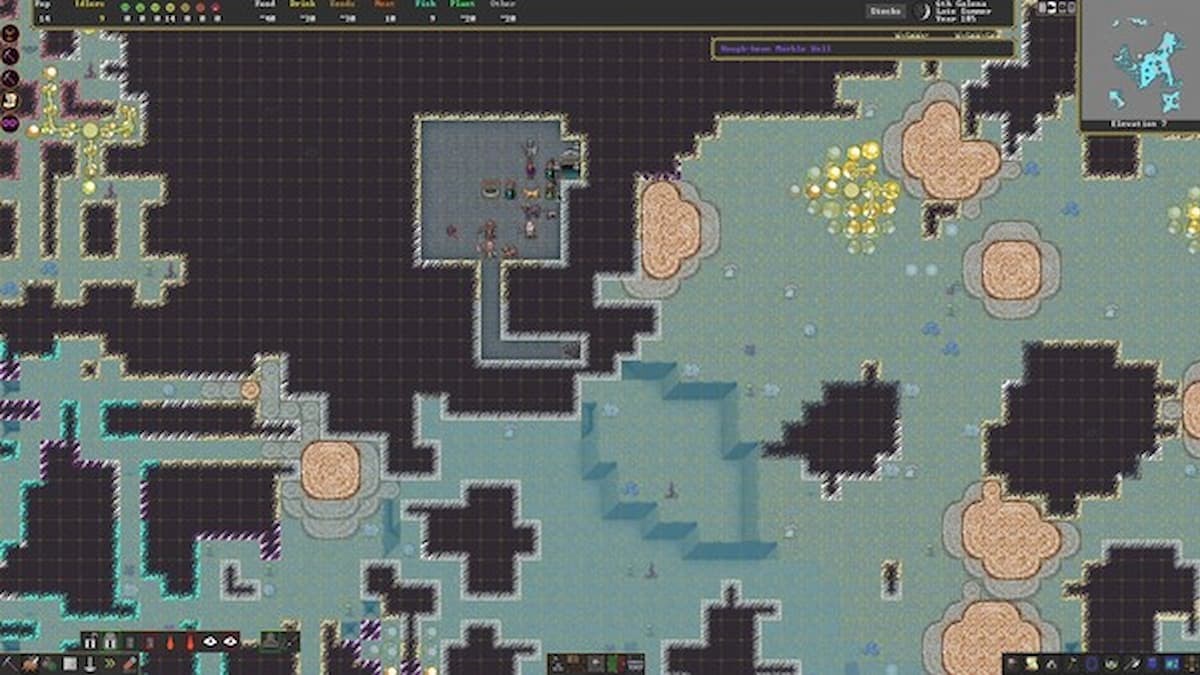 Image via Kitfox Games[/caption]
Image via Kitfox Games[/caption]
I think there's another, more interesting type of video game narrative, though. It's a kind that only exists in games and one that exists in every game. It's not always written deliberately, and it often comes into view only after the game has been played.
The automatic story
Human beings are really good at projecting stories onto blank canvases. When we recount times in our lives, we're very bad at viewing them discreetly. They're always a sequence of events that feed into one another, a little story whose only author is experience. Video games, very often, are an almost-blank canvas. Where life is a story we write, defined by our experiences, games are stories we come to, and stories we supplement with those experiences. They are experiences built by other humans, who have laid the groundwork for a new story.
I think that, by virtue of being an active experience, every game accidentally tells a story. I like to think of it as an "automatic story." It's not something anyone has written, and it's not something anyone is presenting, but it's something that springs up simply because of the way the human brain works. It's the detail we automatically fill in when we see broad brush strokes. It looks different for everyone, because everyone is both the author and the protagonist. I've talked through this theory with friends before, and they'll often scoff. Usually, the conversation circles around to Tetris. After all, everyone has played Tetris, but nobody can tell you the plot of Tetris. I think that's because the "plot" of a game like Tetris (or Pong, or Breakout, or whatever other arcade title you prefer) is entirely unique to the medium of games.
[caption id="attachment_358343" align="alignnone" width="640"] Image via The Tetris Company[/caption]
Image via The Tetris Company[/caption]
Games do something very interesting without even trying: they invite you to co-author a story. Back in 1984, Alexey Pajitnov wrote the barest skeleton of a narrative without thinking. He put a bunch of bricks on a screen, he offered up the opportunity to move those bricks, and, without realizing, he wrote the first line every Tetris story. Every single Tetris player for the last thirty-odd years has come away from the game finishing Pajitnov's tale. The moving bricks, consciously or otherwise, become characters, or structures, or cargo. The ratcheting tension and increased speed connect with everyone for one reason or another. For Pajitnov, things get faster to keep the game from getting boring, but for the player, it's impossible to avoid imagining a reason, some kind of narrative rationale. We are humans, connecting with the work of other humans, and without realizing, we have turned that experience into a story. One that's very difficult to tell, and one that can only really be felt.
Okay, but what about "real" stories?
Obviously, not all video games exist in such an abstract state. Sure, it's hard to describe the plot of Tetris, but you can explain exactly what happens in The Secret of Monkey Island. That game is obsessively authored, its characters are named and defined. How do games like that fit into my theory of the automatic story?
Many of the best straightforward "narrative" games will allow for some level of emergent storytelling. They'll give a player the tools to tell their own additional story, one that might support the main plot, or one that might totally derail and contradict it - sure, Link is on a quest to save Hyrule, but I'm on a quest to see how many different ways there are to drop a rock on Link's head. These aren't "automatic stories," necessarily; they fill the same space, they're similarly co-authored experiences, but they're baked into the game, not just your brain.
[caption id="attachment_358664" align="alignnone" width="640"]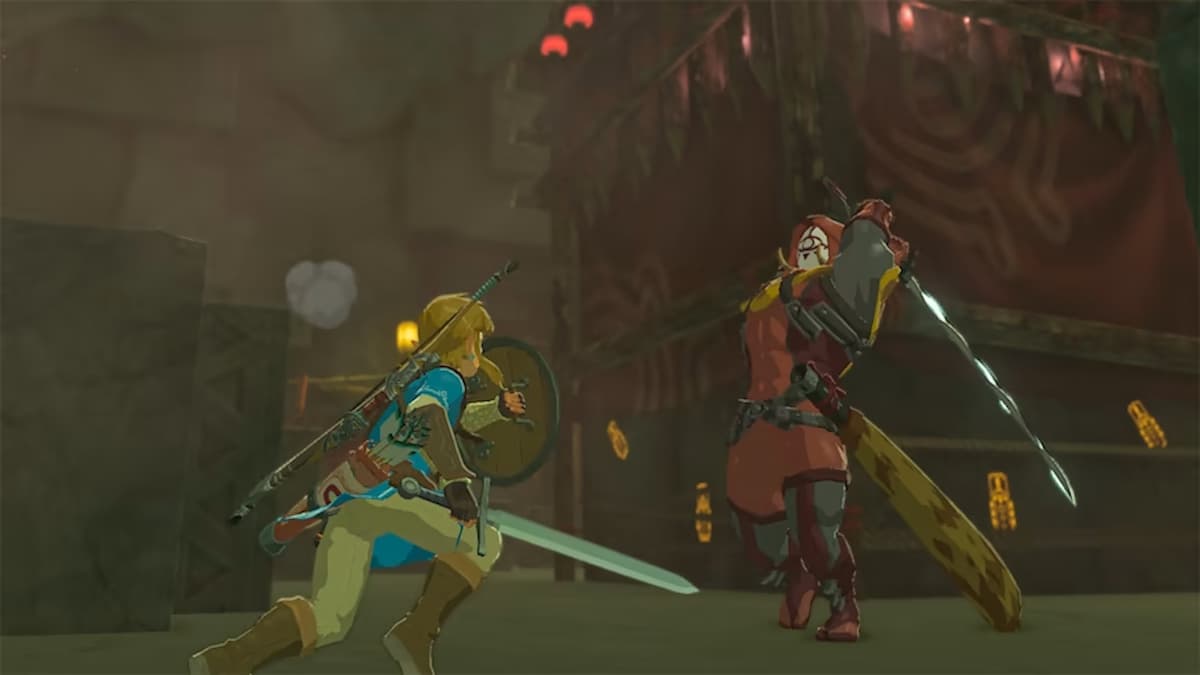 the Image via Nintendo[/caption]
the Image via Nintendo[/caption]
Even in narrative games that don't allow for much experimentation, though, I find that two stories are always present. There's the story being told by the game, and there's the story being told by the player. I think the poster child for this theory is The Last of Us - just about everyone can agree that The Last of Us has a plot. In fact, the game has been accused of being too plotty, to the point that a relatively faithful HBO Max series can act as a handy replacement. But when you play The Last of Us, you cannot disappear into the role of Joel Miller entirely. Video games call on us, as players, to inhabit a character, but we cannot become that character.
In The Last of Us, Joel does some pretty reprehensible stuff. He hits a lot of people in the head with bricks, and the player, simply by virtue of playing, becomes complicit in that brick-hitting. The Last of Us is two stories here: there's the story of a man who hits people in the head with bricks, and there's the story of a player, who chooses to encourage those actions - whether they agree with Joel or not, the only way to roll credits is to keep going.
To continue playing (and, more specifically, to continue playing well) is a narrative choice that the player makes, consciously or unconsciously, as the co-author of the automatic story. Simply by having the experience, by consenting to it, and by engaging with it, the player is saying something, encouraging a new story to blossom. That's not the same story as the one the game is telling; if you put the game down, both stories will stop at the same time, but they'll both mean something different. These two stories - the traditional and the automatic - complement each other. One is written, and one occurs spontaneously. Simply because a game has been crafted by a person, and it has been experienced by another person, it becomes its own story. It happens in the back of our head, with our assistance, knowingly or otherwise. It can't be written; it can only be experienced.
Because, ultimately, experience is a talented author.
The post Game design is narrative design: Exploring video games’ ‘automatic stories’ appeared first on Destructoid.
Is MacReady Or Childs The Thing At The End Of John Carpenter's The Thing? An Investigation
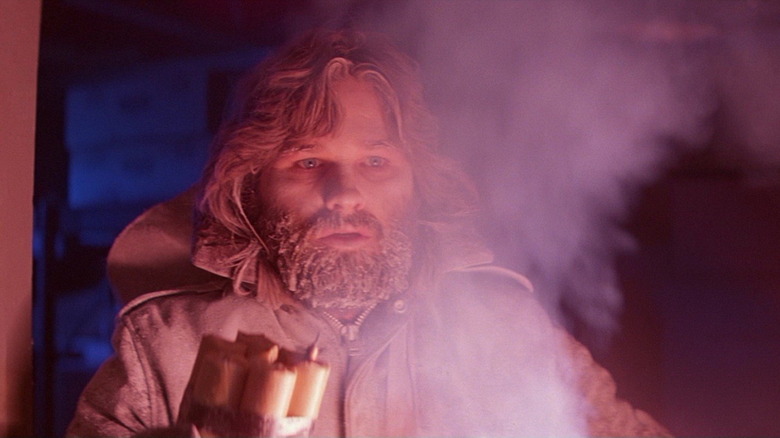
Hollywood seems to shy away from ambiguous endings, which is silly if you think in the long term, which admittedly isn't exactly Hollywood's specialty. Ambiguous endings tend to piss off audiences and those kinds of stories don't usually have huge box office returns in their initial theatrical run, but they also start a debate that can carry a film for decades through multiple home video releases, streaming contracts, spin-off comics, and remakes/reboots/legacy sequels.
"John Carpenter's The Thing" is a perfect example of this. Fans have been arguing whether or not the final two characters standing were Things ever since 1982. Is Kurt Russell's MacReady infected or is it Keith David's Childs? Or are they both Things? Or are neither of them Things?
Movie nerds, like myself, have been going crazy trying to put this particular puzzle together for years and I recently had the opportunity to rewatch the movie in its fancy 4K UHD transfer with my new girlfriend who hadn't seen it. I've seen this thing easily 40+ times from start to finish since I was a kid, so I decided on this watch I was going to try to pinpoint an answer to this age-old question.
And I have to tell you, I came away from this viewing absolutely, positively, unequivocally convinced that MacReady was a Thing.
The Theory That Childs Is An Imitation
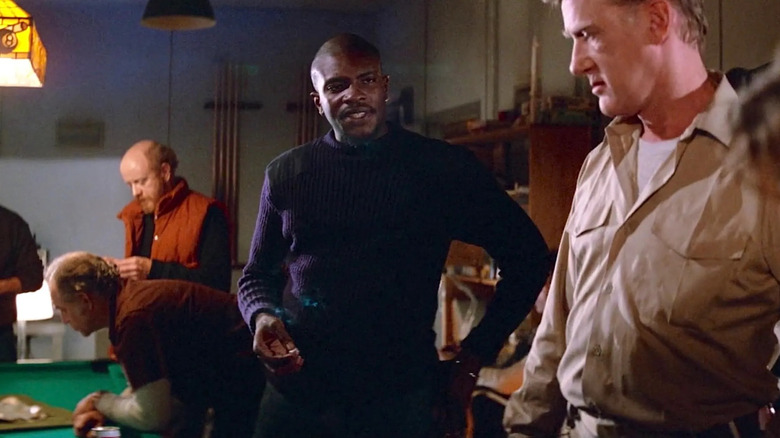
The most common read on the ending of "The Thing" is that Childs is most likely a Thing, and there is some logic to that line of thinking. Childs disappears for the entirety of the finale until the very end when he comes back with a pretty bogus excuse of why he was gone. "I thought I saw Blair. I went out after him and got lost in the storm," he says.
People also point out that steam is pouring from MacReady's mouth for the entirety of their scene, but none comes from Childs when he speaks. Is this the clue that Childs is alien?
That's a fun observation, but not something the movie holds to be true. When the Thing is interrupted while absorbing Bennings, it ends up trapped outside where it lets out an inhuman scream before it is torched. When it does that, there's clearly steam coming from its mouth. It is, after all, a perfect imitation of a man and if figuring out who was a Thing was as easy as checking to see if the skin was cool to the touch, then you wouldn't have a very exciting sci-fi/horror movie.
There's An Uncomfortable Racial Component To The Childs Theory
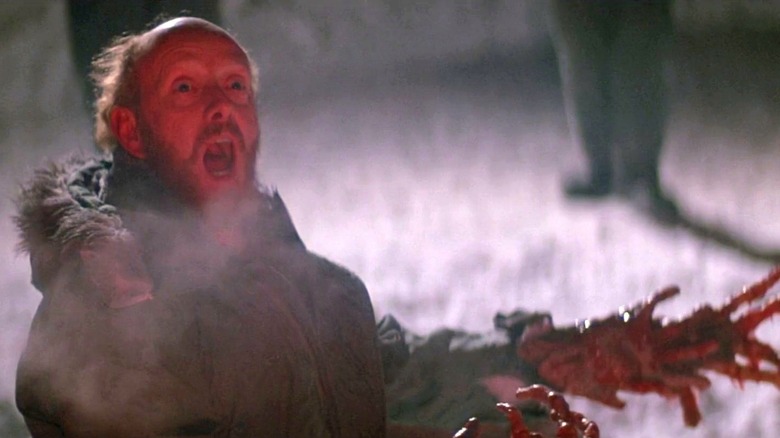
Keith David pointed out in a 2017 interview with PeopleTV that Childs making it to the end of the movie was something of an uncommon move at the time:
"Traditionally, cinematically, you know usually the Black guy gets bumped off if not in the first act, you know, he certainly doesn't make it to the end. I made it to the end."
Seeing a person of color survive a genre movie in 1982 was unique enough that it triggered many viewers to question why he was there. I'm not saying it's racist to consider Childs a suspect in a movie built around paranoia, especially with his sketchy excuse for why he disappeared, but the rarity of a Black character making it to the end of a studio horror movie could explain why some folks automatically assume he has to be there for a reason that might not be totally innocent while feeling confident that the traditional white leading man can't possibly be the evil one.
I believe Childs ran off and got lost. It's dumb, but it's believably dumb, the kind of thing that you can actually see happening if this was the real world. People do dumb things and there's no greater motive or 4D chess being played. People do dumb stuff that makes them look guilty.
On the other hand, I think MacReady was not only a Thing by the end of the movie, I think he was turned very early on.
That sounds a little contradictory, I know, considering I just said that rarely is there a Machiavellian plot at work in the real world and that 4D chess is hardly ever a thing, but I do believe MacReady was playing the subtle game as a Thing and made it to the very end.
Let's Unravel This Conspiracy Theory
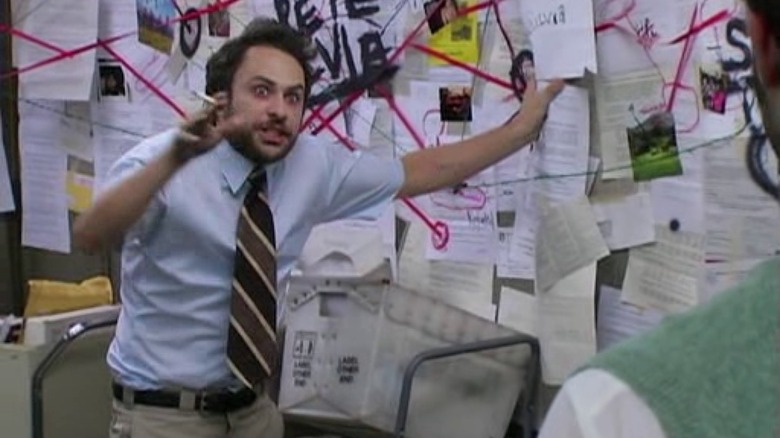
If my thesis is that Kurt Russell is a Thing then I need to pinpoint when exactly I think he turns, which is tough for a myriad of reasons, not the least of which is that we, the audience, are working off of a bunch of assumptions put forth by characters who are guessing their way through a tense situation.
How does a Thing take over a human? Is it a complete merging of two bodies that leave behind ripped clothes or can a Thing infect a human via a small particle in food or drink, as Fuchs suggests? How long does the process take? How much of the human's personality and memories are transferred to the Thing? All this is (purposefully) vague.
We know MacReady is not the first to get infected. That's either Palmer or Norris and that's a whole other debate that gets more confusing the more you hear about the behind-the-scenes stories from the making of the movie. After MacReady and Doc Cooper take off in the helicopter to check out the Norwegian camp, we see the Thing dog wander into a room with one of the research station's residents, who we only see in silhouette.
Norris Or Palmer?
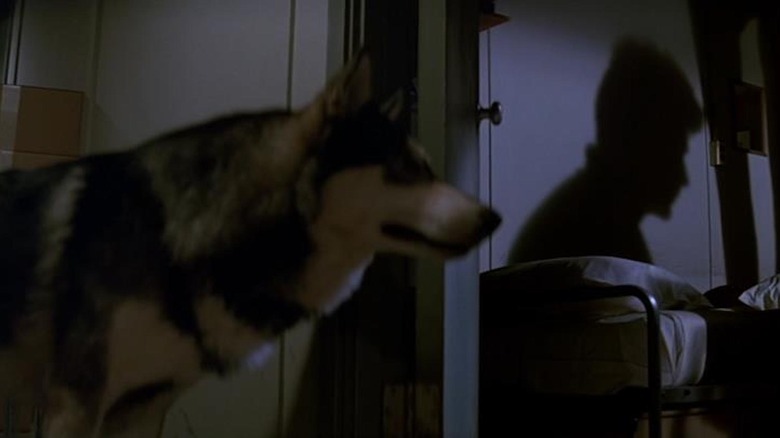
I've always believed this is meant to be Norris. It looks like Charles Hallahan's hair and the neck of the shirt in the silhouette looks like his wardrobe way more than Palmer's jean jacket. However, producer Stuart Cohen said the intent was for that to be Palmer, but since David Clennon's silhouette was so distinct, they had stuntman (with the coolest stuntman name ever) Dick Warlock stand in for the silhouette in order to throw audiences off. If we accept that as fact (and ignore how the silhouette clearly looks more like Norris), then it's unclear when Norris turns, but I think it's pretty early on, which is important because he's very close to MacReady a whole lot before he's revealed to be a Thing.
My best guess is that MacReady is turned somewhere between coming back from seeing the UFO in the ice (he flies out there with Norris and a third person who is obscured by his winter gear, but I think it's Fuchs, who is definitely human) and when Blair goes nuts and destroys their equipment. There are a lot of time cuts in this section where just about anybody could have been turned.
It's possible that Norris gets MacReady when they're alone standing on the UFO, but then that raises the question of how much of a person's memories and knowledge is carried over to the Thing. If MacReady flies them out there and is turned then how does he fly them back unless the "perfect imitation" also comes with all his memories and knowledge?
Blair In The Tool Shed
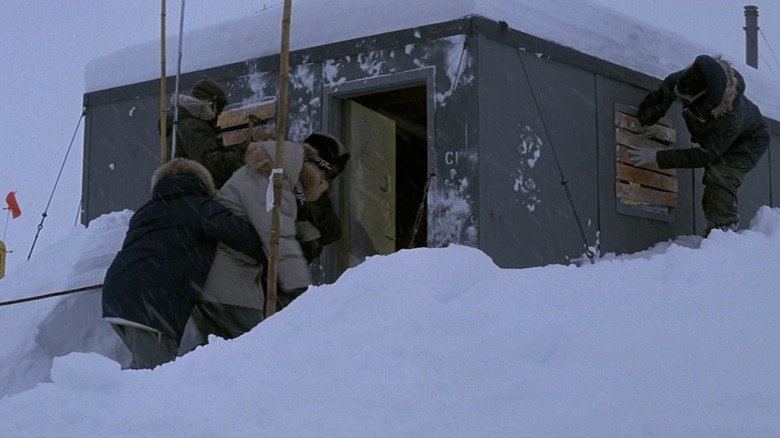
For the sake of argument, let's assume MacReady is turned somewhere between getting back from the flying saucer and when Blair goes axe happy with the radio equipment.
I believe MacReady is a Thing here because I'm pretty sure he turns Blair. Again, a big deal is made about how everybody should prepare their own food and eat out of cans because the theory is that a small piece of the Thing can infect you. If you notice, when they subdue Blair and put him in the tool shed, MacReady waits for everybody else to leave and then he picks up a bottle of booze sitting in front of Blair and takes a big swig, and sets it right back down in front of him.
From this moment on, MacReady is suspicious as hell. Fuchs is the next to die and MacReady is the last person to see him alive. Notice when he enters the room to talk with Fuchs he makes sure to look up and down the hall to make sure they're alone. Fuchs acts extremely suspicious of MacReady here, damn near looking like a deer frozen in headlights when he enters the room. He even has his hand on a glass jar (acid, maybe?) until he's sure Mac isn't attacking him.
MacReady leaves and the next thing you know the power goes out, Fuchs sees somebody and ends up outside, in the snow, where he finds MacReady's torn-up clothes. Next thing you know, Fuchs is missing and MacReady leads the hunt to find him.
Trust Is A Tough Thing To Come By These Days
In the age of "Among Us" and popular deduction games like "Werewolf" and "Mafia" you know the best strategy if you're the imposter is to act as much like a normal person as possible while looking for your moment. So it makes sense that MacReady is taking charge of the situation as if he's really hellbent on finding the real killers. That puts him in a position of power in the group and if he's the one most visibly the leading man/good guy it makes him much less suspicious.
In lieu of walking you through this part of the movie scene by scene, let me just say that MacReady plays the part of the heroic leader very well, but still has moments where he's acting incredibly sus, as the kids would say, including leading Nauls up to his shack alone, which causes the rest of the group to distrust him when Nauls comes hauling ass back without MacReady because he found the remnants of his torn up clothes.
This is the only part of the movie where the filmmakers really want the audience to question MacReady. He claims the clothes were planted and ends up proving his humanity with the blood serum test.
Or does he?
The Blood Test Does Not Absolve MacReady
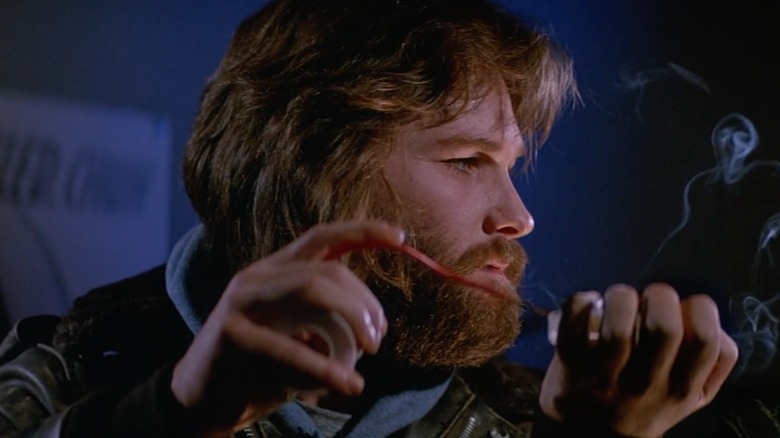
Watch this scene very closely. We never see MacReady give his blood, just the petri dish with his name on it. Obviously the other characters wouldn't let him get away with providing his donation in secret, but there's nothing to say he couldn't have done a switcheroo with untainted blood since he was the one controlling the experiment.
When Palmer is revealed to be a Thing through this test, that might also make MacReady look good. Why would a Thing out another Thing? My response: Why wouldn't it? The ultimate goal is survival and if it outs one of its own that takes all suspicion off of it.
Also, it should be noted that MacReady's flamethrower mysteriously doesn't seem to be working for just long enough for the outed Palmer to kill at least one of the for-sure humans.
That brings us to the finale and once again, MacReady's big plan sounds cool on the surface ("Let's torch this whole compound!"), but when he's already admitted that the Thing just wants to go back to sleep in the ice and be found by a rescue party down the line, isn't the plan to burn down the entirety of Outpost 31 essentially guaranteeing that this happens?
The Blair-Thing Problem
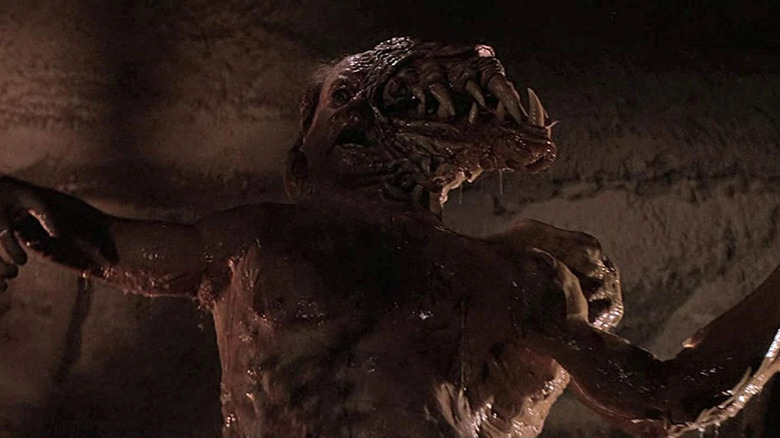
The biggest wrinkle in my crazy MacReady-Was-A-Thing conspiracy theory here is MacReady's confrontation with the Blair creature at the end. Both Nauls and Garry end up killed by the Blair Thing and Childs ran off somewhere, which leaves just MacReady alone against the final boss. If Mac was a Thing then wouldn't he and the Blair monster just high-five each other and celebrate their victory?
I have a couple of thoughts here. One is the wild card that is Childs. MacReady knows he's still out there, armed with a flamethrower. So maybe he's acting as if he's still being observed by someone human. That feels a little flimsy even to me, but it's something to consider. The other thing is you need to look at the final monster. The Blair Thing is going absolutely bananas. Could this be a residual effect of the human Blair showing through in the imitation? He already seemed to have lost his mind while he was human.
Whatever's going on, Blair isn't content to just be human Blair. Instead, he's this amalgam of dog Thing, alien plant Thing, and human Thing, aka the most conspicuous-looking alien monster ever. Maybe the MacReady Thing knows that the Blair Thing has lost its mind and threatens to blow its cover for whatever rescue or search party comes later on down the line and the only solution is to eliminate it completely by blowing it up with a stick of dynamite?
Childs And MacReady's Last Moments
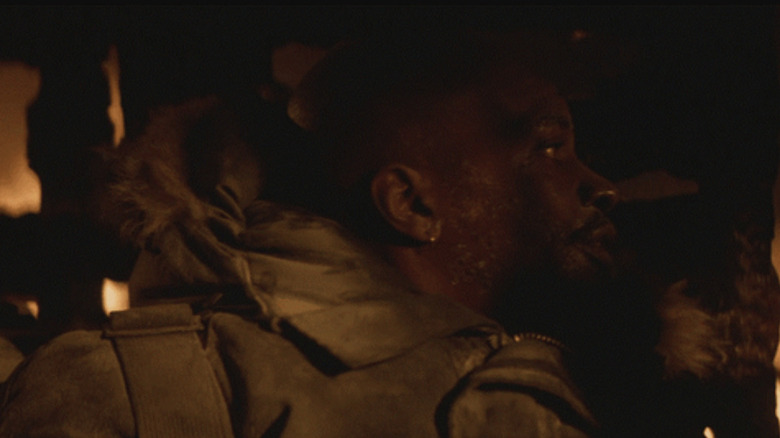
And that brings us back to that final moment between Childs and MacReady as Outpost 31 burns down all around them.
What is the last thing MacReady does in this scene? Why, he hands over an open bottle of booze to Childs, and the second that bottle touches Childs' lips Ennio Morricone's theme kicks in and Carpenter cuts back to Kurt Russell, who smiles and gives a little knowing laugh. I read this as MacReady infecting Childs here at the very end of things just like he infected Blair earlier. Now all that's left to do is wait for Childs to be taken over as they slowly freeze and await the rescue team.
I must acknowledge that the ending we got was only one of many endings considered, some even shot, that never made it. In the script by Bill Lancaster, a lot is different about the final Blair Thing encounter (including a nod to the original Howard Hawks version of "The Thing" in which they electrify the floor), but the ending is largely the same with Childs and MacReady as the last men standing.
It is in the script that MacReady "hands the bottle to Childs. Childs smiles back and takes a healthy swig."
Alternate Endings
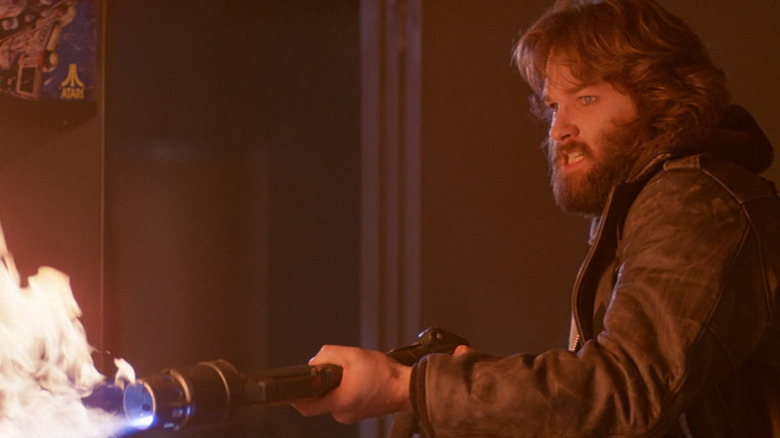
Bill Lancaster reportedly wrote a few different endings, including one in which both Childs and MacReady are Things and are rescued, but Carpenter apparently wasn't a fan of that ending and it never made it before cameras. Carpenter did shoot a couple of different endings, one of which had MacReady saved by a rescue helicopter. He takes a blood test again and is relieved to find he isn't a Thing. That was done because of fears of the ending we got being too bleak.
The other ending is actually more of an extension of the one we ended up with in which we see the smoking remains of Outpost 31 in the distance as another Husky runs across the snow, away from the camp. It stops, looks back, growls, and runs on, clearly insinuating that a Thing did get out even with the sacrifice of the living humans. Footage of that ending is floating around in the internet ether.
There was also a Dark Horse Comics sequel to "The Thing" released in 1991 in which MacReady and Childs are shown as both being human, but that's more of an interesting side note since we have to go with what ultimately ended up on screen.
Keith David And Kurt Russell's Thoughts On The Ending
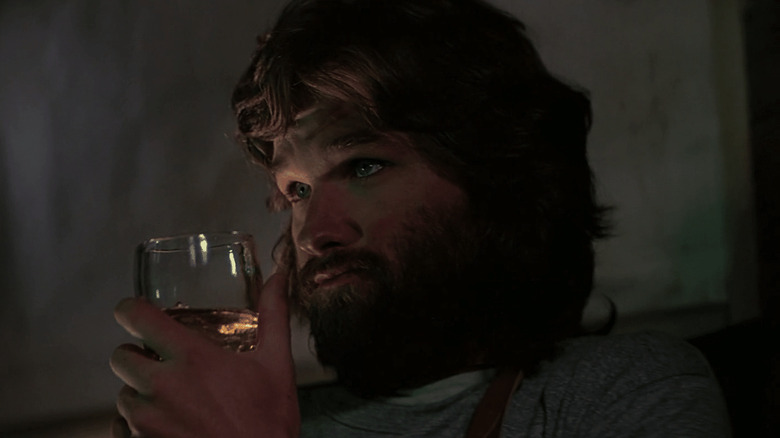
As far as Keith David is concerned, he said he played the ending as if he was human and just assumed the ambiguity was there to set up a sequel. I had the chance to bring this up to Kurt Russell back in 2014 and he told me that they shot "The Thing" with an ending neither he nor Carpenter liked. I'm not sure which of the many endings I've mentioned was the one they didn't like, but Russell said he and Carpenter spent a lot of the shoot kicking around finale ideas and settled on the one that ended up in the movie.
He called it a Cold War analogy and said it's all about that last line "why don't we just wait here for a while and see what happens?" When I pressed a little harder on that, he just laughed and said "He (Childs) could be a Thing, I could be a Thing and not even f****** know it. I don't know."
So, yes. The point of "The Thing" is ambiguity and maybe searching for clues in a movie that was reworked so much on the fly is a fool's errand, but man is it fun testing out these insane theories.
The Brilliance Of The Thing
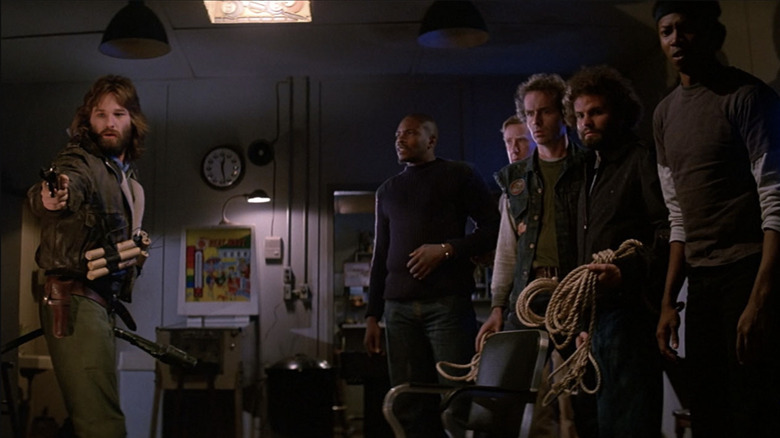
From the very first frame, John Carpenter is telling you not to believe your eyes. The movie opens with two jerks in a helicopter shooting at a cute dog. It turns out, of course, they were hunting a monster in disguise, but for the first time audience all they see is an animal being shot at and assumptions are made that the humans in the helicopter are the bad guys and the dog is an innocent that must be protected.
Everything you know about how these kinds of movies are supposed to go is thrown out the window from the moment the movie starts, so you can't discount the possibility that our hero is actually the villain who successfully navigated the entire film to end up sitting there, with that damn smile on its face, knowing that it has won.
So, yeah. MacReady's totally a Thing.
Read this next: Horror Movies That Make Us Root For The Villain
The post Is MacReady or Childs The Thing at the End of John Carpenter's The Thing? An Investigation appeared first on /Film.
John Noble's Role As The Diviner In Star Trek: Prodigy Continues A Trend He Started On Fringe
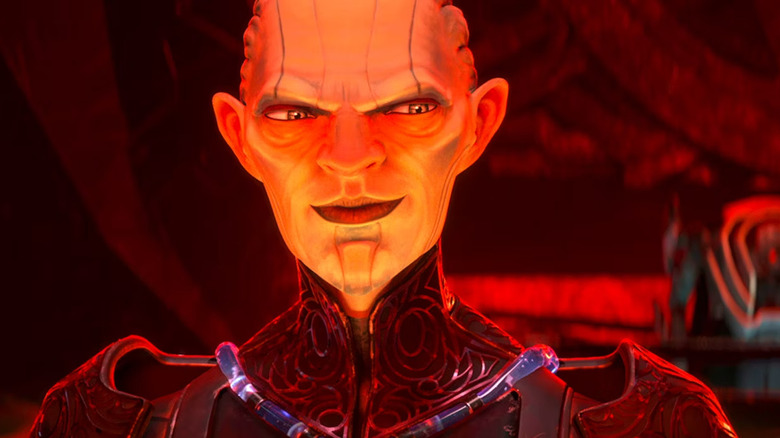
Warning: This post will contain minor spoilers for the first season of "Star Trek: Prodigy."
The Diviner in "Star Trek: Prodigy" functions as the series' central villain. Played by John Noble (of "Fringe" fame) the Diviner is an alien who owns a mine somewhere deep in the galaxy. He has enslaved hundreds of teenagers and is forcing them to dig through the planet in search of ... something. The Diviner is, in fact, looking for a missing Starfleet vessel called the U.S.S. Protostar, an experimental ship that can travel faster than any starship to date. When a group of escaped teens find the Protostar first and abscond with it, the Diviner takes off in pursuit.
The Diviner's wicked scheme will eventually be revealed. He has traveled back in time to find a Federation starship and equip it with a secret computer virus that will automatically cause all Starfleet vessels to attack one another. He aims to destroy the federation as an act of pre-revenge. The Diviner has, in fact, come from the future, a time when his species will make contact with the Federation for the first time. Traditionally, First Contact instigates an age of peace and togetherness among many planets, but in the Diviner's world, it kicked off a brutal civil war that destroyed his people. His only recourse was to go back in time and destroy the Federation before that can happen.
The Diviner has a deep, sinister voice, a robotic Darth Vader-like enforcer, and even a sword-wielding child in the form of Gwyn (Ella Purnell). Comparing him to a "Star Wars" villain would not be wholly inappropriate.
'A Grumpy Old Fellow'
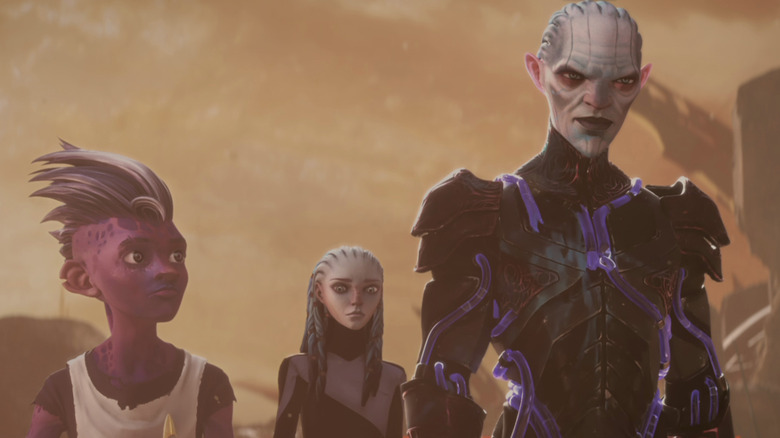
Unlike certain Emperors' flair for wickedness, however, the Diviner takes no pleasure in being evil. Indeed, in a 2022 interview with the website The Beat, Noble points out that, like most characters described as "villains" in "Star Trek," the Diviner is actually working to achieve a goal he believes to be righteous. This is a lesson he learned playing a seemingly villainous character on "Fringe." No one, he feels, wakes up aiming to be villainous. They merely have different values than the heroes. It's the secret to believably playing a sinister person. When asked just how evil the Diviner was, Noble was diplomatic, pointing out that it was all a matter of perspective. He said:
"It depends if you're talking his internal truth, or what appears to be his truth. I guess we're talking what appears to be his truth. His own internal truth: pure as the driven snow -- I believe that it is. Obsessively so. But the audience has probably thought, 'Well, he's a grumpy old man.' [Diviner's voice] 'A grumpy old fellow.' With a big, deep voice. Perception would be that he's a bad one."
Some of the more interesting characters throughout "Star Trek" have a hazy or inverted moral code. On "Star Trek: Deep Space Nine," the Cardassian Garak (Andrew Robinson) once declared that lies and propaganda are vital for society to function. Quark (Armin Shimerman) from the same show is deeply principled, and only happens to devote his life to acquisition and wealth. Noble understands that notion. He even understands that the Diviner has a deep-seated talent for obfuscation, and for manipulation. The Diviner has no compunction about plying these talents.
'He Can Become Many Things'
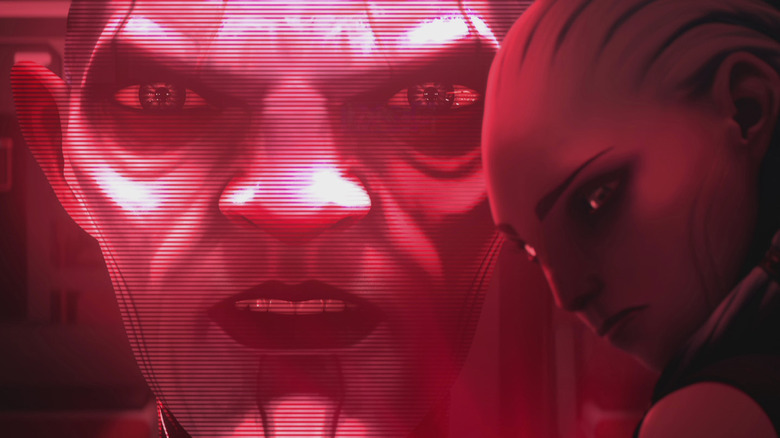
Noble said that a dramatic villain, like any character, must be approached with understanding. Even if an actor would morally disagree with what their character says and does, it's not their job to communicate the show's point of view to the audience. As such, he looks at the Diviner as complex, fully realized and capable of extremes ... including gentleness and affection. This was the lesson he learned from "Fringe." The duality of humanity, he found, was a common theme on that show, and it aided him in bringing the Diviner to life. He said:
"I play him, always, that he's playing his truth. Always, always. So I don't have any doubts about that. And we're all multifaceted. We have many faces. We can be angry, we can be loving. All these things can happen. And we see that side to him, and we see a softer side later. He can become many things. It was a theme that we explored a lot during 'Fringe,' the duality. In fact, we played the dual characters in that one. And it was fascinating to get to ask, 'What would happen if ...'"
Noble is leaving it up to the show's creators, Dan and Kevin Hageman, to decide just how sympathetic, or evil, the Diviner is meant to be. And in them he has faith, saying:
"So it keeps me interested, I must say ... It's up to Dan and Kevin whether to bend it towards the adult audience or keep it with the kids audience. But they're incredibly bright people, they'll make the right decision. I know this of them, I know this of all of them. Brilliant people."
The first season of "Star Trek: Prodigy" is now available on Paramount+.
Read this next: 13 Reasons Why Deep Space Nine Is The Best Star Trek Show
The post John Noble's Role As The Diviner In Star Trek: Prodigy Continues A Trend He Started On Fringe appeared first on /Film.
10 Best Star Wars Games of All Time, Ranked
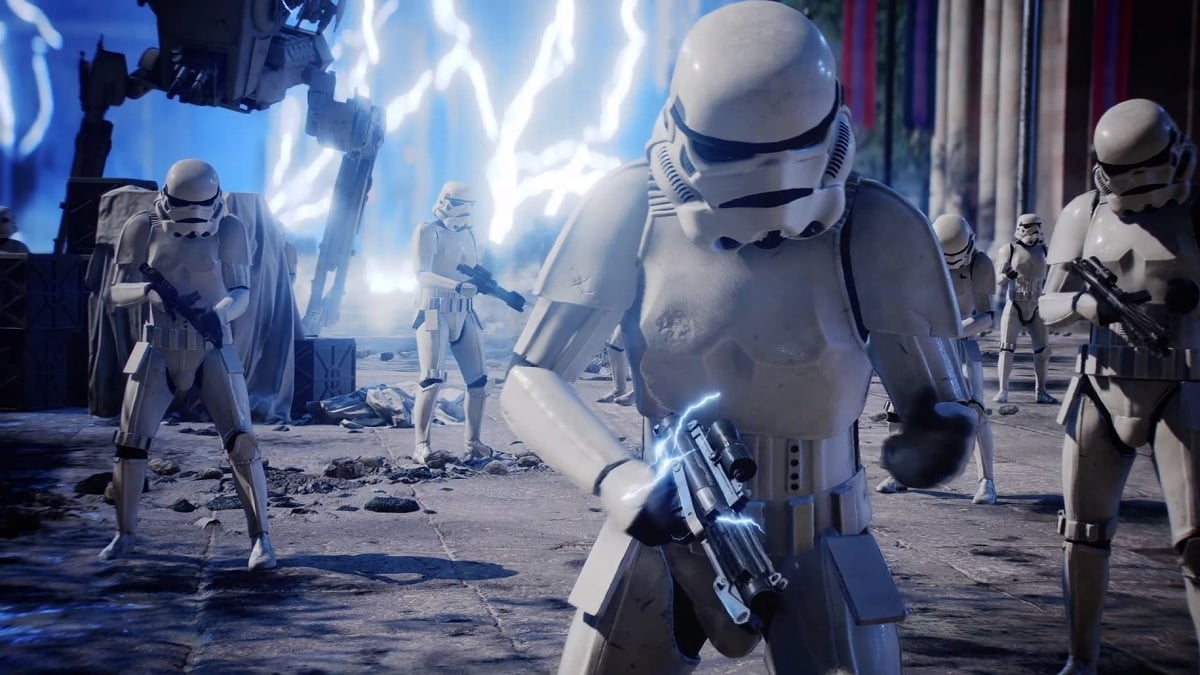
Counting down the 10 Best Star Wars games isn't easy, with so many good games out there...
With over four decades of Star Wars games, many of which remain easily accessible to the general public, it can be difficult to narrow things down to such a short list. The quality assurance oversight historically from LucasArts, (Lucasfilm's now-defunct gaming division,) and now from Lucasfilm Games (the reformed modern division created by Disney and Lucasfilm), has ensured that developers and publishers put in the necessary time and effort into crafting enjoyable and successful Star Wars titles that don't tarnish the reputation of the corporate IP. That said, some games still clearly rise to the surface as being well beyond the usual fare...
[caption id="attachment_358654" align="alignnone" width="1200"]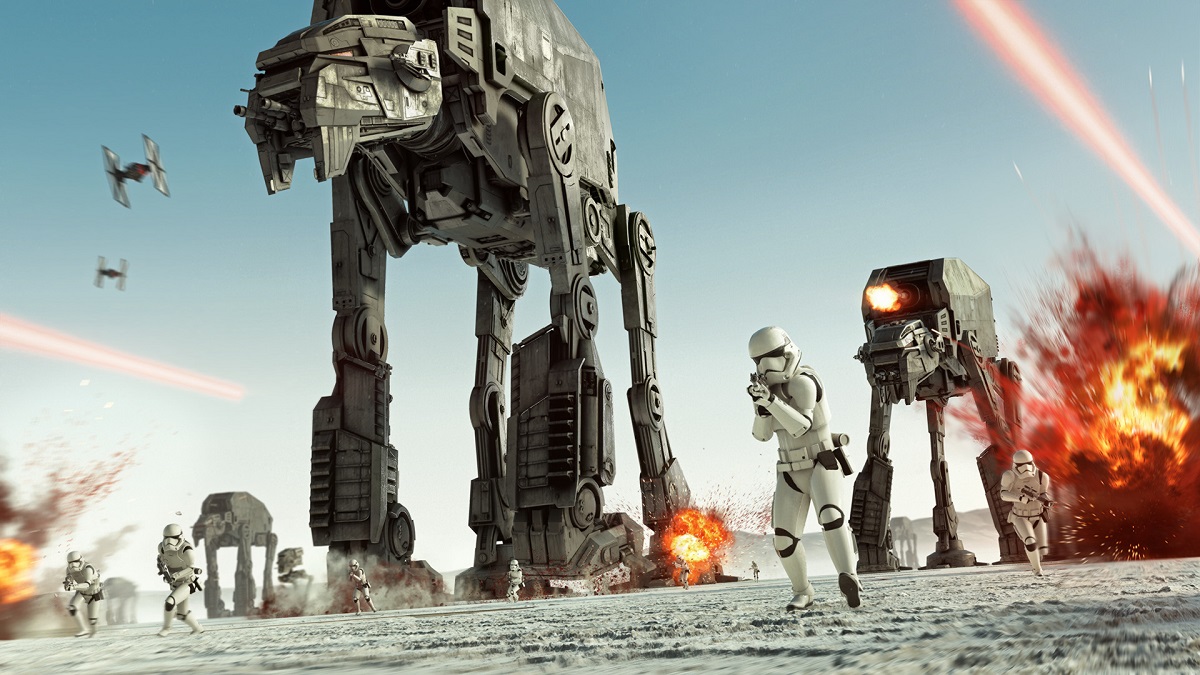 Image via Electronic Arts[/caption]
Image via Electronic Arts[/caption]
#10: Star Wars: Battlefront II (2017)
Despite experiencing arguably one of the worst launches in gaming history, (due in no small part to the game’s ridiculously-excessive monetization, severe game balance issues, and an overall lackluster amount of content,) EA's second entry in the rebooted Battlefront series made a surprisingly strong comeback in its short post-launch lifespan. With the removal of pay-to-win elements like burn cards, hero unlocks, etc., and the addition of new maps and modes, Battlefront 2 finally began to redeem itself in the eyes of both casual players and hardcore fans alike.
While EA’s decision to abandon the game so soon after the removal of loot boxes (and the overall reduction of in-game monetization) did come across as a bit conspicuous, the developers at DICE did an excellent job redeeming a game that only months before would’ve been deemed unsalvageable. It’s unfortunate that this goodwill has not, as of yet, prompted the announcement of a new sequel.
[caption id="attachment_358562" align="alignnone" width="1200"]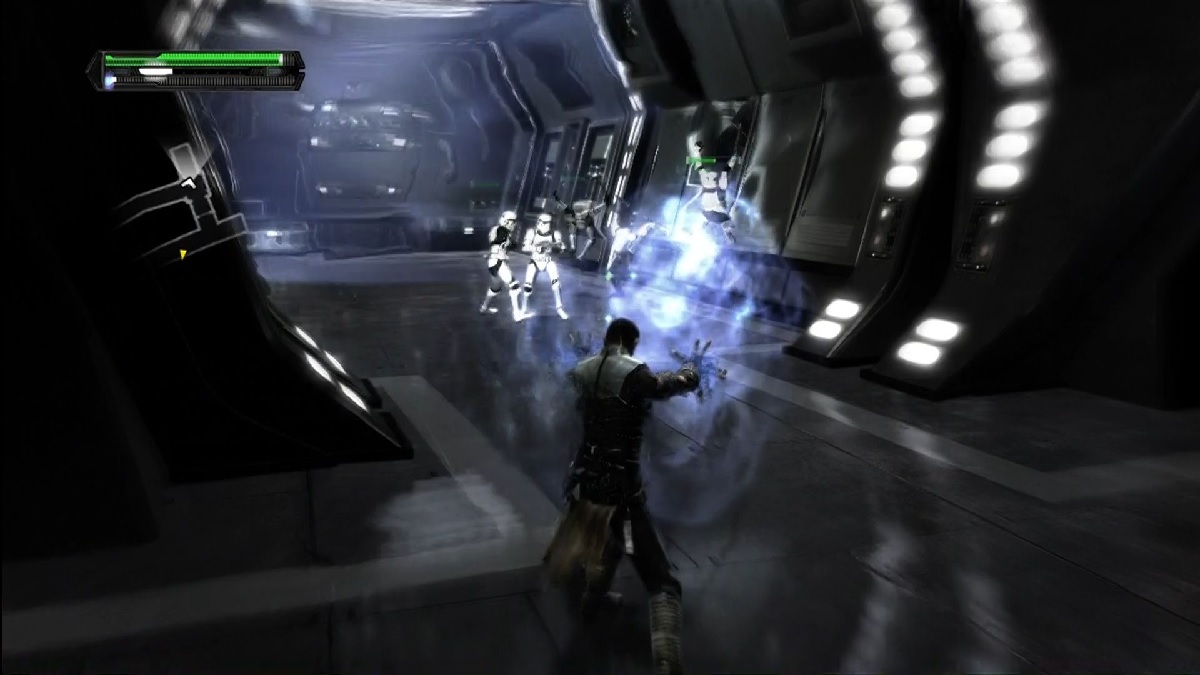 Image via MobyGames[/caption]
Image via MobyGames[/caption]
#9: Star Wars: Galaxies
While sadly no longer accessible in its original form, the legacy of Star Wars Galaxies lives on in the hearts and minds of Star Wars fans across the globe. While many other Star Wars games placed players in the action-heavy role of Jedi, smugglers, and other roles that harken back to the films, Star Wars Galaxies presents you with the opportunity to not just fight for the vast universe, but to actually live within it.
Social interactions and server-wide roleplay and collaboration were just as crucial to the gameplay as were the lightsabers or an E-11 blaster rifle. Whether you wanted to be a pilot, an entertainer, a medic, or any number of other possible professions, you had the freedom to do exactly that. Given the passionate, yet relaxed attitude of both the game and its playerbase, it’s small wonder that Star Wars Galaxies has continued to live on, in an unofficial, community-run capacity.
[caption id="attachment_358550" align="alignnone" width="1200"]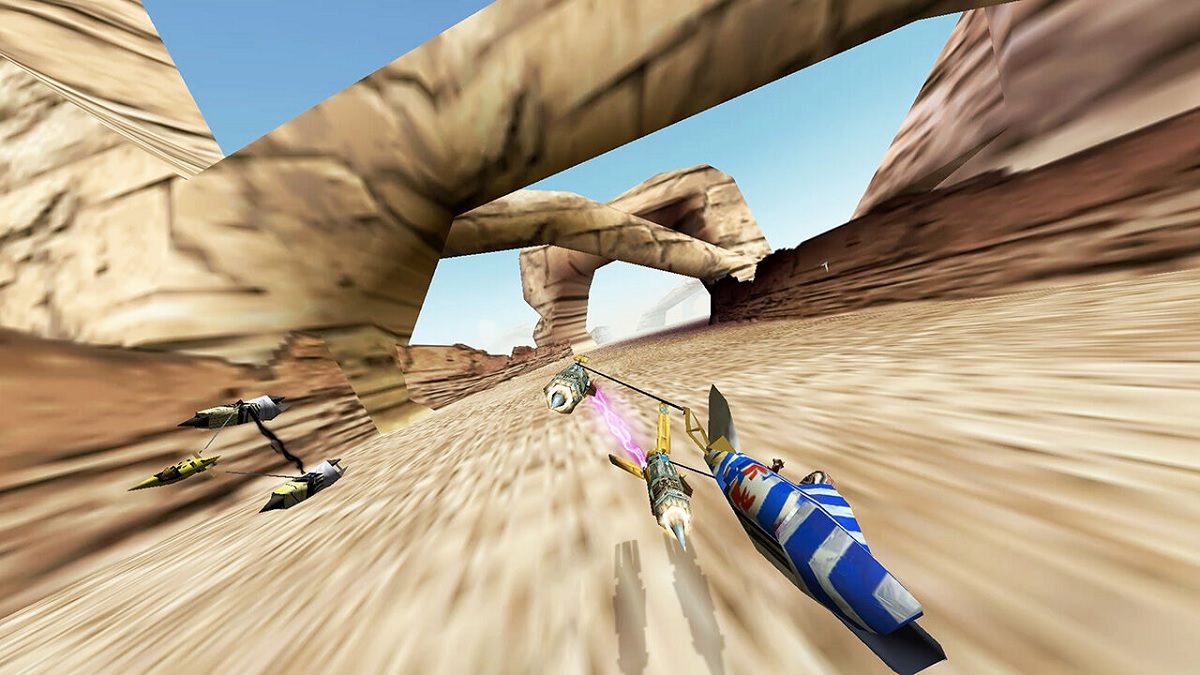 Image via MobyGames[/caption]
Image via MobyGames[/caption]
#8: Star Wars Episode I: Racer
Whether you played it in the arcades or on a home console, Star Wars Episode I: Racer manages to capture the frantic high-speed energy of sci-fi racing like few others before or since. The frantic speed and intensity of each race, combined with the aggressive AI bots that are always more than happy to bump you out of the race, forces you to pay close attention at all times.
No matter if you’re racing across the desert plains of Tatoonine, or the Mon Gazza speedway, you better be prepared for every sudden twist and turn along the way, or you’ll find your podracing career brought to a sudden, unfortunate end. While the controls might be a bit janky, the hilarity of exploding and being reduced to a heap of mechanical rubble, as your character’s heavily-compressed voice screams in agony, is enough to make one burst out laughing with masochistic glee.
[caption id="attachment_358562" align="alignnone" width="1200"] Image via MobyGames[/caption]
Image via MobyGames[/caption]
#7: Star Wars: The Force Unleashed
While a few other Star Wars games let players choose between the light and dark sides, usually from a light or neutral position, Star Wars: The Force Unleashed explicitly explored the darker side in greater depth. The Force Unleashed has the player take on the role of Darth Vader’s secret apprentice, who sets out to prove himself to his dark master.
The hack-and-slash combat system, combined with the detailed physics system, allows the player to use both their lightsaber and the force in new and inventive ways, and explore a variety of iconic Star Wars locales, as they progress through the compelling narrative. With a Nintendo Switch port released just last year, there’s no better time to jump in and unleash your own power.
[caption id="attachment_358565" align="alignnone" width="1200"]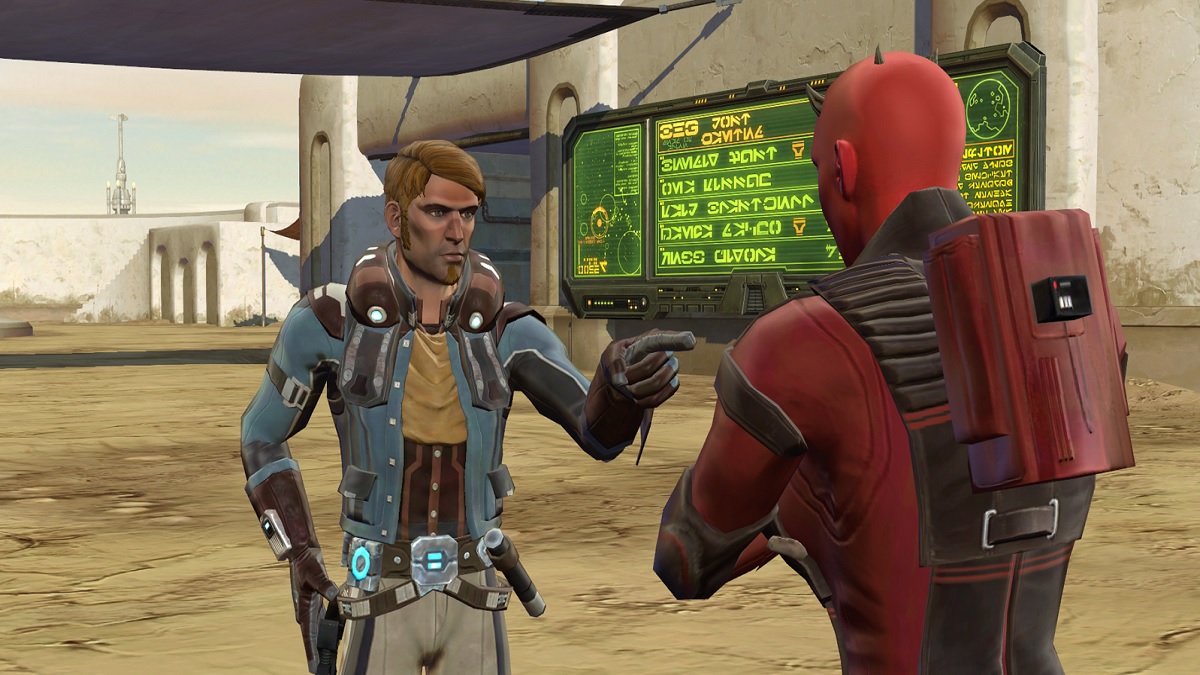 Image via MobyGames[/caption]
Image via MobyGames[/caption]
#6: Star Wars: The Old Republic
Given its over eleven-year lifespan so far, it’s hard to argue that Star Wars: The Old Republic hasn’t stood the test of time. Where it might lack, such as its merely-passable graphical fidelity and generic art style, it mostly makes up for with the vast amount of story and gameplay content. Whether you prefer to play solo, fight alongside other players in PVE missions, or test your mettle in PVP, or all of the above, you can do so in this title. The inclusion of new expansions and updates over the years makes Star Wars: The Old Republic a hard title to say no to.
[caption id="attachment_358655" align="alignnone" width="1200"]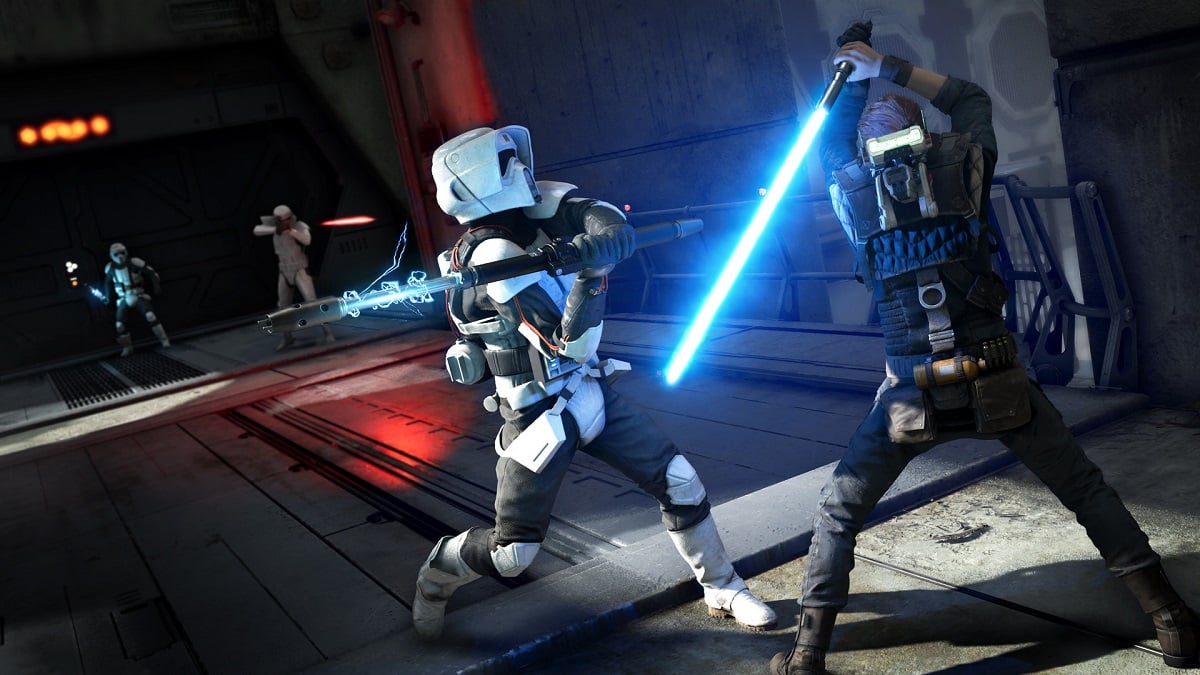 Image via Electronic Arts[/caption]
Image via Electronic Arts[/caption]
#5: Star Wars Jedi: Fallen Order
Respawn Entertainment’s first foray into the universe far far away, with Star Wars Jedi: Fallen Order luckily proved to be a smashing success, in large part due to the game’s rich story campaign, challenging but not necessarily unforgiving boss battles, and invigorating puzzles and platforming sections. While there still are certain elements (such as the convoluted navigation and performance optimization) that certainly disappoint, these are few and far between when compared to what works here.
[caption id="attachment_358571" align="alignnone" width="1200"] Image via MobyGames[/caption]
Image via MobyGames[/caption]
#4: Star Wars Jedi Knight II: Jedi Outcast
Many Star Wars games to date have allowed players to experience the heroic fantasy of wielding a lightsaber against a wide range of foes. However, few have incorporated lightsaber combat mechanics as intricately as Star Wars Jedi Knight II: Jedi Outcast.
The fluid responsiveness of the combat system allows players almost limitless options in terms of swing angles and directions, making you truly feel as if the force is with you. While the story-driven campaign is competently told, and its levels provide players an ample degree of challenge, it’s the multiplayer component that truly stands out.
[caption id="attachment_358576" align="alignnone" width="1200"]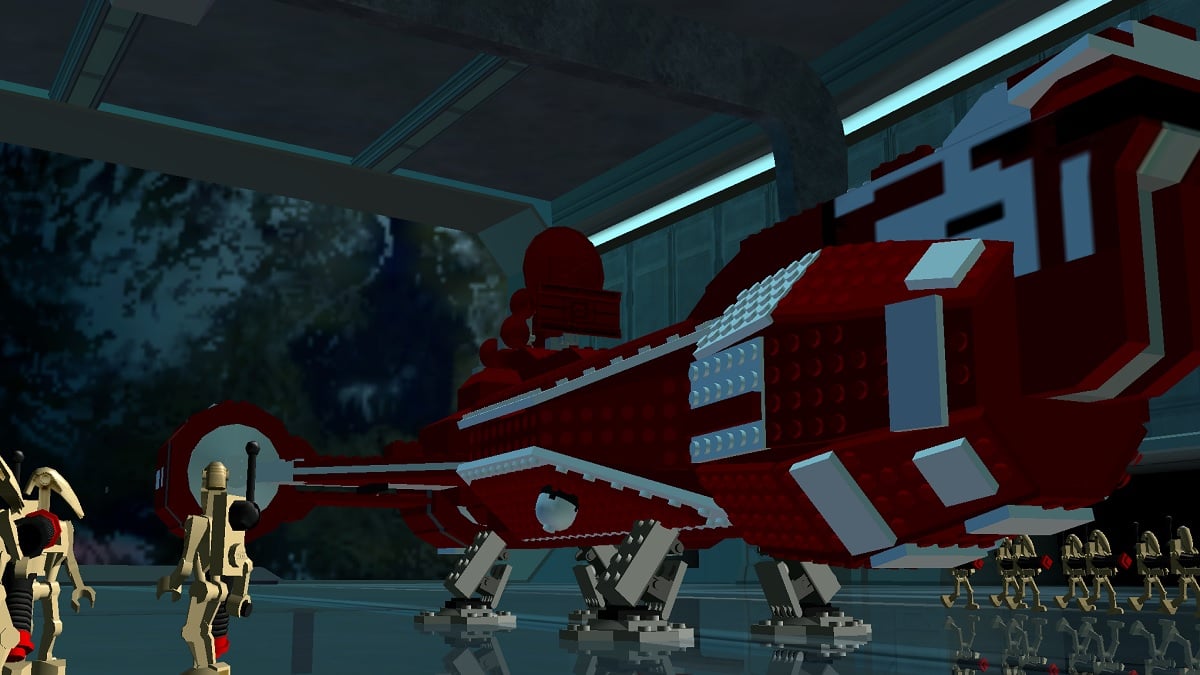 Image via MobyGames[/caption]
Image via MobyGames[/caption]
#3: LEGO Star Wars: The Complete Saga
While the title itself now might be a bit inaccurate, owing to the addition of the recent sequel trilogy, LEGO Star Wars: The Complete Saga presents a tempting bundle of content, with a few sprinkles of new content thrown in for good measure. The fresh inclusion of “Arcade Mode” allowed players to engage in 1-on-1 deathmatch contests, with adjustable modifiers such as time limits and maximum lives. Likewise, “Bounty Hunter” missions allowed players to revisit previously-completed levels in order to locate specific targets, as a timer ticked down menacingly.
This enhanced re-release also saw the implementation of a “Power Up” mechanic, where the player could randomly find blue glowing orbs that would multiply their damage output, granting temporary health recovery and boosting their damage output. LEGO Star Wars: The Complete Saga is the model example of what a re-release can, and should, offer: A decent number of quality-of-life improvements, and just enough bits of new content to sway existing fans into recommitting their time and money toward it.
[caption id="attachment_358581" align="alignnone" width="1200"]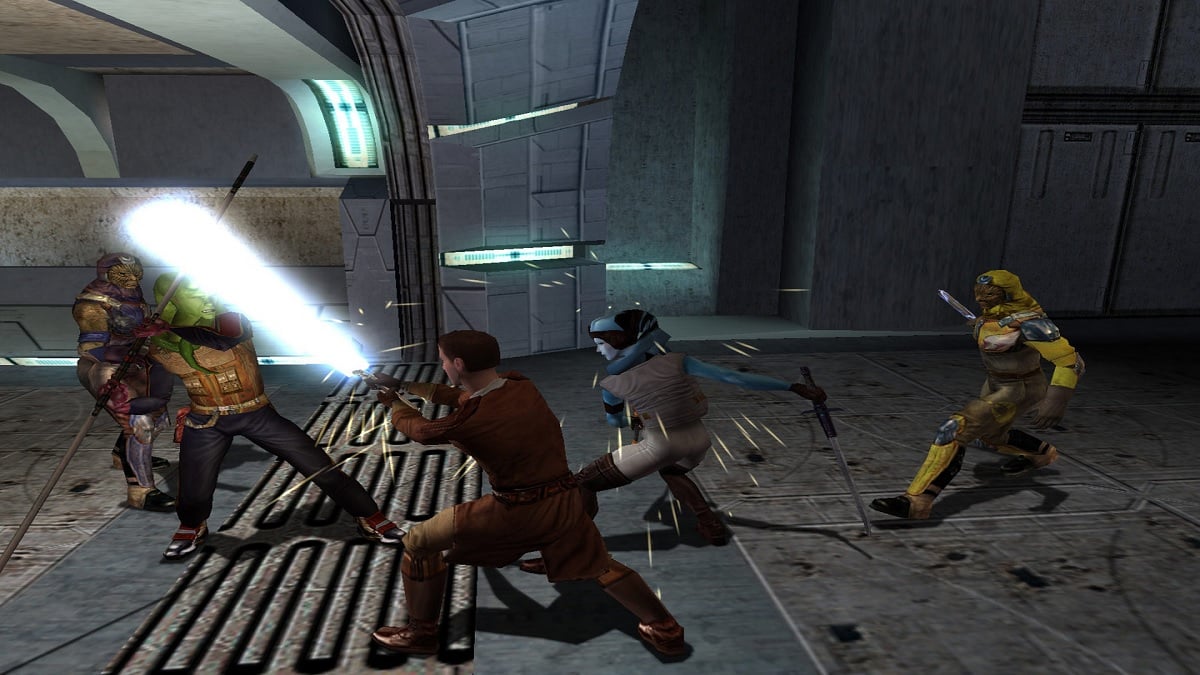 Image via MobyGames[/caption]
Image via MobyGames[/caption]
#2: Star Wars: Knights of the Old Republic
Even now, almost a full twenty years after its release, Star Wars: Knights of the Old Republic remains the best single-player Star Wars title to date. While diehard fans can point to many contributing factors, core among them was the game’s extensive dialogue options. Tied into the morality system, (by which players’ actions would be judged as good or evil,) the player always has to be mindful of not only what they are saying, but who they are saying it to.
Choosing the “good” path may not always lead to a “good” relationship with that NPC character. Star Wars: Knights of the Old Republic makes it clear that while both the Jedi and Sith orders may traditionally deal in absolutes, you may find yourself walking a slightly murkier path. Between the stellar voice acting, the richly-sophisticated combat system, and the incredible worldbuilding, Star Wars: Knights of the Old Republic remains an out-of-this-world RPG that no Star Wars fan should overlook.
[caption id="attachment_358584" align="alignnone" width="1200"] Image via MobyGames[/caption]
Image via MobyGames[/caption]
#1: Star Wars: Battlefront II (2005)
It’s a little ironic, perhaps, that Battlefront II appears twice on the same list, but in both cases, the selection is easily justified. (This entry is not to be confused with #10 on this list, which is a 2017 sequel to the reboot of the Battlefront series.) While the original Star Wars Battlefront (released in 2004) was a resounding success, it was its sequel that really expanded the potential for what players could hope to see in a multiplayer Star Wars game.
From its 32-player multiplayer capacity to its drastically improved AI bots, there was, and still is, a lot to appreciate here. When you also consider the decent story campaign that rounds out the experience, there’s a lot to draw prospective players toward the battlefront.
The post 10 Best Star Wars Games of All Time, Ranked appeared first on Destructoid.
George Miller Wanted The Road Warrior To 'Overcome All The Mistakes' Of Mad Max
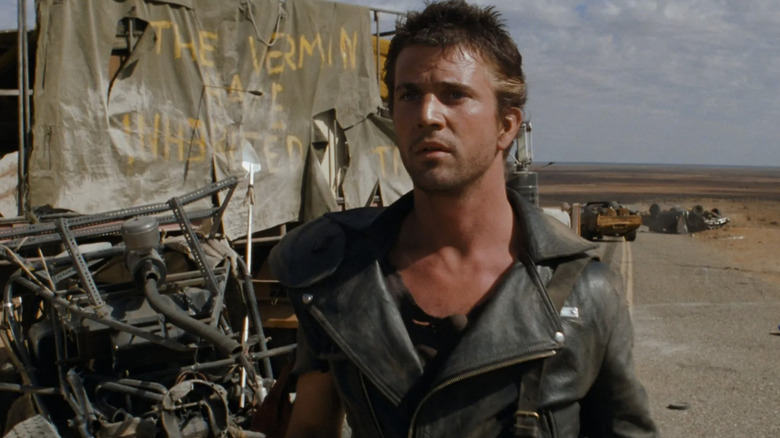
"Mad Max," George Miller's feature-length directorial debut, is a labor of love made on a shoestring budget. The director's story of a policeman driven to madness at the start of an apocalypse would end up spawning a franchise of five movies and even a video game, with a spin-off slated for 2024. Miller made the first trilogy of films in relatively quick succession, between 1979 and 1985. Still, the 30-year gap between "Beyond Thunderdome" and "Fury Road" led to a significant difference between the films, both aesthetically and story-wise. This separation of quality wasn't the first time that happened in the series though. Perhaps one of the most impressive sequels ever made, "The Road Warrior" would become the new gold standard for "Mad Max" films, improving over the original film in many ways.
In an interview with Los Angeles Times in August 2022, Miller said that -- doing better than what you did before -- was the only reason he made the sequel to begin with. However, as the director pointed out, the relation of the quality of the film to its scope or size isn't mutually exclusive:
"You're striving to make each film better but not necessarily more. You're not looking for more; you're looking for it to be as good as it can be. You're definitely looking not to repeat what you've just done, and you are looking to make it, if you like, uniquely familiar. It's got to be its own thing."
Only Thing In Common Was Mel Gibson
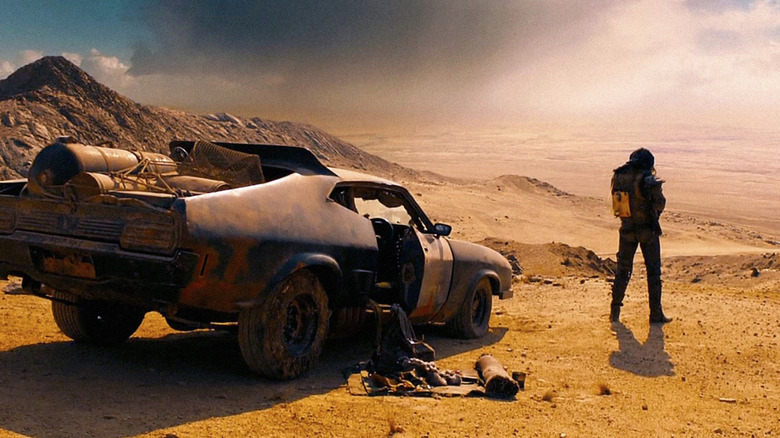
"The Road Warrior" continued the story of Max Rockatansky (Mel Gibson), turning the character into a post-apocalyptic legend. While Gibson's character still maintained that same humanity and tragic world-weariness, Max was elevated by the larger-than-life situation the sequel put him in. With expertly choreographed vehicular combat and a more detailed dystopia, "The Road Warrior" would prove superior to the original in every way. As it turns out, that was George Miller's one condition for making a sequel, something he initially had no intention of doing:
"After I made the first 'Mad Max' all those years ago, I didn't want to make another 'Mad Max' film. Then I made a second one. And for me, personally, it was on the condition that I was able to overcome all the mistakes that I thought I learned from the first film. So the second film had to be different from the first. So it was a different film in tone, style, and everything. The only thing really in common was that it was Mel Gibson."
Miller's "Mad Max" series would turn into something similar to an anthology, exploring a different corner of the post-apocalyptic wasteland with each new entry. Thanks to the mythic nature of Max, which was first established in "The Road Warrior," there wasn't a need for a cohesive narrative between films. Max wandered through the wasteland, coming upon different tribes and leaving his mark in a way only Miller could convey with insane vehicular action.
Doing A Remake Would Be Foolish
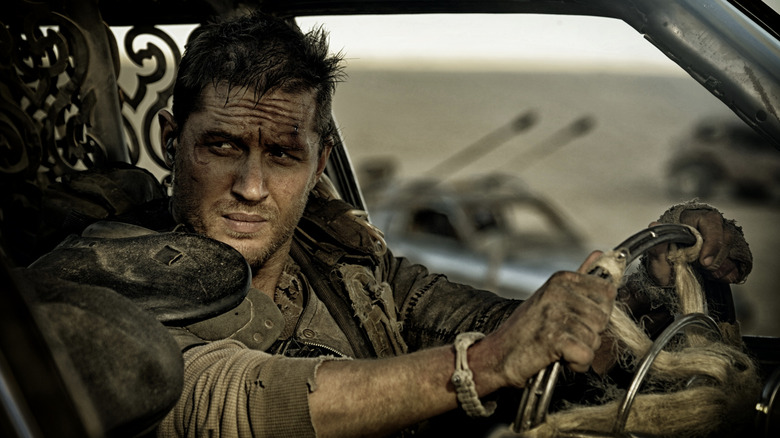
Interestingly enough, George Miller also told the LA Times that people had been telling him to make "Fury Road" more like "The Road Warrior." As great as that first sequel is and could still be considered the gold standard of action films, Miller isn't one to redo a movie. Just as each "Mad Max" film had been incredibly different from the one before it 30 years ago, so would "Fury Road" in 2015. More importantly, the director felt that all the advancements in how movies are made and what stories audiences expected to see drove him to make this next "Mad Max" film unique:
"I thought, 'Well, wait a minute, that was 30 years ago. Everything's changed. Not only have I changed personally, the world's changed. Cinema has changed, the way we read cinema has changed, and the way we make cinema's changed. If we were just to go back and I'm doing a remake of that film, we'd be fools.' So it had to be different."
It's admirable to see a filmmaker as talented as Miller is humble enough to see and learn from "mistakes" in his work. Beyond the director's recognition that bigger doesn't necessarily mean better, Miller's apprehensive nature about follow-ups and ensuring each sequel is wildly different from the other has helped turn "Mad Max" into a long-lasting franchise.
With Miller currently in post-production on the "Furiosa" spinoff, audiences can have faith that it'll be unlike anything the director has made up to this point.
Read this next: The 14 Greatest Action Movies Of The 21st Century
The post George Miller Wanted The Road Warrior to 'Overcome All the Mistakes' of Mad Max appeared first on /Film.
Ransomware Takeaways Q4 2022
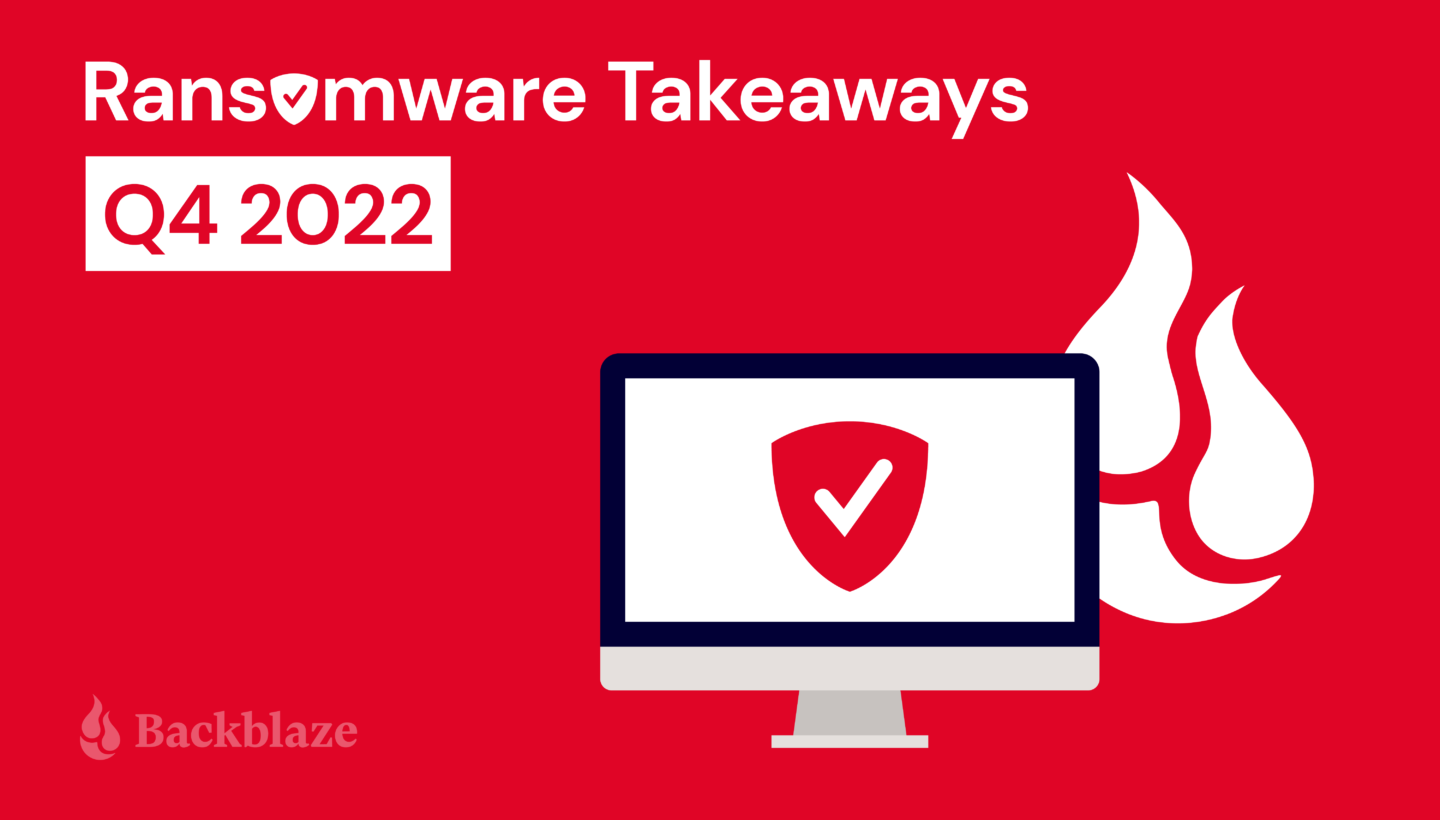
It may seem like ransomware is not in the news as much as it was in 2021 and the first part of 2022. Back then, major attacks and record-breaking ransom demands dominated headlines, and governments took action to make life more difficult for cybercriminals. But the spotlight is never a good place to be when you’re trying to defraud companies to the tune of millions of dollars. So, while you might be hearing about it less, that doesn’t mean that the threat of cybercrime is negligible. Exactly the opposite—the lack of media attention makes potential victims lower their guard, leaving vulnerabilities that cybercriminals love to exploit.
Staying up-to-date on the latest ransomware news keeps you informed of potential threats. And, keeping the latest threats fresh in your mind means you’ll be ready if and when cybercriminals turn their sights in your direction. We all hope that never happens, but it’s wise to be prepared in case it does. To arm you with the latest, here are some of the biggest developments in ransomware that we observed in Q4 2022.
- Ransomware: How to Prevent or Recover From an Attack
- Introducing the Ransomware Economy
- Object Lock 101: Protecting Data From Ransomware
- The True Cost of Ransomware
- 2021 Ransomware Takeaways: Q1, Q2, Q3, Q4
- 2022 Ransomware Takeaways: Q1, Q2, Q3
And, don’t forget that we offer a thorough walkthrough of ways to prepare yourself and your business for ransomware attacks—free to download below.
1. Many Ransomware Attacks Go Unreported in the Media
One possible reason you don’t hear about ransomware attacks is that they simply don’t get reported in the news. A study released in late 2022 by Jumpsec found that 86% of ransomware attacks go unreported in typical media sources in the UK. The attacks that do get covered are typically ones where the victims are legally required to disclose the attacks due to personally identifiable information (PII) being compromised. While public disclosure is uncommon, keep in mind that reporting requirements—that is, the legal requirement to disclose to the authorities—in the UK, U.S., and elsewhere are becoming more stringent. For example, in 2022, President Biden signed a bill into law that requires operators of critical infrastructure to disclose cyber attacks to the government within 72 hours.
Key Takeaway
It may seem like there’s no real incentive to disclose a cyberattack publicly. Why serve the greater good at the expense of your reputation, right? But, some organizations have found that being open and honest positions them ahead of the game. Chip Daniels, head of government affairs at SolarWinds, shared the positive response the company has received about their transparency, “I meet with somebody for the first time, they’ll say, ‘I just want to tell you, you guys are the gold standard on how you should respond to a cyber incident.’” Being seen as the “gold standard” isn’t a bad place to land after an attack.
2. Hospitals and Schools Continued to Be Targeted
Sadly, it’s not the first time we reported on the threat to hospitals and schools. It was highlighted in our very first Ransomware Takeaways report. In Q4 2022, cybercriminals showed no sign of letting up as CommonSpirit Health, a Chicago-based health provider with more than 700 care sites and 142 hospitals in 21 states, suffered a major attack that made patient records vulnerable. And earlier in the year, over Labor Day weekend, one of the largest school districts in the country—the Los Angeles Unified School District—was attacked as well.
Key Takeaway
Nonprofit and public sector institutions need budget-friendly options for implementing ransomware protection that work with their existing purchasing programs. Through government IT aggregators like Carahsoft, public sector decision makers can purchase affordable, capacity-based cloud storage to support their recovery objectives.
3. Ransomware Attacks Take a Psychological Toll
In news that should come as a surprise to no one who’s been through a ransomware incident, cyberattacks take a psychological toll, and new research from cybersecurity company Northwave released in Q4 2022 quantifies it. They measured the mental impacts of ransomware attacks at three points in time, within the first week, month, and year after an attack. At a month out, 75% reported having negative thoughts, and at one year, 14% reported symptoms of trauma requiring professional help.
Key Takeaway
Companies involved in a ransomware attack can take action to minimize negative effects on employees’ mental health. Northwave recommends having regular check-ins and breaks during the first phase, making space for rest and recovery time in the second phase, and creating an open environment in the third phase, where employees can talk about what happened and decompress.
4. Some Ransomware Is Badly Made, and All the More Dangerous
Researchers analyzed the Cryptonite ransomware strain, which first appeared in October 2022, and found that its “barebones” functionality makes it even more of a threat—there’s no way to recover encrypted files. Researchers point out that it’s likely not an intentional feature, but simply poor design.
Key Takeaway
Since the software is broken to the point where decryption is impossible, there’s absolutely no reason to pay the ransom if you fall victim to a Cryptonite attack. Instead, it makes sense to spend some time creating a disaster recovery plan so you can resume normal business operations as soon as possible. Researchers also report that phishing seems to be the most common attack vector for this ransomware strain, so it’s a good idea to ramp up your cybersecurity training.
5. A Vast Majority of Ransomware Attacks Attempted to Infect Backups
In November, Veeam released their 2022 Ransomware Trends report, a study of more than 3,000 organizations across 28 countries. Among their key findings: 95% of ransomware attacks attempted to infect backups. Of those attacks that targeted backups, 38% of respondents had some backup repositories impacted, and 30% had all of their backup repositories impacted.
Key Takeaway
One word: immutability. Protecting backups with Object Lock costs nothing to implement and prevents backups from being modified or encrypted by ransomware. With backups that can’t be altered, recoveries are much easier and more reliable.
Closing Thoughts
While you may not be hearing about as many high profile ransomware attacks as you once were, make no mistake that they’re still happening. Just know that there are steps you can take to keep your company from becoming the next victim, including protecting data with Object Lock, applying security best practices, and creating a disaster recovery plan.
The post Ransomware Takeaways Q4 2022 appeared first on Backblaze Blog | Cloud Storage & Cloud Backup.
Patrick Stewart Still Sees 'Enormous Potential' For Picard's Star Trek Future After Season 3
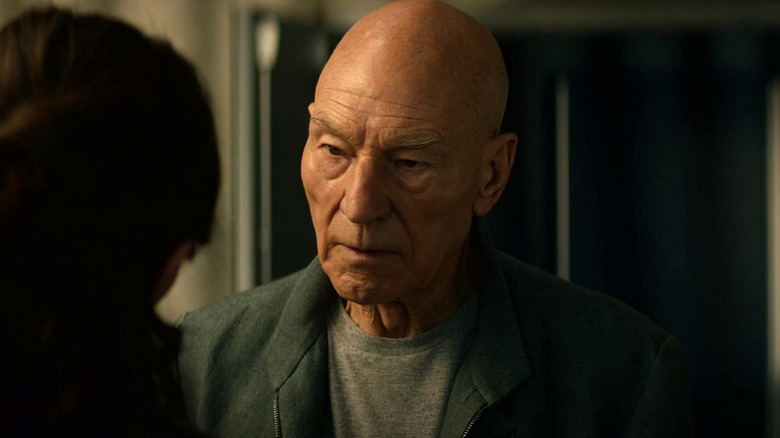
The third and final season of "Star Trek: Picard," which is set to arrive on Paramount+ shortly after Valentine's Day 2023, will come with a slew of returning "Star Trek: The Next Generation" characters. In addition to the eponymous admiral (Patrick Stewart), the third season will also feature LeVar Burton, Michael Dorn, and Gates McFadden. They will be joined by Jonathan Frakes, Marina Sirtis, and Brent Spiner, who have appeared on "Picard" in previous seasons. The reunification of that cast -- their first time on screen together since "Star Trek: Nemesis" in 2002 -- is reason enough to make some Trekkies wiggle in anticipation.
By its third season, "Picard" will take place in the early years of the 25th century. Picard is now a retired admiral, and is about 100 years old (Stewart himself is 82). He no longer has any interest in serving aboard a starship, and doesn't wear a uniform. The crises he faces over the course of the series have to do with his personal connections to the android character Data (in season 1) and to the omnipotent space deity Q (in season 2). He gathers a makeshift team of helpers, and treks out to solve oblique mysteries. In the show's third season, he will face off against a mysterious, revenge-oriented villain played by Amanda Plummer.
While Picard is a century old, a plot twist at the end of the show's first season saw his consciousness shunted into an identical android body. While the characters explain that he is definitely not immortal, there's no reason to believe that his mortality could be disabled, and that Picard could continue living in his artificial form for several centuries to come.
The future of the character may have much more in store.
Jean-Luc Picard: Tomb Raider
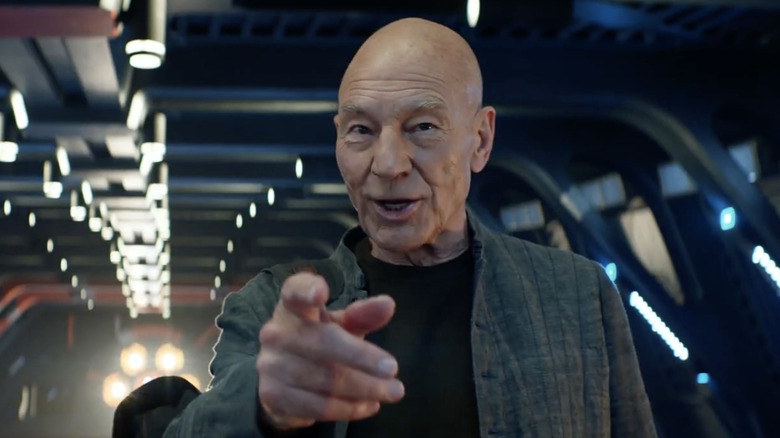
Patrick Stewart certainly seems to think Jean-Luc Picard's journey is far from over. Speaking to Deadline, the actor, who will likely leave his "Star Trek" days behind him after "Picard" season 3, said that he believes Jean-Luc himself will persist in perpetuity:
"There is still enormous potential for matters in what we can do and there are doors left open and we didn't close all of them."
Of course, Stewart has to remain coy about the plot of "Picard" season 3 prior to its airing, so the actual details of what doors are left open will have to remain under-wraps for the moment. Because this is the perfect time for speculation, one might consider a few exciting possibilities. Perhaps Picard will indeed be made an immortal android, or at least a being capable of living many more hundreds of years. Seeing as the character has always had a keen interest in archaeology, perhaps he will take a team of young, hotshot Indiana Jones-types under his wing and become a galactic tomb raider exploring long-dead alien civilizations.
While "Picard" season 3 was announced as the show's last, strong viewership could tempt Paramount into continuing the series in some other form (if not revive it outright). As "Picard" co-creator Alex Kurtzman told Deadline:
"If the show blows the doors off the place, and we're certainly hoping it will as we're very proud of season three, who knows?"
The message here, then, is clear: Subscribe to Paramount+, talk about "Picard" on social media, and we'll definitely get the "Jean-Luc Picard: Tomb Raider" TV series spinoff we clearly all want to see. His first stop will have to be retrieving the Kurlan Naiskos from the Federation archive.
"Star Trek: Picard" season 3 will premiere on February 16, 2023, on Paramount+.
Read this next: Every Star Trek Show And Movie In Chronological Order
The post Patrick Stewart Still Sees 'Enormous Potential' For Picard's Star Trek Future After Season 3 appeared first on /Film.
Fewer Companies Are Paying Ransoms To Hackers, Researchers Say
Read more of this story at Slashdot.
Supreme Court Poised To Reconsider Key Tenets of Online Speech
Read more of this story at Slashdot.
The 10 Best Carrie Fisher Roles That Aren't Princess Leia
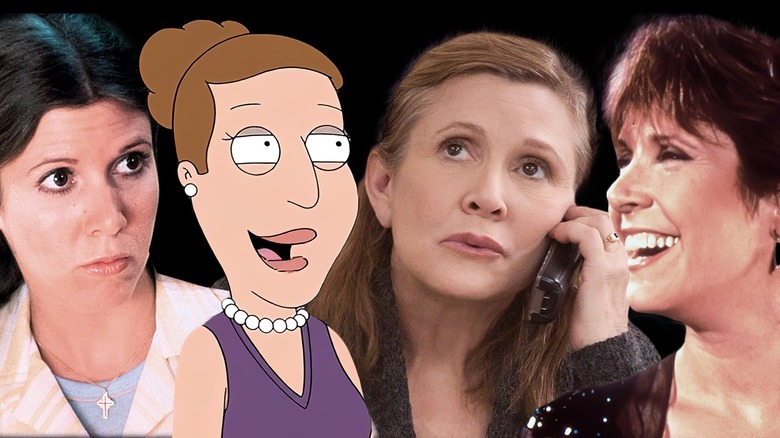
To fans of "Star Wars," Carrie Fisher will always be Princess Leia Organa, the role that remains her most iconic. And why shouldn't it be? Fisher introduced Leia in the 1977 sci-fi blockbuster, reprised her in two sequels, and then reintroduced her in a new batch of "Star Wars" films nearly four decades later. A true Hollywood scion (Fisher's parents were famed singer Eddie Fisher and legendary movie star Debbie Reynolds), Fisher pulled off the rare feat of carving out her own niche as an actor, stepping out from the considerable shadows of her famous folks. In fact, Leia was far from Fisher's only role, simply her best-known from a unique and eclectic career that spanned from her 1969 screen debut -- playing a Girl Scout in one of her mom's TV specials -- until her death in 2016 at the age of 60.
Beyond acting, Fisher created her own second act as she expanded from the screen to the page. Powered by her inimitable wit, Fisher went on to earn further acclaim as a writer, authoring bestselling novels such as "Postcards from the Edge" and "Wishful Drinking" -- the latter spun off from her one-woman show and subsequent HBO special, a great example of Fisher's literary and acting careers intersecting. To explore her onscreen work beyond a galaxy far, far away, keep on reading for a look at the 10 best Carrie Fisher roles that aren't Princess Leia.
Lorna Karpf In Shampoo (1975)
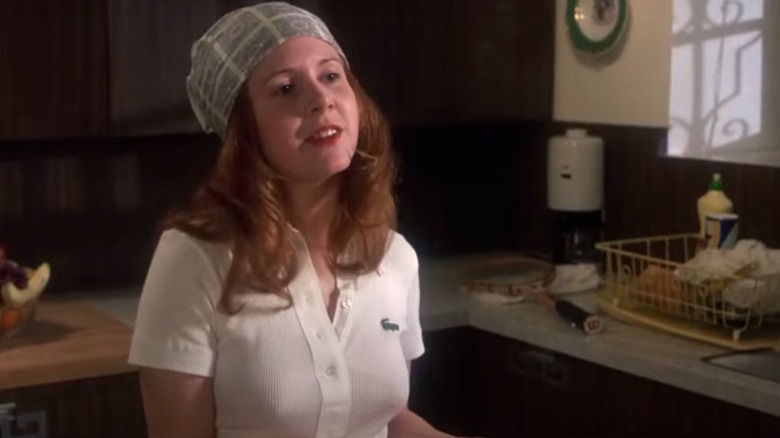
Carrie Fisher was just 17 years old when she made her film debut in the classic 1975 comedy "Shampoo," in which Warren Beatty starred as lothario Beverly Hills hairdresser George Roundy, precariously leaping from one sexual encounter to the next. Fisher's role isn't a big one, but she delivers a scene-stealing performance as Lorna Karpf, the precocious teenage daughter of one of George's many girlfriends (played by Lee Grant). When George drops by, Lorna accuses him of being gay -- he is a Beverly Hills hairdresser, after all -- but with an endgame of goading him to sleep with her in order to tick off her mom, whom she loathes. George, being George, can't help himself, resulting in an awkward scene when Lorna's mother returns home, only to find Lorna sitting on a bed as George exits the bathroom, buckling up his belt. Not only did the teenage Fisher hold her own against one of Hollywood's biggest names, but she also exuded her own unique star quality while doing it, placing herself firmly on Hollywood's radar.
While Lorna may have bedded Beatty's character, life did not imitate art in that particular case. That was not, however, due to Beatty's lack of trying. "He offered to relieve me of the huge burden of my virginity. Four times," Fisher said of Beatty during an interview with Madonna for Rolling Stone. "That was the big offer. I decided against it. I decided for reality over anecdote."
Mystery Woman In The Blues Brothers (1981)
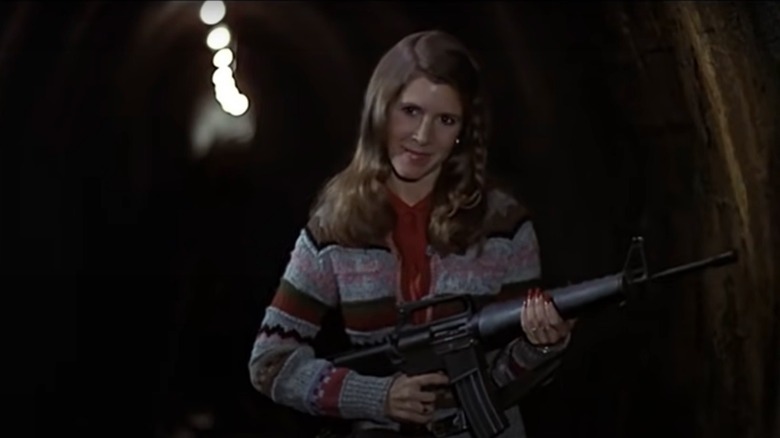
Carrie Fisher was still starring as Princess Leia in the original "Star Wars" trilogy when she appeared in the 1981 comedy "The Blues Brothers." Her role was not a large one -- comprising about six minutes of screen time -- but does make an impression. Billed simply as "Mystery Woman," Fisher's character pops up at intermittent points in the movie as she attempts to assassinate titular Blues Brothers Jake (John Belushi) and Elwood (Dan Aykroyd), using methods ranging from a rocket launcher to planting a bomb in their seedy hotel room.
The character's identity is ultimately exposed as Jake's jilted ex when she corners Jake and Elwood in an underground tunnel and fires at them with a machine gun. After she complains about how Jake left her waiting at the altar "in celibacy" -- after her father used up his last favor with mobster Mad Pete Trullo to hire a fleet of limos and "the best Romanian caterers in the state," no less -- Jake reels off a litany of excuses: "I ran out of gas. I had a flat tire. I didn't have enough money for cab fare. My tux didn't come back from the cleaners. An old friend came in from out of town. Someone stole my car. There was an earthquake, a terrible flood -- it wasn't my fault!" Shockingly, Jake's excuses melt her murderous resolve, leading Jake to give her a big kiss before literally dropping her in the mud.
April In Hannah And Her Sisters (1986)
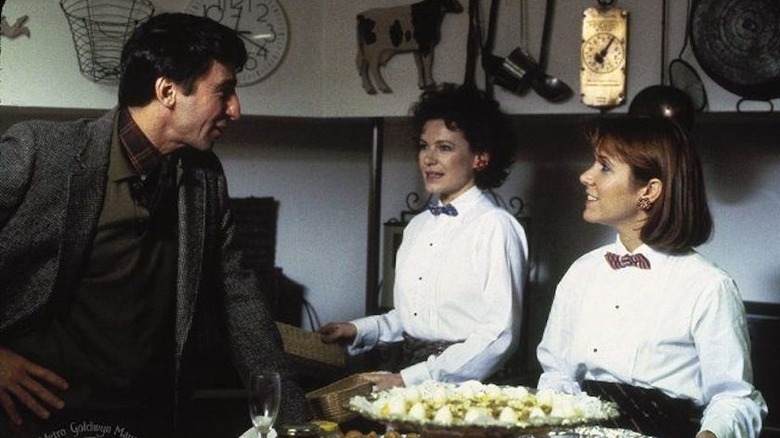
While Carrie Fisher played neither Hannah nor a sister, she did make a lot out of a small role in Woody Allen's 1986 dramedy "Hannah and Her Sisters." Fisher played struggling actress April, friend and business partner of Dianne Wiest's Holly in their aptly-named Stanislavski Catering Co. The two also end up becoming romantic rivals for the attention of Sam Waterston's character, narcissistic architect David, whom they meet while catering a party. He takes the two women on an architectural tour of New York City, with Holly perturbed to see April's flirtatiousness is seemingly far more effective than her own. Another far-briefer scene features April auditioning for a role, showcasing Fisher's talent as a singer as she tackles the Jerome Kern classic "The Way You Look Tonight." While Fisher is hardly the focus of the film, she sparkles ebulliently whenever she appears onscreen.
Speaking with the New York Times in 1986, Fisher recalled how Allen shaped her performance, which was apparently too broad for his liking. During a scene at a party, in which her character wonders why there aren't any fascinating single men, Allen gave her some notes. ''He thought I was smiling too much and gesticulating like an old Jewish woman,'' Fisher explained. ''He told me, 'You're coming in like my Aunt Velma.' And he showed me what his Aunt Velma was like.''
Marie In When Harry Met Sally (1989)
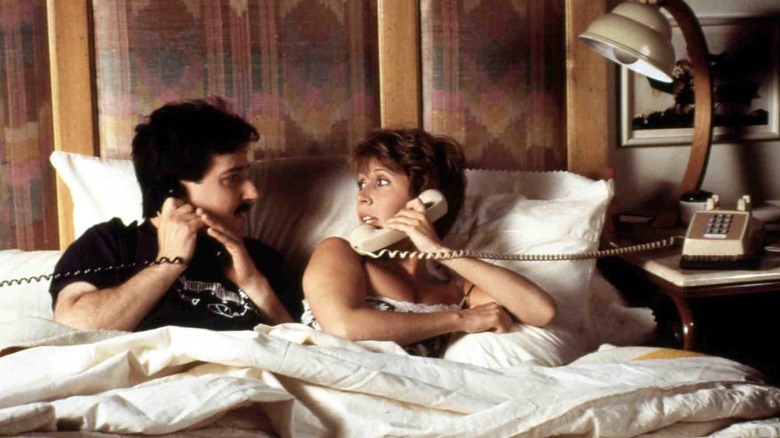
Arguably one of the most iconic rom-coms of the late 1980s, "When Harry Met Sally" followed the rocky path to true love faced by the polar-opposite title characters, played by Billy Crystal and Meg Ryan. And while the movie is dominated by that relationship, director Rob Reiner also crafted a compelling B-story that runs throughout the film. That storyline chronicles the meeting, ensuing romance, and eventual marriage of the title characters' respective best friends, with Carrie Fisher playing Marie opposite Bruno Kirby's Jess. When viewers first meet Marie, she's ensconced in an unfulfilling affair with a married man, desperately clinging to the hope that he'll leave his wife while knowing it won't happen. Fisher once again steals every scene she's in, particularly with her character's mantra whenever Sally points out her paramour is never getting divorced: "You're right, you're right. I know you're right."
It didn't hurt that Fisher is given some of the funniest lines in the Nora Ephron-penned script, such as, "Everybody thinks they have good taste and a sense of humor, but they couldn't possibly all have good taste." One thing even the film's most diehard fans may not realize is that Fisher was an uncredited contributor to the script; she went on to do that professionally for a number of films, punching up screenplays as a "script doctor" for a wide array of films, including "Hook," "Sister Act," "Lethal Weapon," "Scream 3," and many others.
Betsy Faye Sharon In Soapdish (1991)
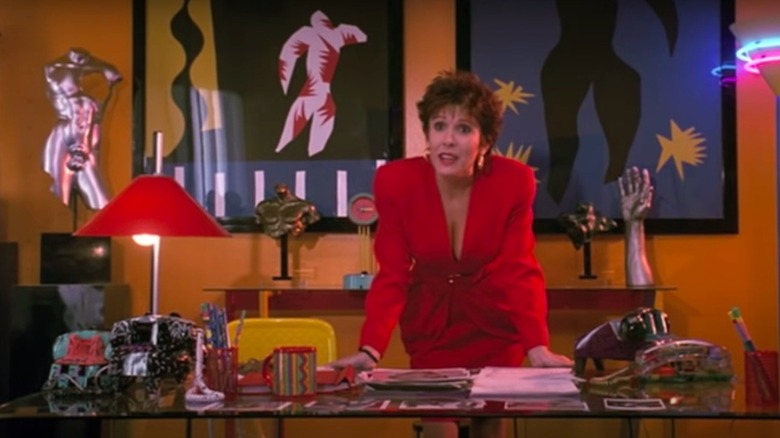
Set within the world of daytime television drama, the 1991 comedy "Soapdish" followed the behind-the-scenes shenanigans on "The Sun Also Sets," the fictional show starring beloved soap star Celeste Talbert (Sally Field). Among a top-shelf cast that also included Robert Downey Jr., Elizabeth Shue, Kevin Kline, Whoopi Goldberg, and Teri Hatcher, Carrie Fisher proved to be a standout as the show-within-the-film's casting director, Betsy Faye Sharon. As was usually the case whenever Fisher made a brief appearance in a movie, she does a lot with a little in a scene when she meets Shue's character, who introduces herself as an actress. "An actress! Really! How nice for you!" Fisher's character says with faux friendliness that barely conceals the ferocity she then reveals. "I'm Betsy Faye Sharon -- and I'm a b***h," she adds. "Now get out of here!"
By that point in her career, Fisher had already established herself as a novelist, something she referenced hilariously in a brief interview with MTV alongside "Soapdish" co-star Downey. When he implores people to see the movie, joking that it will "up our quotes," she wittily retorts, "Well no, it'll up your quote. But I'll probably get a quote on my book jacket from someone at MTV."
Nun In Jay And Silent Bob Strike Back (2001)
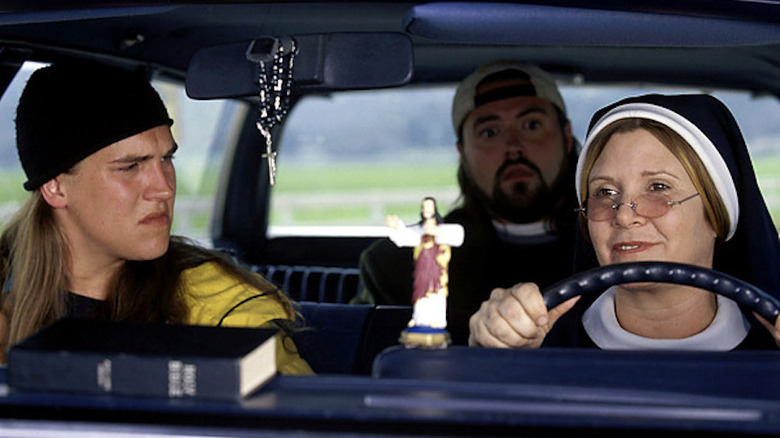
Carrie Fisher was among the many stars to make a cameo in director Kevin Smith's Hollywood spoof "Jay and Silent Bob Strike Back," an impressive list that also included legendary comedian George Carlin, "Saturday Night Live" alum Will Ferrell, and former "Daily Show" host Jon Stewart. Fisher appears in one scene as a nun who picks up the movie's hitchhiking protagonists, Jay (Jason Mewes) and Silent Bob (Smith). The ride doesn't last long, and she kicks them out of the car after a misunderstanding about what it means to live by "the book" (she, of course, means the Bible, while Jay assumes she means the unwritten book of the road, in which hitchhikers repay those who pick them up with a very specific sexual act). According to Smith, Fisher took no salary for the role. "CARRIE FISHER agreed to be in STRIKE BACK for no money," he tweeted. "She just wanted us to buy a pair of antique beaver chairs. When I met her on set, I asked 'Why the chairs?' She said, 'I thought beaver was ironic currency to be in your movie.' Loved her so much."
Interestingly, that wasn't the only movie to feature Fisher as a nun. Just two years later, she plays Mother Superior in the sequel "Charlie's Angels: Full Throttle," which managed to slyly reference both "The Blues Brothers" and "The Sound of Music."
Angela In Family Guy (2005-2017)
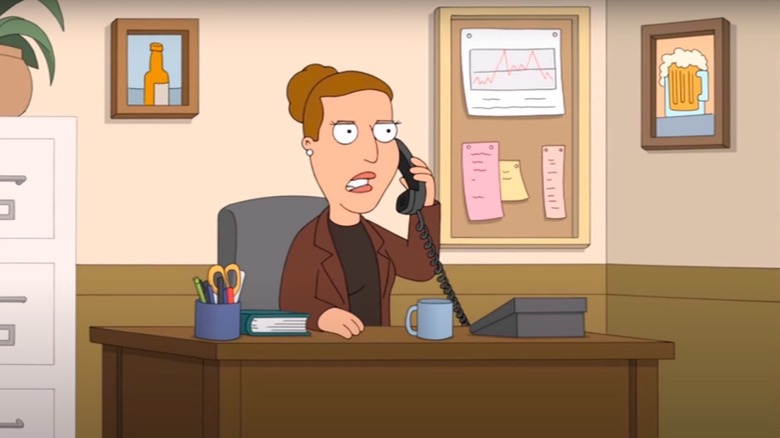
Princess Leia wasn't the only long-running role that Carrie Fisher held. Beginning in 2005, she began providing the voice of Angela (no last name), the no-nonsense boss of cartoon patriarch Peter Griffin in 25 episodes of the animated comedy "Family Guy." Interestingly, when the show produced its famed "Star Wars" spoof episode, Fisher didn't play Leia -- that role went to Lois Griffin, voiced by Alex Borstein -- but space politician Mon Mothma, casting that reportedly tickled Fisher. While Angela could have easily come across as a one-dimensional caricature, Fisher's performance wound up shaping how writers depicted the character over the years. "It would be easy for a less capable actress to make that character kind of one-note, gruff and yelling all the time," "Family Guy" executive producer Steve Callaghan told Entertainment Weekly. "But Carrie brought to it a depth that I don't think just anyone could have. And it enabled us to do some of the types of episodes ... where we got to know her on a deeper level."
After Fisher's death, the show paid tribute by having Peter provide a eulogy for Angela, who died in the show. Naturally, Peter's words were more a goodbye to Fisher than the cartoon character she voiced. "She may be gone, but her voice will live on in DVD and Hulu Plus and tiny droid-projected messages," Peter said. "I may have lost a boss, but heaven has gained a princess."
Rosemary Howard In 30 Rock (2007)
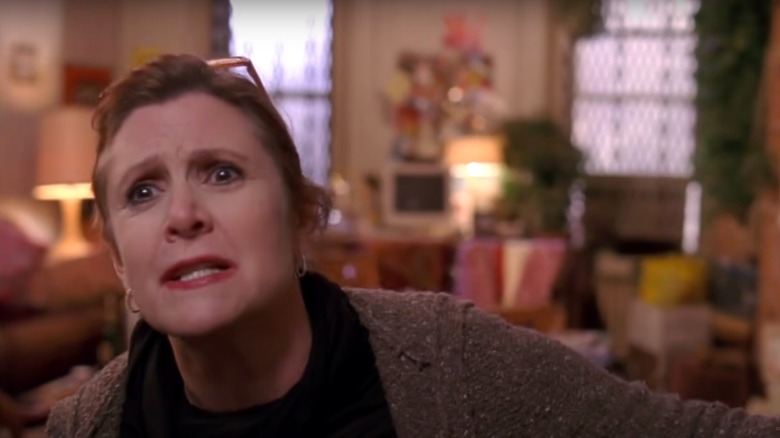
Carrie Fisher was among the many guest stars to grace "30 Rock," the acclaimed NBC sitcom starring and co-created by Tina Fey. Fey played Liz Lemon, head writer of NBC late-night sketch comedy show "TSG," and Fisher appeared in an episode as Liz's idol, Rosemary Howard, a groundbreaking feminist comedy writer whom Liz invites to be a "TSG" guest writer. While Liz is initially awestruck, she soon comes to realize Rosemary's path may not be one she wants to follow -- particularly after visiting her rodent-infested apartment in the "Little Chechnya" neighborhood, and realizing that the thermos she continually slugs from isn't filled with coffee, but wine. Yet beyond the hilarity, the character also makes a scathing point about Hollywood ageism and sexism -- one that Fisher, as a female actor of a certain age, had certainly experienced. "Rosemary says that women become obsolete in this business when there's no one left that wants to see them naked," Liz muses at one point.
Of course, that point is made hilariously, while offering Fisher the chance to stretch out by playing a washed-up writer whose refusal to bend her idealism led her to an existence of poverty and squalor -- as evidenced by a shot in which some Emmys and a few Golden Globes are strewn on a cluttered desk next to a 1990s-era computer. There's also the requisite "Star Wars" shoutout when Liz exits Rosemary's apartment and Rosemary follows after, declaring, "Liz Lemon -- you're my only hope!"
Angela McKinnon In Legit (2014)
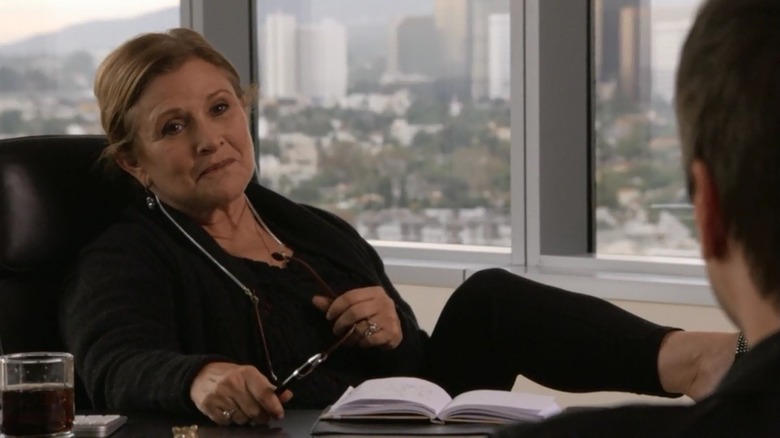
One of Carrie Fisher's best but lesser-known roles was her guest spot as Hollywood comedy development executive Angela McKinnon in FX comedy "Legit," a brilliant show that few people watched. In the episode's most hilariously cringe-inducing scene, Angela is interviewing the show's protagonist, Australian comedian Jim Jefferies (playing a skewed version of himself), who's desperate to be cast in anything. Angela, lifting one leg onto her desk, offers a suggestion, one that she says has led to guaranteed steady work for other actors: He performs oral sex on her, making her indecent proposal using far less delicate language (the episode's title, after all, is "Licked"). Jim is simultaneously horrified, confused, and more than a little uneasy -- but winds up doing it anyhow, particularly after she repeats her demand numerous times. As Jefferies revealed in an interview with GQ, it took a certain amount of subterfuge and finesse to convince the network to allow the beloved "Star Wars" icon to say that profane phrase 13 times. "To get 13, we put it in maybe 30-something times so we could negotiate to that figure," Jefferies explained.
Following Fisher's death, Jefferies paid tribute on Facebook. "Working with Carrie Fisher was a real highlight of my life," he wrote. "We talked about life and love and loss .... and 'Star Wars.' She was funny, sweet and smart. The whole time I was acting with her I felt like a child. It was really hard to keep my cool."
Mia In Catastrophe (2015)
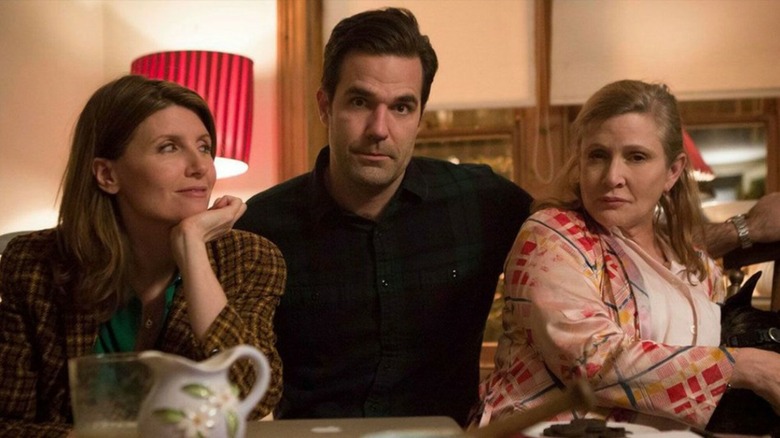
One of Carrie Fisher's final screen roles is also one of her most memorable: Mia in the British comedy series "Catastrophe." Mia is the mother of Rob Delaney's Rob Norris, an American man who becomes an accidental co-parent with Irish woman Sharon Morris (Sharon Horgan) after a booze-fuelled one-night stand results in an unplanned pregnancy. Fisher appeared in five episodes, proving her penchant for stealing scenes -- particularly impressive given she was the only actor in the show whom Horgan and Delaney, the show's co-creators, allowed to ad-lib. One particularly memorable scene, in which Mia discusses her bizarre TV-viewing habits (the faux reality show "My Kids Are Schizophrenic" is a favorite), was totally made up by Fisher on the spot. "She loved playing Mia, she totally got it. You never had to explain it to her, she just did it," Horgan told the Express. "The first scene she did was me and her talking on the phone and I was supposed to be inviting her to our wedding and we ended up in the scene insulting each other and putting the phone down."
Horgan and Delaney came to firmly believe Fisher only joined the show for free trips to London, where the show shot, so she could visit friends. "We don't think she watched the pilot or read the script . . . she literally learned what the show was well after it had already aired," Horgan recalled, via Page Six.
Read this next: Star Wars Characters That Are More Important Than You Knew
The post The 10 Best Carrie Fisher Roles That Aren't Princess Leia appeared first on /Film.
